- Naval Sea Systems Command (NAVSEA)
- SeaPort- NxG

ePathUSA proudly participated in the 2025 GEOINT Symposium, with our President engaging industry leaders to discuss the future of geospatial intelligence. As an 8(a) and women-owned small business, we continue to advance mission-critical solutions supporting national security through innovative technology and strategic partnerships.



ePathUSA was honored to attend the Black and Brown Business Summit in West Des Moines—an inspiring event filled with meaningful connections and fresh perspectives. Christine’s powerful keynote left a lasting impact, reinforcing the importance of diversity, collaboration, and innovation in business.

The leadership team at ePathUSA proudly participated in Google Cloud Next 2025 in Las Vegas, immersing themselves in the latest breakthroughs in AI and cloud technology. The event delivered invaluable insights into transformative innovations, reinforcing our commitment to delivering forward-thinking, high-impact solutions for our clients. As digital transformation accelerates, we’re excited to integrate these advancements to help our clients thrive in a constantly evolving tech landscape.

Our Managing Director, Rasesh Patel, participated as a panelist at the CMS Event in Columbia, Maryland on April 1, 2025. The session, Navigating CMS – Policies, Programs, Products, Procurements & Partnerships, brought together key industry and government leaders. Rasesh contributed insights on market trends and CMS-aligned innovation, helping to shape a valuable and forward-thinking dialogue.
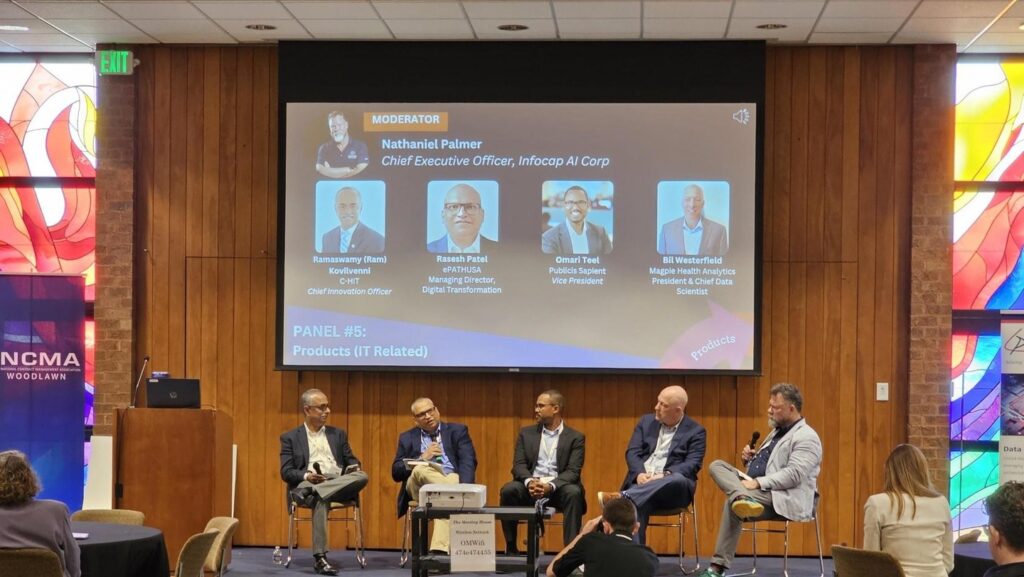

ePathUSA participated in the 2025 National Small Business Conference hosted by the National 8(a) Association in New Orleans. The event brought together government leaders, small business owners, and industry experts to explore opportunities in federal contracting. It was a valuable platform to gain insights, build connections, and strengthen our presence in the government contracting space.




We're excited to announce that ePathUSA Inc. has been awarded a contract By Delaware Health & Social Services (DHSS) to support migration of existing website into WordPress!
The project will focus on a lift-and-shift of the legacy website, part of our digital transformation initiatives. Our team has already hit the ground running on this exciting endeavor and working with exceptional team at DHSS. This win not only demonstrates our commitment to modernizing government agencies with efficient solutions.

Delighted to have the opportunity to showcase ePathUSA, Inc. at the CDC/HHS Small Business Conference in Atlanta, GA! Being part of this remarkable event dedicated to bolstering small businesses is truly an honor. I relished absorbing valuable insights, connecting with fellow entrepreneurs, and delving into fresh avenues for growth!
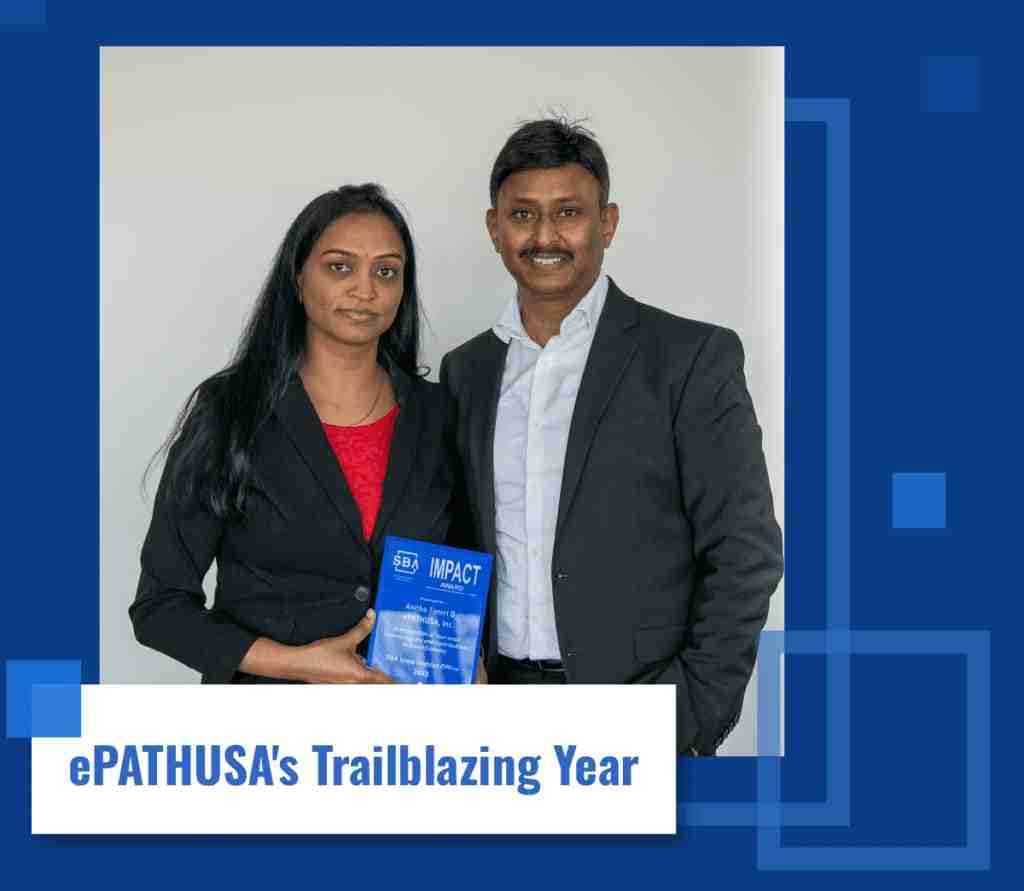
As the calendar turned to 2023, ePATHUSA embarked on a journey marked by resilience, innovation, and success. This blog post delves into the notable achievements of the past year and outlines the visionary goals that will shape the company's trajectory in 2024.
ePATHUSA's journey through 2023 was one of triumphs and recognition, laying a strong foundation for the ambitious goals set for 2024. As the company continues to innovate and grow, it remains poised for even greater achievements in the competitive world of government contracting. The future is bright for ePATHUSA, and its commitment to excellence is unwavering.

ePathUSA is grateful and excited to announce that the Minnesota Metropolitan Council has awarded us a contract to support their IT Professional Services - The Met Council provides essential services and infrastructure — Metro Transit's bus and rail system, Metro Mobility, Transit Link, wastewater treatment services, regional parks, planning, affordable housing, and more — supporting the communities and businesses in the Twin Cities and improving the quality of life for its residents. ePathUSA looks forward to serving the mission of the Met Council by providing exceptional value and IT services.

We are thrilled to have ePATHUSA, Inc. featured in the CIRAS - Iowa State University's Center for Industrial Research and Service Search's (@CIRAS) Summer edition of the CIRAS News magazine. The paper highlights our journey and achievements as a government contractor, especially in the federal 8(a) and Women-owned small business categories. We are grateful to receive the 2023 NATIONAL ASSOCIATION OF WOMEN OWNED SMALL BUSINESSES, INC. (NAWOSB) of the Year award from the National 8(a) Association and HUBZone Contractors National Council.
We look forward to providing even better results this fiscal year, including at the Department of Defense. We are thankful for the opportunities to be your IT consulting partner!

ePATHUSA is excited to be at the Iowa Small Business focused Entrepreneur Expo with Senator Joni Ernst. We are thankful for Senator Joni Ernst and her efforts to bring federal contracting to Iowa. Our CEO and Vice-President were delighted to hear from the Senator and meet with other Iowan businesses.

Our journey is a testament to an exceptional team whose dedication and brilliance have turned challenges into victories. We've conquered industry hurdles and set new benchmarks, making our path truly extraordinary. With each year, we've grown in strength and innovation, and our future shines brighter than ever.
Our team is more than just a workforce; it's a dynamic community fueled by shared goals and aspirations. Together, we've cultivated an environment that nurtures creativity, collaboration, and success. Our achievements are a testament to the incredible things we can achieve when we unite as one.

ePATHUSA is pleased to have participated in the 3rd Annual Black & Brown Business Summit, held last week in West Des Moines, IA. This summit brought together a diverse group of entrepreneurs and professionals to connect, receive training, and advance the minority business community across the country.
We are proud to have had Hari Nallure, Vice President of ePATHUSA serve as a speaker in the Government Contracting session, sharing valuable insights on doing business with the government. A big thanks to the City of West Des Moines, West Des Moines Chamber, and all the Sponsors for organizing this momentous event!

We are thrilled to announce that ePATHUSA, Inc. was awarded the Woman-Owned Business of the Year at the National 8(a) Association and the HUBZone Contractors National Council‘s Gala on Feb 15, 2023!
We are deeply grateful for this recognition, and we extend our #congratulations to all other amazing finalists and small business participants of the awards.
A big thank you to the organizers for putting together such a fabulous event! Additionally, we extend our heartfelt thanks to our hardworking and dedicated employees who played an integral role in this incredible achievement. We couldn’t have done it without you!

We are thrilled to announce that 2023 has started on a positive note for ePATHUSA, Inc.! On March 20, 2023 ePATHUSA has been honored with a prestigious SBA IMPACT Award by SBA Iowa District at West Des Moines Council meeting. We are deeply grateful for the support and recognition of the U.S. Small Business Administration (Iowa), West Des Moines Chamber of Commerce, City of West Des Moines and City Council. Our President, Co-founder Anitha Timiri G, Hari Nallure is thankful to Dawnelle Conley & Jayne Armstrong
for their guidance and continued support. We are proud of our dedicated staff ePATHTeam who continuously strives to excel in the industry, and assist clients nationwide and help small businesses in the community. Thank you for your unwavering dedication!

Shoutout to Center for Industrial Research and Service (CIRAS) APEX for spreading the word about ePATHUSA'S award in your recent newsletter to Iowa State University CIRAS! Your support is instrumental in helping ePATHUSA reach a wider audience and celebrate success.

In honor of Women's History Month, ePATHUSA celebrates all women today, this month, and always! We celebrate your strength, resilience, and achievements.
Thank you for inspiring us every day!

We are excited to announce that ePATHUSA has been selected as a finalist for the National 8a Association and the HUBZone Contractors National Council's Women Owner Small Business of the Year! Congratulations to all of the businesses being celebrated at these upcoming awards during the National Small Business Industry Gala on February 15, 2023, at the World War II Museum in New Orleans, LA.
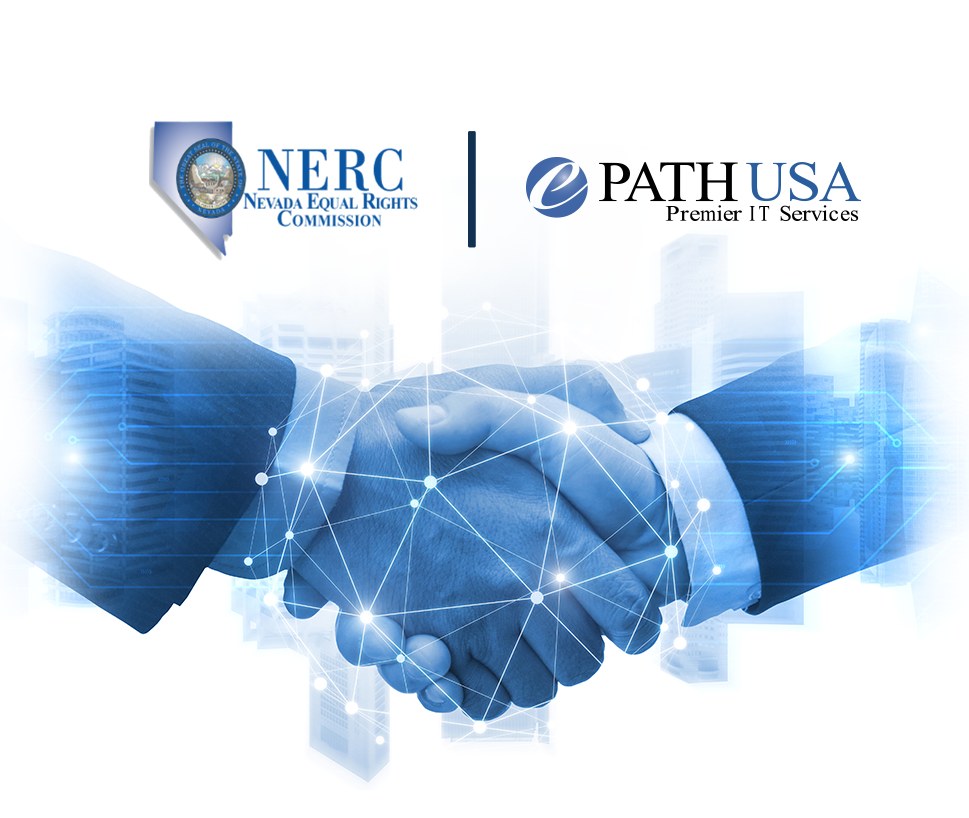
We are excited to announce that ePATHUSA Inc has been awarded a contract with the Nevada Equal Right Commission (NERC) to design, develop, and host a Case Management System on the Azure Government platform.
This is a significant achievement for our team and we are thrilled to be able to partner with the state of Nevada to bring innovative technology solutions to their organization. Thank you to the NERC team for their trust in our abilities and we look forward to a successful collaboration.

Anyone can experience trafficking in any community, just as anyone can be the victim of any kind of crime.
ePATH joined Iowa Businesses "Against Human Trafficking", and committed to support to stop this crime by raising awareness.
How can we help?
If you see a situation where you believe someone is being trafficked, here’s what you can do:
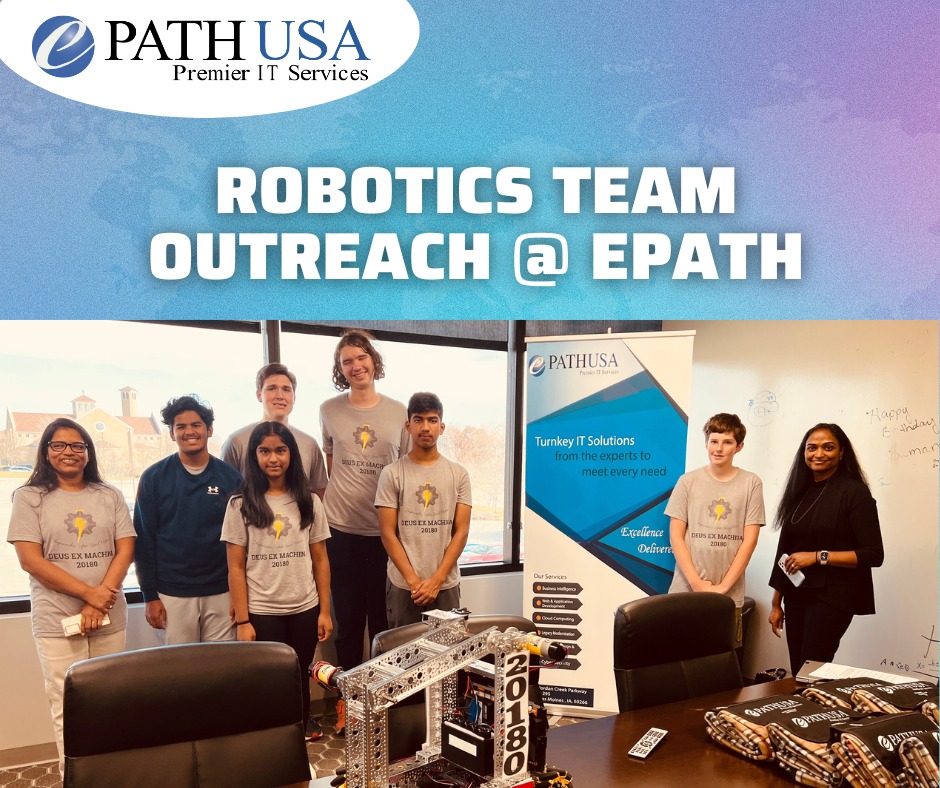
ePATHUSA was delighted to have the very talented group from the First Tech Challenge team - "Deus Ex Machina (20180)" with us yesterday and learn about their journey into robotic automation and their exceptionally innovate robot. We had a great interactive session with the bright Robotics team explaining and answering questions on how they built the robot and the roadblocks they faced building it.
ePATHUSA is always happy to foster educational, technical and innovation skills via the outreach programs in our local communities, especially schools and colleges. Our CEO, Anitha TG was present for the demonstration and from all of us at ePATHUSA, would like to wish the "Deus Ex Machina" team success in their future competitions.
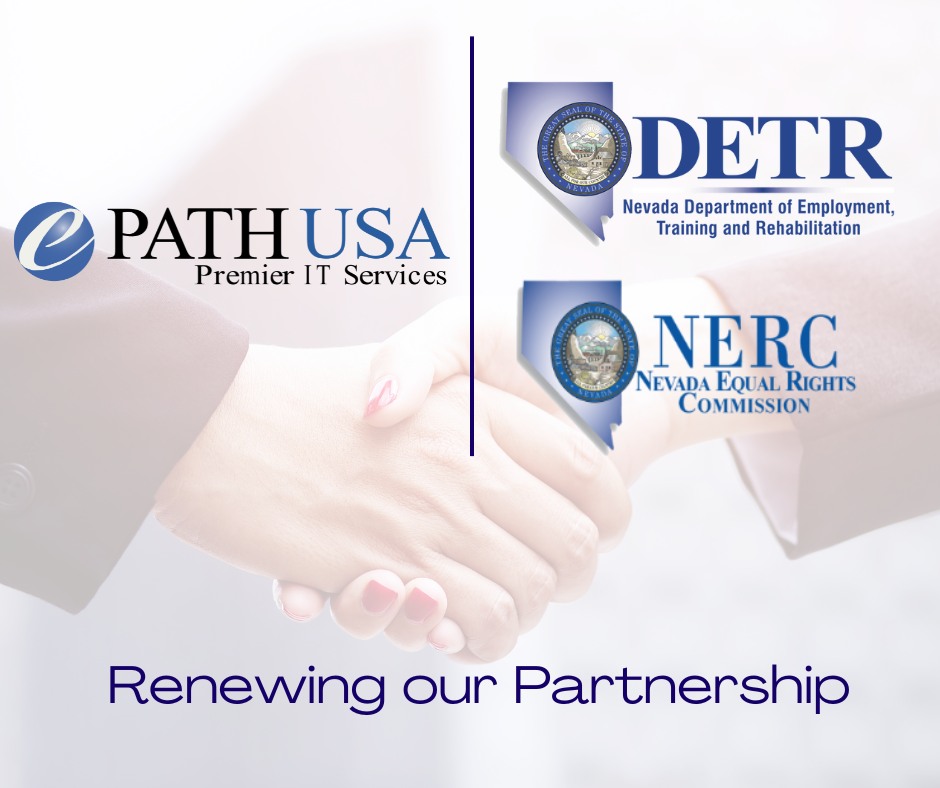
ePATHUSA has extended their relationship for another 4 years with the State of Nevada's Department of Employment, Training and Rehabilitation (DETR) division. We will continue to provide exceptional value and quality with our hosting and maintenance services using the Azure cloud platform. ePATHUSA is excited to support DETR and NERC (Nevada Equal Right Commission) and continue to serve their goal of helping Nevadans improve workforce skills and provide equal opportunities.
ePATHUSA is excited to continue our support of DETR and NERC (Nevada Equal Right Commission), and their mission of providing Nevadans with workforce skills and equal opportunities.

ePATHUSA has been awarded the MNIT/MDA AgBMP Automation Project. Part of this, ePATH will offer the requirements and solution design for the Loan Application. We look forward to working with the State of Minnesota and adding a new State into our portfolio.

ePATHUSA is pleased to announce that we have been awarded the Colorado Department of Labor and Employment's Empowerment Score Web Development contract. Under this contract, ePATHUSA will provide our premier web development services to the state of Colorado. We are immensely honored to be working with the state of Colorado, supporting the mission of the Department of Labor and excited for the opportunity to demonstrate our expertise in web solutions.
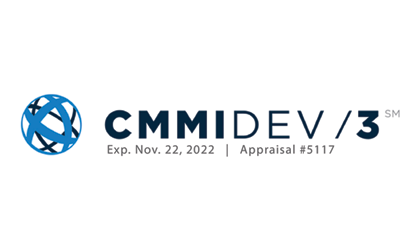
Today, ePATHUSA announced that it has been appraised at level 3 of the CMMI Institute's Capability Maturity Model Integration (CMMI). CMMI is a capability improvement framework that provides organizations with the essential elements of effective processes that ultimately improve their performance.
An appraisal at maturity level 3 indicates the organization is performing at a "defined" level. At this level, processes are described in standards, procedures, tools, and methods. The organization's set of standard processes, which is the basis for maturity level 3, is established and improved over time.
CMMI Institute is the global leader in the advancement of best practices in people processes, and technology. CMMI Institute's promise is to inspire cultures of continuous improvement that elevate performance and create sustainable competitive advantage.
CMMI Institute offers market-driven solutions that provide insights for baselining and optimizing key organizational capabilities, cyber maturity, and data assets to elevate business performance. For over 25 years, thousands of high-performing organizations in a variety of industries, including aerospace, finance, healthcare, information technology, software defense, transportation, and telecommunications, have achieved sustainable business success through adopting the CMMI and proved they are capable business partners and suppliers. To learn more about how CMMI can help your organization elevate performance, visit CMMIinstitute.com.

ePATHUSA is pleased to announce that we have received a Seaport Next Generation (NxG) Sub contract award indefinite-delivery/indefinite-quantity (IDIQ), multiple-award contract vehicle.
SeaPort-NxG is the Navy's electronic platform for acquiring support services in 23 functional areas including Engineering, Financial Management, and Program Management.
The government estimates the Navy will procure $5 billion worth of services annually through task orders issued under SeaPort-NxG. ePATHUSA looks forward to the opportunity to expand our services supporting the Navy.
Under this contract, ePATHUSA will support the U.S. Navy's main electronic platform for acquiring support services across 23 different functional groups, including groups under Engineering Services and Program Management.

We are happy to announce that the State of North Dakota has awarded ePATHUSA the "Information Technology Professional Services Contract Pool" contract.
The STATE has an ongoing need for Information Technology (IT) professionals in a variety of job classifications for both project-based and staff-augmentation work.
We are excited for the opportunity to work with the State of North Dakota and look forward to providing our premiere IT services.
Contract End Date is Sep 30th, 2025
To contact ePATHUSA regarding our IT services.

ePATHUSA CEO Anitha Timiri had the opportunity to sit down for an interview with Technology Association of Iowa (TAI) as part of their catalysts series. The founder of the IT consulting and services company discusses how her journey to the US, her technology and cultural background, and industry experience drive her success, values, and ideas. Read the the full article at the official TAI website here.
For more information ePATHUSA and our services, please follow the link here.
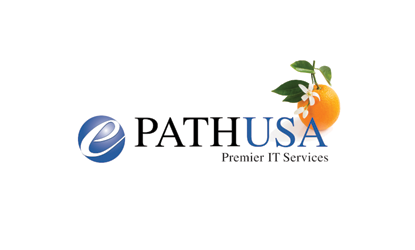
ePATHUSA Inc. is excited to announce that we have opened a new regional office in Florida. The new office will help facilitate ePATHUSA growth as we continue to expand our premier IT services across the United States. With experience operating in the Sun Belt, ePATHUSA has provided cloud computing, legacy modernization, and IT staffing services to the Southeast, including the State of Georgia. We look forward to bringing our brand of innovation to The Sunshine State!

ePATHUSA is honored to announce that we have been named the Best Diversity, Equity and Inclusion Champion during the first annual UScellular Best of the West Awards! A big thank you to everyone who nominated us for and to the West Des Moines Chamber of Commerce and City of West Des Moines for presenting the awards!
The competition aims to find the top businesses in West Des Moines across fifty categories, chosen by employees, businesses, and residents of the city. The West Des Moines Chamber of Commerce vision is to make West Des Moines the best suburban city in America to live, work, and play while giving area businesses the chance to take a bow and be recognized. ePATHUSA is humbled to receive this recognition alongside such an impressive lineup of local businesses.
Best of the West award winners can be found on the West Des Moines Chamber of Commerce site here.

ePATHUSA is honored to announce that we have been named the Best Diversity, Equity and Inclusion Champion during the first annual UScellular Best of the West Awards! A big thank you to everyone who nominated us for and to the West Des Moines Chamber of Commerce and City of West Des Moines for presenting the awards!
The competition aims to find the top businesses in West Des Moines across fifty categories, chosen by employees, businesses, and residents of the city. The West Des Moines Chamber of Commerce's vision is to make West Des Moines '"the best suburban city in America to live, work, and play' while giving area businesses '"the chance to take a bow and be recognized.' ePATHUSA is humbled to receive this recognition alongside such an impressive lineup of local businesses.
Best of the West award winners can be found on the West Des Moines Chamber of Commerce site here.
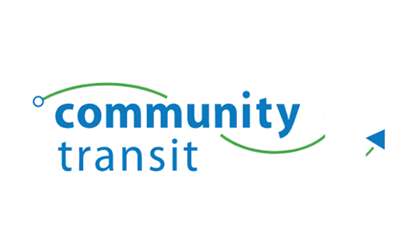
Community Transit, Snohomish County (WA) public transportation provider, has awarded ePATHUSA the On-Call IT Consulting Services Roster contract. The aim of the contract was to find IT-service providers who could provide a wide range of IT services. The contract will allow ePATHUSA to submit proposals for software and app design and implementation, business intelligence and analytics, staff augmentation, and technical writing and documentation among other IT-related services. We are proud to help Community Transit assist residents and travelers of Snohomish County get from where they are to where they want to be
For more information on Community Transit, follow the link here.
To contact ePATHUSA about our services, please follow the link here.

ePATHUSA is happy to announce that we have been awarded the Self-Exclusion Database Hosting and Maintenance contract with the Iowa Racing and Gaming Commission (IRGC). The contract is for the hosting and maintenance of the IRGC Self-Exclusion Database, which is used to record the status of individuals participating in the Iowa Voluntary Self-Exclusion Program. ePATHUSA will be responsible for the hosting, maintenance, and future enhancements of the Self-Exclusion Database. This will be accomplished through the management of the database, maintenance of cross-browser support, and the implementation of up-to-date web security. We are excited for the opportunity to work with the IRGC and look forward to providing our premiere IT services to our home state.
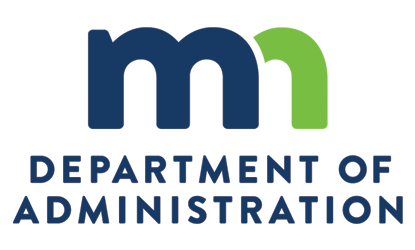
ePATHUSA is pleased to announce that we have been awarded the MNSITE (Minnesota Seeking IT Expertise) Program master contract. The state of Minnesota designed the MNSITE program as a means to procure IT-related services by way of a fast and intuitive process. The entity awarded the master contract is able to provide all requested IT services to the state of Minnesota. Under this agreement, ePATHUSA will provide our premier IT services to the state of Minnesota. We are tremendously honored to be working with the state of Minnesota and proud to be providing our expert IT solutions to our neighboring state.
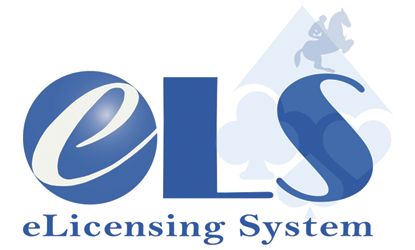
ePATHUSA is excited to announce our newest SaaS product, the ePATH eLS (electronic licensing system). The fully featured licensing and management system is an innovative yet intuitive platform for gaming and racing licensure for state governments. From entities to individuals, the ePATH eLS will be able to streamline and improve the licensing and license managing process. Features include an easy-to-navigate and update user interface, detailed search, and robust reporting. Additionally, the licensing system will be nonintrusive and easy to implement. The service will be available via cloud computing with a launch announcement coming at a later date. Until then, the ePATHUSA team can wait to share more details as the project nears completion!
For the latest news and updates from ePATHUSA, head over to the blog or follow us on social media:


The major challenges facing small businesses are numerous. Many businesses struggle to find the time to manage business operations while bringing in new customers. Additionally, businesses spend large amounts of money on advertising but don't have the resources to follow up with leads. ePATHUSA can help with that! In today's digital era, our services can help you put your business ahead of your competition!

To our Employees, Clients, and Partners,
COVID-19 is redefining professional and personal life, and we believe it is perfectly fine to adopt ingenious ways to adjust with the changing times. Our thoughts are with all of those affected by Corona virus and we want to reassure you that we are fully equipped to help and maintain projects. In this time of crisis, we took timely action to ensure safety of our teams besides maintaining business continuity. For our valued customers, we are leveraging leading-edge technology and remote solutions to help and maintain essential operations and offering super speedy response to customer queries, and even changed our business model to address emerging customer needs, supported by our committed and professional staff members to provide services.
As we prepare for what appears to be our “new normal†for the likely future, I want to take a moment to share these perspectives with you. We’ll continue to assess our plans based on guidance from Local & National governments and health authorities. I would like to lay out how the decisions we are making in response to COVID-19 align with the Company’s mission and the values all ePATHUSA team members share.
If you have questions or need assistance, please do not hesitate to reach out to your ePATH POC or email me directly at [email protected].
Please Stay safe & healthy and let us know how we can help.
Best regards,
Timiri G Anitha, CEO






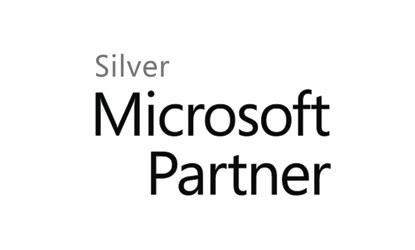

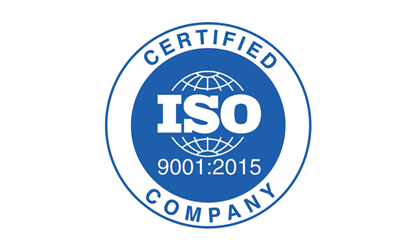


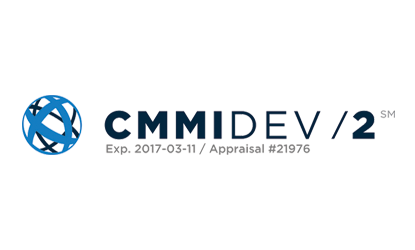

In today's busy business world, companies face the challenge of being more efficient, cutting costs, and improving customer service. Process automation is key to achieving these goals. Automation tools can help with simple tasks like data entry as well as more complex workflows. These tools are essential for making operations smoother across all industries. However, with so many options available, choosing the right tool for your business can be tricky.
This is where ePathUSA can assist. With years of experience guiding enterprises through the process automation journey, ePathUSA helps businesses identify, implement, and optimize the most suitable tools. Our service-oriented approach ensures that every automation solution is tailored to your specific needs.
In this blog, we will explore the top five process automation tools for enterprises, their key features, benefits, and how ePathUSA's expertise can make the implementation process seamless and effective.
Explore ePath’s Process Automation Services
Process automation involves using technology to perform tasks that would otherwise require human intervention. These tasks include data entry, approval workflows, email responses, document processing, and more. By automating repetitive processes, enterprises can improve speed, reduce errors, and enable their workforce to focus on higher-value activities.
Over the years, process automation has evolved from simple task automation to sophisticated tools that integrate AI, machine learning, and cloud technology. The advent of Robotic Process Automation (RPA) and AI-powered solutions has transformed automation from a niche practice to a mainstream necessity for businesses striving to remain competitive.
In fact, a study by McKinsey & Company found that over 60% of occupations could see at least 30% of their tasks automated by adopting existing technologies. Without automation, enterprises face several challenges, such as operational inefficiencies, human errors, compliance risks, and escalating labor costs.
For a more in-depth understanding of the evolution of process automation, explore this Gartner report on automation trends.
There are numerous process automation tools available, each suited to different types of businesses and needs. Below, we explore the top five tools that can transform your enterprise’s operations.
UiPath is a leading robotic process automation (RPA) tool that automates repetitive tasks with minimal human intervention. It uses artificial intelligence to perform complex, rule-based tasks and integrates seamlessly with enterprise applications.
Key Features:
Benefits:
Automation Anywhere is a cloud-based RPA tool known for its enterprise-level capabilities. It is designed to automate end-to-end business processes, from customer support and data entry to document management.
Key Features:
Benefits:
Blue Prism is an RPA platform that focuses on enterprise-grade automation. It is particularly suited for highly regulated industries, such as banking and healthcare, where security and compliance are top priorities.
Key Features:
Benefits:
For smaller enterprises or those looking to automate tasks between various web applications, Zapier is an excellent choice. This tool offers easy-to-use workflows that link thousands of apps, from Gmail to Salesforce, and can automate data transfer and notifications.
Key Features:
Benefits:
Kofax is a process automation tool that specializes in document management, robotic process automation, and artificial intelligence-driven automation. It excels in automating document-heavy processes, making it particularly valuable for industries like finance, healthcare, and government.
Key Features:
Benefits:
At ePathUSA, we understand that process automation is not one-size-fits-all. That’s why we take a service-oriented approach to help enterprises implement the right automation tools based on their unique needs.
Our process begins with a thorough needs analysis, identifying key workflows and areas where automation can have the greatest impact. From there, we assist with tool selection and ensure that the chosen solution integrates seamlessly into your existing systems.
Once the automation tool is in place, ePathUSA offers ongoing support, ensuring that your system continues to deliver optimal performance and ROI. We are committed to helping businesses leverage automation for long-term success.
Explore ePath’s Process Automation Solutions
The benefits of implementing process automation in enterprises are far-reaching. Here are some of the most notable advantages:
Process automation eliminates bottlenecks and speeds up business workflows. By automating routine tasks, employees are freed up to focus on more complex and valuable work.
Automation reduces the need for manual labor, which leads to cost savings. Businesses also save on training and error correction costs, as automation tools minimize human error.
By automating processes, businesses significantly reduce the chances of errors that can occur due to manual intervention. This leads to higher-quality work and greater customer satisfaction.
Automated processes can scale quickly to meet the demands of a growing business. Whether you're expanding operations or launching new services, automation ensures that your workflows remain efficient as you grow.
Nedbank, one of South Africa’s largest banks, offers a range of financial services, including retail and corporate banking. The bank faced operational challenges with manual, error-prone processes in data entry, reporting, and transaction handling, which were time-consuming and costly.
Nedbank struggled with:
To address these challenges, Nedbank implemented UiPath RPA to automate key processes such as:
The RPA implementation resulted in:
Nedbank’s adoption of UiPath RPA significantly improved operational efficiency, reduced costs, and ensured compliance with regulatory standards, demonstrating the potential of RPA in transforming large-scale banking operations.
As process automation continues to evolve, several emerging trends are shaping the future of enterprise operations. These include:
Stay Updated on Automation Trends
Choosing the right process automation tool is crucial for enterprises looking to improve efficiency, reduce costs, and enhance overall performance. With tools like UiPath, Automation Anywhere, Blue Prism, Zapier, and Kofax, businesses can automate key processes and drive growth.
At ePathUSA, we provide personalized guidance and implementation support, ensuring that your chosen tool aligns perfectly with your business needs. Ready to embark on your process automation journey?
Contact ePathUSA Today for a consultation.
Process automation involves using technology to handle repetitive tasks without human involvement. It can include tasks like data entry, report generation, and workflow approvals, helping businesses improve efficiency and reduce human errors.
Automation tools improve efficiency by handling repetitive tasks, reduce costs by minimizing manual labor, enhance accuracy by reducing human error, and allow businesses to scale without increasing headcount.
ePathUSA helps businesses choose the right automation tools, integrate them with existing systems, and provide ongoing support to optimize performance and ROI.
Industries such as banking, healthcare, manufacturing, and retail benefit significantly from process automation due to the high volume of repetitive tasks, data processing, and regulatory requirements.
The timeline depends on the scope of automation but typically ranges from 6 to 12 weeks, from needs assessment and tool selection to full deployment and testing.

In today’s competitive business landscape, data analytics has become a cornerstone for organizations striving to make informed decisions that drive growth. The ever-expanding amount of data generated daily offers significant potential, but only if businesses know how to analyze and leverage it effectively. By utilizing data-driven decision-making, companies can identify new opportunities, streamline operations, and gain a competitive edge.
At ePathUSA, we empower enterprises with actionable insights through expert data analytics solutions that enable them to harness data’s full potential and accelerate business success.
Learn More About ePath’s Data Analytics Services
Data analytics involves examining raw data to draw conclusions about that information, often using tools and algorithms to extract patterns, correlations, and insights. Over time, analytics has evolved from basic reporting to sophisticated predictive and prescriptive models that can forecast trends and suggest actionable steps.
According to Gartner, the global market for data and analytics is projected to grow from $215.7 billion in 2022 to $274.3 billion by 2025, driven by an increasing reliance on data for decision-making.
Data analytics has gone from a niche function to a vital asset across all sectors. ePathUSA leverages the latest tools and techniques to help businesses understand and utilize their data effectively.
Explore the Basics of Data Analytics
For a deeper dive into industry data trends, refer to Gartner’s 2020 Market Guide for Data Analytics.
Data analytics plays a crucial role in accelerating business growth by providing insights that improve decision-making, optimize processes, and enhance customer experience. Here's how leveraging data analytics translates to business growth:
Data-driven decision-making allows businesses to move away from gut feelings or assumptions and instead make choices grounded in facts and real-time insights. According to McKinsey, companies that adopt data-driven decision-making are 23 times more likely to acquire customers, 6 times more likely to retain customers, and 19 times more likely to be profitable.
For example, Uber uses real-time data to dynamically set prices based on factors like demand and traffic conditions, optimizing profitability and enhancing customer experience.
By analyzing customer behavior and preferences, businesses can tailor their marketing and product offerings to meet the needs of specific customer segments. Coca-Cola uses data analytics to segment customers by region, behavior, and preference to optimize their marketing campaigns, increasing the effectiveness of their outreach and sales.
Additionally, segmentation allows for more personalized interactions, improving customer loyalty and lifetime value.
Data analytics also helps businesses optimize internal processes and resources. For instance, General Electric uses predictive analytics to monitor equipment and predict maintenance needs, resulting in $200 million in cost savings. By identifying inefficiencies and bottlenecks, companies can streamline operations, reduce costs, and increase overall productivity.
For more details on data-driven decision-making, check Deloitte's Analytics ROI Report.
Data analytics is powered by various techniques and tools, each with its unique benefits for businesses seeking to unlock actionable insights.
Data mining involves analyzing large datasets to identify hidden patterns. It’s often used to explore customer behavior and market trends. Retailers like Target use data mining to predict purchasing patterns and personalize their promotions, increasing sales significantly.
Benefits:
Tools like Tableau and Power BI allow businesses to visualize complex data through interactive dashboards, making it easier for decision-makers to interpret results. Uber’s business intelligence team uses visualization tools to track trip patterns and manage driver performance, improving operational efficiency.
Benefits:
Machine learning (ML) algorithms analyze historical data to predict future trends. For example, Netflix uses ML models to recommend content based on user preferences, increasing customer engagement and retention.
Benefits:
Big data platforms like Hadoop and Apache Spark are crucial for processing large datasets. Companies like Walmart use these platforms to analyze transaction data in real time, optimizing inventory and sales operations.
Benefits:
Explore Tools and Techniques for Business Analytics
For external reviews on data analytics tools, visit Gartner’s Review on Analytics Tools.
At ePathUSA, we provide end-to-end data analytics solutions tailored to help businesses harness their data to drive growth. Our services include:
With a service-oriented approach, ePathUSA ensures that businesses can implement data analytics solutions that align with their objectives.
Request a Consultation with ePathUSA
Adopting data analytics offers a variety of benefits that can lead to measurable business growth. Here are the most significant advantages:
Businesses with access to data analytics can make faster, more informed decisions. This helps improve strategies across marketing, sales, customer service, and product development.
By identifying inefficiencies, businesses can cut unnecessary costs. For instance, UPS uses data analytics to optimize delivery routes, saving millions of dollars on fuel and labor costs annually.
Analytics tools provide deep insights into customer behavior, allowing businesses to personalize their offerings. For instance, Spotify uses listening habits data to create personalized playlists, improving user satisfaction and retention.
Data analytics optimizes business processes, leading to better resource allocation and enhanced productivity. Caterpillar, for instance, uses analytics to monitor machinery performance, reducing downtime and maintenance costs.
Walmart, the world’s largest retailer, serves millions of customers globally, operating more than 10,000 stores in over 20 countries. With such a massive retail footprint, Walmart faces significant challenges in inventory management, supply chain logistics, pricing strategies, and customer experience optimization. The company recognized that harnessing the power of data could help it achieve its growth goals while maintaining operational efficiency.
Walmart’s business model relies heavily on its ability to manage a vast supply chain and stock inventory efficiently. Historically, Walmart’s logistics system had challenges with inventory accuracy, stockouts, and overstocking, which led to customer dissatisfaction and excess operational costs.
To remain competitive and grow, Walmart needed to leverage data analytics to optimize inventory, improve customer experience, and enhance operational efficiency.
Walmart has long been a leader in using data to drive business decisions. By implementing a big data and analytics strategy, Walmart was able to tackle its supply chain challenges and create a more seamless shopping experience for its customers. Some of the key data analytics approaches Walmart adopted included:
Walmart uses data analytics to track inventory in real-time. By integrating data from RFID tags and sensors in stores and warehouses, Walmart can now monitor product movement throughout its supply chain. This real-time data feeds into an advanced inventory management system that helps ensure products are available when customers need them, reducing stockouts and minimizing excess inventory.
Walmart uses predictive analytics to forecast consumer demand at a granular level. By analyzing historical sales data, customer purchasing behaviors, weather patterns, and even social media trends, Walmart can predict what products will be in demand in specific regions and during particular times of the year.
Walmart uses machine learning models to dynamically adjust prices based on several factors, including competitor pricing, market demand, and inventory levels. This pricing strategy allows Walmart to stay competitive and maximize profitability, while ensuring products are always competitively priced.
Walmart collects data from various customer touchpoints, including loyalty programs, mobile apps, web browsing, and in-store purchases, to gain insights into customer preferences. This allows Walmart to offer personalized promotions, product recommendations, and in-store experiences.
The data-driven initiatives Walmart implemented provided substantial results, making a significant impact on its bottom line and operational efficiency:
Walmart’s use of data analytics has had a transformative effect on its operations, inventory management, pricing strategies, and customer experience. By leveraging predictive analytics, machine learning, and real-time data insights, Walmart has been able to stay competitive in an increasingly data-driven retail environment.
As data continues to grow in complexity, new trends are emerging that will further revolutionize how businesses use data to drive growth. These trends include:
AI-powered analytics tools will become more capable of interpreting complex data and making decisions autonomously, reducing the need for human intervention.
The ability to process and analyze data in real-time will become increasingly important, especially for industries like retail and healthcare, where quick decision-making is essential.
Machine learning and deep learning algorithms will improve the accuracy of predictive models, enabling businesses to make more accurate forecasts and optimize their strategies.
Stay Updated on Data Analytics Trends
Data analytics has become indispensable for businesses aiming to stay competitive in a fast-paced market. From improving decision-making to enhancing customer insights, data analytics plays a pivotal role in driving growth. ePathUSA offers the tools and expertise to help your business harness the power of data and turn it into actionable insights.
Get Started with ePath’s Data Analytics Solutions
Data analytics is the process of collecting, processing, and analyzing data to extract meaningful insights. It involves various techniques, including statistical analysis, machine learning, and predictive modeling, to turn raw data into actionable information. Data analytics can be applied to a wide range of areas, including improving customer experience, optimizing operations, and identifying business opportunities. By making data-driven decisions, companies can better understand their markets and improve performance.
Data analytics offers multiple benefits, such as improved decision-making, cost optimization, and enhanced customer insights. By leveraging data, businesses can gain a deeper understanding of consumer behavior, market trends, and operational inefficiencies. This allows them to make data-driven decisions that improve outcomes.
Various tools are used in data analytics, depending on the complexity of the data and the specific goals of the business. Commonly used tools include:
At ePathUSA, we specialize in helping businesses harness the power of data through tailored analytics solutions. Our services cover the entire analytics lifecycle, including data collection, processing, analysis, and visualization.
We assist businesses by:
While data analytics can benefit any industry, certain sectors gain significant advantages from data-driven strategies. These industries include:
Manufacturing: Analytics helps optimize supply chains, reduce waste, and predict equipment failures.

Today, small and medium businesses (SMBs) face a fast-changing digital world. To stay competitive, they need flexible, scalable, and affordable solutions. Traditional IT systems often have high maintenance costs, limited growth potential, and security issues. Cloud computing offers a better option by providing flexibility, efficiency, and security that can help businesses grow.
The global cloud computing market is expected to reach $947.3 billion by 2026. Businesses are rapidly shifting to cloud-based solutions due to their cost efficiency, improved collaboration, and enhanced security. Here’s why cloud computing is transforming SMBs:
Unlike traditional IT setups that require significant upfront investments in hardware and infrastructure, cloud computing follows a pay-as-you-go model. This eliminates large capital expenditures while enabling SMBs to scale costs based on usage.
Fact: Businesses that shift to the cloud save an average of 20% on infrastructure costs annually.
SMBs often experience fluctuating workloads, and cloud solutions enable seamless scalability without the need for expensive hardware upgrades. Whether expanding operations or downsizing temporarily, businesses can adjust resources in real-time.
Example:-ePATHUSA’s cloud solutions help businesses scale applications dynamically, ensuring uninterrupted performance as demand grows.
Cloud providers invest heavily in advanced cybersecurity measures, including encryption, multi-factor authentication, and AI-powered threat detection. This ensures SMBs remain compliant with industry regulations such as GDPR, HIPAA, and SOC 2.
With remote and hybrid work models becoming the norm, cloud computing enables seamless collaboration across teams. Employees can access files, applications, and tools from anywhere, increasing productivity and reducing communication barriers.
Fact: Companies using cloud collaboration tools experience a 25% increase in workforce efficiency.
Traditional on-premise systems are vulnerable to data loss due to hardware failures, cyberattacks, or natural disasters. Cloud-based backup and disaster recovery solutions ensure businesses can restore data quickly and minimize downtime.
Example: ePATHUSA’s cloud security solutions provide automated backup and disaster recovery, ensuring uninterrupted business operations.
To maximize the benefits of cloud computing, SMBs should follow these best practices:
As a trusted technology partner, ePATHUSA provides tailored cloud solutions that enhance efficiency, security, and scalability for SMBs. Our offerings include:
We help businesses migrate seamlessly to cloud platforms like AWS, Microsoft Azure, and Google Cloud, ensuring minimal disruption and optimized performance.
Our cloud security frameworks protect businesses from cyber threats while ensuring compliance with regulatory standards.
From CRM systems to collaboration tools, we develop cloud applications that streamline business operations and improve customer engagement.
We leverage AI-driven cloud solutions to enhance operational efficiency and provide actionable insights for business growth.
As cloud adoption continues to accelerate, several key trends are shaping its future:
For SMBs, cloud computing is no longer optional, it’s essential. From cost savings and scalability to security and seamless collaboration, the cloud provides a powerful foundation for business growth. By leveraging ePATHUSA’s cloud solutions, SMBs can enhance efficiency, protect sensitive data, and scale operations without limitations.
Ready to take your business to the next level with cloud computing? Explore ePATHUSA’s Cloud Services here to learn how our cloud solutions can drive innovation and success for your business.
1. How does cloud computing reduce IT costs? Cloud computing eliminates the need for on-premise hardware, reducing upfront costs and ongoing maintenance expenses.
2. Is cloud computing secure for SMBs? Yes, cloud providers offer advanced security measures like encryption, firewalls, and compliance frameworks to safeguard business data.
3. How quickly can a business transition to the cloud? The transition time depends on business needs and complexity. With the right strategy, SMBs can migrate in a few weeks to a few months.
4. What is the difference between public, private, and hybrid clouds?
5. Can cloud computing support remote work? Absolutely! Cloud-based solutions enable remote teams to collaborate efficiently, access data securely, and maintain productivity from anywhere.
6. What are the main challenges of cloud adoption for SMBs?
Some challenges include data security concerns, integration with existing systems, and managing cloud costs effectively. However, with proper planning and expert guidance, these challenges can be mitigated.
How does cloud computing improve customer experience?
Cloud-based solutions enable faster service delivery, real-time data access, and AI-driven insights, helping businesses personalize customer interactions and improve satisfaction.
7. Is cloud computing environmentally friendly?
Yes, cloud computing reduces the need for physical hardware, lowers energy consumption, and promotes resource sharing, making it a more sustainable option than traditional IT infrastructures.
8. How can SMBs ensure data privacy in the cloud?
By choosing reputable cloud providers that offer encryption, compliance certifications, and multi-factor authentication, businesses can ensure high levels of data privacy.
9. What industries benefit the most from cloud computing?
Cloud computing is highly beneficial for industries like healthcare, finance, e-commerce, education, and logistics, where scalability, security, and remote access are crucial.

Artificial Intelligence (AI) has evolved from a futuristic concept into a transformative force that is reshaping industries across the globe. From automating routine tasks to enhancing decision-making, AI enables businesses to unlock new opportunities for growth, reduce operational costs, and improve customer experiences. Whether you are a small business or a large enterprise, integrating AI into your processes can propel your business to the next level.
This guide will walk you through the basics of AI integration and how businesses can implement AI in their operations to achieve measurable success. At ePathUSA, we provide expert AI integration services, ensuring that businesses can seamlessly adopt AI technologies and maximize their potential for growth.
Learn More About ePath’s AI Integration Services
Artificial Intelligence (AI) refers to machines or systems that can simulate human intelligence, enabling them to perform tasks such as decision-making, learning, and problem-solving. AI is powered by algorithms, data, and computing power, allowing systems to improve over time. Key subfields of AI include:
According to Gartner, global AI software revenue is expected to reach $62 billion by 2022, demonstrating the growing reliance of businesses on AI to enhance operations and drive growth.
By embracing AI, businesses can achieve greater efficiency, accuracy, and innovation. ePathUSA offers end-to-end AI solutions that enable organizations to integrate AI into their business processes effectively and seamlessly.
Integrating AI into business processes offers several tangible benefits, ranging from enhanced operational efficiency to improved decision-making. Below are some key advantages of AI integration, backed by real-world data:
1. Improved Efficiency and Automation
AI-powered automation can significantly improve efficiency by handling repetitive tasks that would otherwise take up valuable time and resources. According to a McKinsey report, automation could raise global productivity by 0.8% to 1.4% annually, boosting economic growth.
For instance, American Express uses AI to automate fraud detection, significantly reducing the time required to identify suspicious transactions and preventing financial losses.
ePathUSA provides AI-driven automation solutions that help businesses optimize workflows, streamline operations, and improve overall productivity.
2. Cost Reduction
AI-driven automation not only improves efficiency but also leads to significant cost savings. According to Accenture, AI has the potential to increase profitability by 38% by 2035, primarily by improving productivity and automating time-consuming tasks.
By integrating AI into business processes, organizations can reduce manual labor, cut operational costs, and improve resource allocation.
3. Enhanced Customer Experience
AI helps businesses deliver more personalized, efficient, and proactive customer service. AI-driven tools like chatbots, recommendation engines, and sentiment analysis systems enable businesses to cater to customers’ needs instantly.
For example, Sephora uses an AI-powered virtual assistant to help customers find the right makeup products, creating a personalized shopping experience. This not only improves customer satisfaction but also drives higher conversion rates.
Discover the Benefits of AI IntegrationFor further insights into AI’s ROI, refer to Deloitte’s AI Business Transformation Report.
Successfully integrating AI into business processes involves several key steps, each of which contributes to a seamless implementation. Here is a step-by-step guide to ensure the AI integration process is effective:
1. Assess Your Needs
Before implementing AI, businesses need to identify areas where AI can add value. Whether it’s customer service, data analysis, or automation, understanding your needs will guide you in selecting the right tools. PwC found that 59% of executives consider AI to be a “transformative” tool, but it’s important to focus on the most impactful areas first.
2. Select the Right AI Tools
Choosing the right AI tools is essential for successful integration. Businesses need to evaluate various AI technologies such as machine learning platforms, NLP tools, and RPA systems, ensuring that the tools align with their objectives.
3. Pilot Testing
A pilot test allows businesses to evaluate the effectiveness of their AI solutions in real-world scenarios. Testing helps identify any issues, assess performance, and make adjustments before full-scale implementation.
4. Full-Scale Implementation
After successful testing, businesses can proceed with full-scale implementation. This phase involves integrating AI systems into existing workflows, ensuring that data is processed efficiently and securely.
5. Continuous Monitoring and Improvement
AI systems require ongoing monitoring to ensure they continue to provide value. By collecting feedback, businesses can refine algorithms, update models, and ensure that AI systems evolve alongside changing business needs.
Follow Our Guide to Integrating AIFor more on AI implementation strategies, read McKinsey’s Guide on AI Integration.
At ePathUSA, we specialize in helping businesses seamlessly integrate AI into their operations. Our service-oriented approach ensures that AI technologies are deployed effectively, enabling businesses to achieve their growth objectives.
Request a Consultation with ePathUSA
Background
Coca-Cola, one of the largest beverage companies globally, is constantly seeking ways to improve its operations and customer engagement. With a vast range of products and a customer base spanning multiple countries, Coca-Cola has embraced Artificial Intelligence (AI) as a tool to enhance productivity, streamline processes, and offer personalized experiences.
In recent years, Coca-Cola has focused on integrating AI into key aspects of its operations, from marketing and supply chain optimization to customer service and product innovation. The goal is to leverage AI's power to analyze vast datasets, automate processes, and ultimately provide better services and experiences to customers.
This case study outlines how Coca-Cola has effectively used AI to transform its business processes, enhance operational efficiency, and improve customer interactions.
| Challenge | Solution | Results |
| Operational inefficiencies in inventory, logistics, and supply chain. | AI-Powered Vending Machines: Use of computer vision & machine learning for personalized beverage recommendations. | Increased sales & engagement; data-driven insights on consumer behavior. |
| Need for more personalized and timely customer engagement. | AI Chatbots: NLP-powered bots handle customer inquiries across multiple platforms. | 40% reduction in response times; improved customer satisfaction; reduced human workload. |
| Marketing campaigns required optimization for better ROI. | AI-Driven Marketing Optimization: ML algorithms analyze customer data for targeted ads & real-time campaign adjustments. | 25% increase in marketing ROI; improved digital engagement & brand recall. |
| Need for better demand forecasting to reduce overstocking & stockouts. | AI in Demand Forecasting & Inventory Management: AI analyzes sales trends, weather, and external factors for accurate predictions. | 10% reduction in overstocking; improved product availability & cost savings. |
| Sustainability goals: reduce resource consumption & waste. | AI for Sustainability: AI monitors energy and water usage, optimizing efficiency. | Reduced carbon emissions & water consumption; improved environmental sustainability. |
Future of AI at Coca-Cola
As AI continues to evolve, several trends are expected to shape the future of business processes. These include:
1. AI-Powered Automation
AI will further enhance automation by enabling businesses to automate more complex tasks, such as decision-making, content creation, and customer service, creating fully autonomous systems.
2. Real-Time Data Analytics
AI-powered systems will allow businesses to analyze data in real-time, leading to quicker decision-making and the ability to respond instantly to changes in customer behavior, market trends, or operational issues.
3. Hyper-Personalization
AI will drive hyper-personalized experiences by analyzing vast amounts of customer data to create tailored offerings and experiences. This trend will become increasingly important in industries like retail, healthcare, and finance.
Stay Updated on AI Trends
Integrating AI into business processes is no longer just an option—it’s a necessity for businesses that want to stay competitive in a data-driven world. From improving efficiency and reducing costs to enhancing customer experiences, AI offers significant advantages.
ePathUSA is committed to helping businesses integrate AI into their operations seamlessly, ensuring that they achieve their growth objectives and maximize their ROI.
Get Started with ePath’s AI Integration Solutions
1. What is AI integration?
AI integration refers to incorporating AI technologies into existing business operations to automate tasks, optimize workflows, and improve decision-making. It involves selecting the right tools, implementing them, and continuously refining processes.
2. What industries can benefit from AI integration?
AI integration is beneficial across various industries, including retail, healthcare, finance, manufacturing, and logistics. It helps businesses improve efficiency, enhance customer experiences, and make better decisions.
3. How do I begin integrating AI into my business?
Start by assessing your business needs, selecting the appropriate AI tools, conducting pilot tests, and scaling up after successful implementation. Continuous monitoring and improvement are essential to ensure AI systems evolve with your business.

Modern businesses operate in a fast-paced environment, and using off-the-shelf software can be frustrating. Many businesses face problems like inefficiency, security risks, and limited growth because generic software does not meet their specific needs. Custom software solutions offer a better way to improve business operations. They help streamline processes, enhance security, and support long-term growth.
The global business software market continues to expand, fueled by increasing demands for automation, security, and seamless integration. Here’s why businesses are making the shift to custom software solutions:
To maximize benefits, businesses should adhere to these best practices:
As a trusted technology solutions provider, ePATHUSA delivers innovative, secure, and scalable software across various domains:
As businesses continue to embrace digital transformation, several key trends are shaping the future:
Minnesota Department of Agriculture - Agricultural Best Management Practices (AgBMP)
ePathUSA helped AgBMP retain their current solution while modernizing the business process. This provided a structured roadmap for a gradual transition rather than an immediate switch and disruption. This approach enables organizations to manage their spending effectively, allows users to adapt to changes smoothly, and ensures a solution tailored to their unique business processes.
Nevada Equal Rights Commission (NERC)
ePathUSA modernized NERC’s business processes through custom software development, saving significant time and resources while ensuring compliance with NV security policies.
In a world where efficiency, security, and scalability dictate business success, investing in custom software is a strategic move that delivers long-term value. Unlike off-the-shelf solutions that come with limitations, custom software is designed to fit your specific business needs, allowing you to optimize processes, enhance security, and adapt to evolving market demands. At ePATHUSA, we are committed to delivering tailored digital solutions that drive operational excellence, improve productivity, and position businesses for sustainable growth. Whether you need advanced automation, AI-driven insights, or secure cloud solutions, our team is ready to develop software that propels your business forward.
Ready to elevate your business operations with a custom software solution? Visit ePATHUSA's Custom Software Services to explore our offerings and kickstart your digital transformation.

In today’s digital business world, companies must quickly adapt to new technology. Outdated systems, which are old software or hardware that have been used for years, can hold back business growth and innovation. Although these systems may have worked well in the past, they often can't keep up with the speed and complexity that modern businesses require.
The problem with legacy systems is that they tend to limit the agility, efficiency, and competitive edge of businesses. With the increasing demand for speed, security, and scalability in operations, it is essential to recognize when it’s time to modernize.
In this guide, we will explore the key indicators that your legacy systems are holding your business back and discuss the many advantages of modernization. We’ll also show you how ePathUSA’s expertise in digital transformation can help you modernize your systems and drive long-term business success.
Learn More About ePath’s Modernization Solutions
What Are Legacy Systems?
A legacy system is an outdated computer system, software, or application still in use because it performs a critical business function. These systems often rely on older programming languages, infrastructure, and hardware. While these systems may have worked for their time, they have significant drawbacks in today’s fast-evolving technological environment.
Characteristics of Legacy Systems:
Running on legacy systems can severely hinder a company’s ability to adapt to market changes, scale operations, or provide the best customer experience. As businesses grow and evolve, legacy systems can create bottlenecks, making it difficult to respond to the demands of the modern market. According to Gartner, more than 50% of organizations report that legacy IT systems are holding them back from achieving their full digital potential.
ePathUSA specializes in assessing and modernizing legacy systems, enabling businesses to streamline operations, enhance security, and adopt innovative technologies that support their growth and competitiveness.
Explore the Basics of Legacy Systems
It can be difficult for businesses to determine the right time to upgrade their systems. However, there are several key signs that indicate it’s time to consider modernizing legacy systems. Below are the most common indicators that it’s time to make a change:
One of the most telling signs that your legacy systems are outdated is frequent system downtimes and slow performance. As business needs grow, the demands on legacy systems increase, which often leads to system failures and slowdowns. If your systems are consistently crashing or struggling to perform simple tasks, it’s a clear sign they’re unable to keep up.
According to IBM, downtime costs businesses an average of $300,000 per hour.
When you modernize your legacy systems, you can dramatically reduce downtime and improve performance, ensuring your business runs smoothly. ePathUSA provides tailored solutions to optimize system performance, improve uptime, and support your business’s growth.
Maintaining legacy systems is expensive, especially when businesses need to rely on outdated software and hardware that require special expertise to support. The costs associated with patching and updating legacy systems can quickly add up, draining resources that could be better spent on innovation and growth.
Forrester estimates that companies still operating legacy systems spend up to 80% of their IT budget on maintenance and support.
ePathUSA can help your business reduce maintenance costs by transitioning to more modern, cost-effective systems that are easier to maintain and scale.
In today’s fast-paced business world, the ability to integrate with modern tools and technologies is essential. Legacy systems often struggle to connect with newer applications or cloud-based solutions, preventing your business from taking full advantage of digital tools that can improve efficiency and customer experience.
A McKinsey report suggests that businesses with better IT system integration see a 5% higher revenue growth compared to their competitors who continue using siloed legacy systems.
Modernizing your legacy systems with ePathUSA ensures seamless integration with modern tools and technologies, helping your business stay competitive and agile.
See Warning Signs to Modernize
Older systems are often not equipped to handle the latest cybersecurity threats. As cyber-attacks become more sophisticated, legacy systems that lack regular security updates are increasingly vulnerable to breaches. Using outdated systems puts your business at risk for data theft, compliance violations, and reputational damage.
By modernizing your systems, you can enhance security, ensure compliance with data protection regulations, and minimize the risk of cyber threats. ePathUSA ensures that your modernized systems are equipped with the latest security measures, protecting your business and customers.
As your business grows, so does the need for scalable systems. Legacy systems often can’t handle increased data, transactions, or user demands, which leads to performance issues and potential system failures. If your current systems can’t scale with your growth, it’s time to modernize.
Dropbox transitioned from legacy systems to cloud-based infrastructure, saving 74% on operational costs while improving scalability.
Modernization ensures that your systems can grow with your business. With ePathUSA, you’ll have access to scalable, flexible solutions that support your business’s long-term growth.
Modernizing legacy systems is not just about keeping up with technology—it’s about gaining a competitive edge. Here are the key benefits of upgrading your systems:
Modern systems allow businesses to automate manual tasks, streamline processes, and enhance operational efficiency. With the latest technologies, you can reduce bottlenecks, optimize workflows, and boost employee productivity.
ePathUSA helps businesses enhance efficiency by implementing modern technologies that automate tasks and improve overall productivity.
Modern systems come with robust security features, such as advanced encryption, multi-factor authentication, and real-time monitoring. These features help protect sensitive data and ensure compliance with evolving regulations like GDPR and HIPAA.
By working with ePathUSA, businesses can implement modern systems that meet the highest security standards and regulatory requirements.
Modern systems are designed to scale with your business, making it easy to accommodate growth, new technologies, and changing market demands. Cloud-based systems, for example, provide businesses with the flexibility to add resources as needed, without significant upfront costs.
ePathUSA helps businesses transition to scalable systems that grow with their needs, ensuring long-term success and flexibility.
Although modernization requires an initial investment, it ultimately leads to significant cost savings in maintenance, operations, and energy consumption. Modern systems are more cost-effective to maintain and can reduce IT infrastructure costs.
At ePathUSA, we specialize in legacy system modernization. Our approach is comprehensive and tailored to the unique needs of each client. We begin by assessing your current IT infrastructure and identifying areas where modernization will have the most significant impact. Then, we implement the latest technologies to improve performance, scalability, and security while ensuring minimal disruption to your business operations.
Our modernization services include:
Request a Consultation with ePathUSA
The Iowa Department of Revenue (IDR) relied on mainframe-based legacy systems to support IRIS and its surrounding applications. However, as technology evolved, IDR faced challenges in maintaining system efficiency, managing costs, and ensuring long-term sustainability.
IDR needed to assess its legacy infrastructure to identify risks, hidden costs, and opportunities for modernization. Additionally, it aimed to evaluate whether its workforce could continue supporting these aging systems.
ePathUSA conducted a Mainframe Legacy Health Check, analyzing all system components, job structures, and resource dependencies. The assessment provided a comprehensive view of operational bottlenecks, system inefficiencies, and security risks.
✔️ Identified critical risk factors that could impact tax collection and revenue processing.
✔️ Mapped out modernization opportunities, ensuring long-term system sustainability.
✔️ Provided IDR with a clear roadmap for modernization, helping improve efficiency and reduce future maintenance costs.
By assessing its legacy systems, IDR took the first step toward seamless digital transformation, ensuring smoother operations and better service for constituents.
As technology continues to evolve, the future of legacy system modernization will be shaped by several key trends, including:
ePathUSA helps businesses stay ahead of these trends by offering innovative solutions that prepare companies for the future.
Stay Updated on Modernization Trends
The time to modernize your legacy systems is now. By upgrading to modern technologies, you can improve operational efficiency, enhance security, and achieve long-term business success. With the help of ePathUSA, you can make the transition from outdated systems to modern solutions seamlessly, ensuring your business stays competitive in an ever-evolving digital landscape.
Get Started with ePath’s Modernization Solutions
Legacy systems are outdated software or hardware that businesses still use despite technological advancements. They often lead to high maintenance costs, security risks, and integration challenges. Modernization enhances efficiency, scalability, and security, ensuring systems can support future business growth.
If your systems frequently crash, have high maintenance costs, lack integration capabilities, or pose security risks, it’s time for an upgrade. Modernization ensures your IT infrastructure aligns with business growth, compliance requirements, and technological advancements.
Modernization improves operational efficiency, reduces costs, enhances security, and ensures better scalability. Businesses also benefit from improved system integration and automation, leading to faster workflows and a more competitive edge in the market.
Outdated systems lead to higher downtime, cybersecurity vulnerabilities, inefficiencies, and increasing maintenance costs. Additionally, they may fail to comply with new regulations, putting businesses at financial and legal risk.
ePathUSA provides comprehensive legacy system assessments, technology selection, seamless integration, and ongoing support. Their modernization solutions ensure cost-effective, secure, and scalable IT infrastructure tailored to business needs.

As organizations across the globe accelerate their digital transformation journeys, the demand for skilled IT professionals continues to surge. The U.S. Bureau of Labor Statistics projects a 15 percent growth in IT employment from 2021 to 2031, a rate significantly faster than the average for all occupations. This trend illustrates how essential IT capabilities have become in supporting everything from daily operations to enterprise-wide innovation. Companies are no longer only investing in technology but in the people who can manage, enhance, and future-proof it.
Today’s IT professionals are expected to bring more than technical know-how to the table. They must possess a combination of analytical thinking, adaptability, and collaboration to respond to the fast pace of technological change. In this environment, traditional hiring models are no longer enough. Organizations must identify the skills that matter most and ensure their recruitment strategies are aligned accordingly.
That is where ePath’s IT staffing solutions come in. ePath bridges the gap between talent and opportunity by delivering highly capable professionals who match not just the technical needs but also the cultural and strategic goals of businesses.
The modern IT landscape is defined by a convergence of emerging technologies, evolving business models, and heightened security concerns. According to IDC, global spending on digital transformation technologies is expected to reach nearly 3.9 trillion dollars by 2027. This underscores the scale at which companies are reengineering their business processes and customer experiences using cloud computing, artificial intelligence, data analytics, and automation.
Hybrid work models, a byproduct of the pandemic era, have redefined how and where IT infrastructure is deployed and maintained. The increasing complexity of enterprise systems demands a workforce that is agile and proficient across multiple platforms. Moreover, the growing adoption of technologies such as generative AI and edge computing has introduced new requirements for specialized expertise. Gartner’s 2024 Impact Radar identifies technologies like adaptive AI, super apps, and sustainable computing as future focus areas that will shape the next decade.
However, adapting to this dynamic environment is not just about hiring people who understand new tools. It is about building teams who can integrate and scale those tools across functions. A McKinsey study found that 87 percent of companies are already experiencing skill gaps in their IT departments. These gaps are especially pronounced in advanced analytics, cloud engineering, and cybersecurity.To stay competitive, businesses are increasingly shifting to skills-first hiring approaches. Instead of relying solely on academic degrees or tenure, they assess practical capabilities using coding simulations, project-based tests, and structured behavioral interviews. Partnering with firms like ePath ensures access to such refined talent acquisition methodologies.
In a world increasingly reliant on digital infrastructure, technical skills are the foundation of a high-performing IT workforce. These are the skills most sought after by hiring managers across industries, backed by data from global tech research and workforce analytics.
Cloud Computing
Cloud computing continues to be a top priority for organizations. According to Statista, more than 94 percent of enterprises use cloud services, and Amazon Web Services alone commands over 30 percent of the market share. Skills in AWS, Microsoft Azure, and Google Cloud are indispensable. Cloud architects and engineers who understand virtualization, cloud security, and serverless computing are enabling scalable and cost efficient operations worldwide.
Cybersecurity
Cybersecurity remains a major concern as the cost of cybercrime is projected to reach 10.5 trillion dollars annually by 2025, according to Cybersecurity Ventures. With increasing data regulations and the sophistication of cyber threats, professionals skilled in penetration testing, zero trust architecture, and security operations center management are in high demand. Certifications such as CISSP, CISM, and CompTIA Security+ serve as benchmarks of expertise.
Programming Languages
Programming proficiency underpins software development, automation, and data science. The TIOBE Index and Stack Overflow’s Developer Survey consistently rank Python, JavaScript, Java, and C++ as the most widely used languages. Python stands out for its simplicity and versatility, especially in data-driven applications and artificial intelligence.
Data Analytics and Big Data
Data is becoming central to decision-making. IDC reports that global data creation will reach 181 zettabytes by 2026. Professionals who can leverage tools like Power BI, Tableau, Apache Spark, and Hadoop are driving enterprise performance by uncovering actionable insights. Data scientists with machine learning experience and a strong understanding of statistics are especially valuable.
DevOps and Automation
DevOps combines development and IT operations to shorten software development life cycles. A GitLab DevSecOps report found that automation improves software quality and release speed for over 60 percent of DevOps teams. Skills in Docker, Kubernetes, Jenkins, and CI/CD pipeline orchestration are fundamental in accelerating digital product delivery.
Artificial Intelligence and Machine Learning
Artificial intelligence is transforming industries through automation, personalization, and predictive capabilities. McKinsey’s 2023 AI survey reveals that more than half of businesses have adopted AI in at least one business unit. Proficiency in frameworks like TensorFlow and PyTorch, and familiarity with machine learning concepts such as supervised learning, reinforcement learning, and natural language processing are increasingly necessary.
While technical capabilities form the backbone of an IT professional’s expertise, soft skills ensure that individuals can thrive in diverse teams, adapt to change, and communicate effectively with stakeholders. A LinkedIn report from 2023 confirms that 92 percent of talent professionals regard soft skills as equally or more important than technical skills.
Communication
In IT environments, communication is essential for translating complex information into business-friendly language. Whether documenting systems, presenting reports, or collaborating with non-technical departments, effective communication ensures alignment and project clarity.
Teamwork and Collaboration
As agile development and DevOps require cross-functional coordination, the ability to work in multidisciplinary teams is vital. High-performing teams rely on mutual trust, respect, and seamless collaboration to meet sprint goals and resolve conflicts quickly.
Problem Solving
Problem solving is one of the most valued competencies by executives. A PwC survey found that it ranked among the top three skills CEOs look for in their workforce. In an IT context, this involves diagnosing issues, innovating around constraints, and applying logical frameworks under pressure.
Adaptability
The pace of technological advancement demands a willingness to learn and evolve. The World Economic Forum’s Future of Jobs Report highlights that 50 percent of all employees will require reskilling by 2025. Adaptable professionals are more likely to embrace innovation and lead digital transformation initiatives.
To learn how ePath screens candidates for these essential interpersonal traits, visit our soft skills insights page.
Finding the right talent involves more than a review of credentials. It requires systematic evaluation techniques to ensure candidates can perform in high stakes environments.
Technical Assessments
Platforms like HackerRank and Codility provide objective evaluations of coding proficiency, algorithmic thinking, and system design capabilities. According to HackerRank, 60 percent of hiring managers use such tools during the early stages of screening.
Portfolio Reviews
Reviewing a candidate’s GitHub profile, contributions to open source projects, and case studies provides a clear picture of their real-world problem-solving abilities. These reviews are especially relevant for positions in software engineering and UI/UX design.
Structured Interviews
Behavioral and situational interviews, structured around consistent evaluation criteria, help reduce hiring bias and improve decision making. Combining these with technical questions creates a holistic assessment process.At ePath, we blend these evaluation strategies to recommend professionals who are both technically sound and organizationally aligned.
ePath’s IT staffing services are designed to meet the specific needs of organizations seeking skilled professionals across a broad range of technologies and industries. With over two decades of experience, ePath has built a reputation for delivering results-driven, client focused talent solutions.
Why ePath:
We understand that successful staffing is about more than filling roles—it is about building high-performance teams that align with your culture and strategic direction.
The future of work will be shaped by technologies that are still emerging today. Organizations that anticipate these trends and begin building relevant skills within their teams will gain a substantial advantage.
Artificial Intelligence and Machine Learning
IDC projects that global spending on AI will exceed 500 billion dollars by 2027. As businesses deploy AI driven solutions across departments, professionals who understand machine learning models, model interpretability, and AI governance will be in demand.
Blockchain
While often associated with cryptocurrencies, blockchain is increasingly being used in supply chain management, healthcare records, and smart contract automation. Gartner estimates the business value generated by blockchain will reach 3.1 trillion dollars by 2030.
Internet of Things
With IoT devices expected to exceed 30 billion by 2026, there is growing demand for specialists in device integration, network optimization, and edge computing. These skills are particularly valuable in manufacturing, logistics, and smart city projects.
Quantum Computing
Although still at a nascent stage, quantum computing has the potential to revolutionize fields like encryption, material science, and logistics. Professionals who understand quantum algorithms, Qiskit, and qubit systems will be highly valued as the ecosystem matures.
To explore how ePath stays ahead of these trends, visit our emerging skills blog.
As the IT landscape continues to evolve, so too must your approach to hiring. From technical mastery to collaborative aptitude, the top IT professionals of today and tomorrow are those who bring holistic value to the organizations they serve.
Whether you are looking to build a high performing team from the ground up or expand your existing capabilities with niche skill sets, ePath is ready to support your goals. Our deep industry expertise, strategic sourcing methods, and client centric approach ensure you find the right fit—every time.
Q1: What are the most important technical skills to look for in IT professionals today?
The most in demand technical skills include cloud computing, cybersecurity, programming (especially in Python, JavaScript, and Java), data analytics, and DevOps. As organizations migrate to cloud based systems and embrace data driven decision making, professionals who can design, secure, and optimize digital infrastructure are vital. Familiarity with tools like AWS, Azure, Tableau, Docker, and Kubernetes can give candidates a strong edge. Artificial intelligence and machine learning are also fast rising priorities, especially in sectors embracing automation and personalization. Companies increasingly favor candidates with certifications or proven project experience over formal degrees.
Q2: Why are soft skills critical for IT roles?
Soft skills enhance the ability of IT professionals to communicate clearly, work in teams, and adapt to change—key traits in today’s collaborative work environments. As projects often span multiple departments and stakeholders, communication and teamwork are necessary to ensure alignment and efficiency. Critical thinking and problem solving are particularly valuable in fast paced IT settings, where challenges can emerge suddenly and require quick, effective responses. Adaptability is another essential quality as new technologies, methodologies, and platforms are introduced frequently. The combination of soft and technical skills determines long term effectiveness.
Q3: How do you evaluate IT professionals during the hiring process?
Evaluating IT talent requires a combination of technical assessments, portfolio reviews, and structured interviews. Technical tests can include coding challenges, simulations, or architecture design exercises to measure real world skills. Reviewing a candidate’s past projects—through GitHub repositories, case studies, or product demos—offers deeper insights into their capabilities and creativity. Structured interviews that include behavioral and situational questions help gauge soft skills, decision making, and cultural fit. At ePath, we use a well defined, multi step evaluation process that ensures candidates are both technically proficient and aligned with client expectations.
Q4: What trends are shaping the future of IT skills?
Emerging trends like artificial intelligence, blockchain, Internet of Things (IoT), and quantum computing are redefining the skill sets that companies need. For instance, AI and machine learning are now being embedded into everything from chatbots to fraud detection systems. Blockchain is making inroads beyond finance, including healthcare and logistics, while IoT is powering smart cities and connected manufacturing. Quantum computing, although in its early stages, is expected to impact encryption and optimization. Staying ahead requires hiring professionals who are not only familiar with these technologies but also committed to continuous learning.
Q5: How does ePath ensure the quality of IT professionals it provides?
ePath uses a rigorous and structured screening process that combines technical skill evaluations, behavioral interviews, and cultural fit assessments. Each candidate undergoes multiple rounds of testing tailored to the role and industry, including live coding exercises, case based scenarios, and team simulations. We also verify professional references and, when applicable, check certifications or training credentials. Our recruiters have domain expertise across industries like finance, healthcare, and government, enabling accurate and strategic matches. This comprehensive approach ensures that clients receive highly qualified professionals ready to deliver results from day one.

In the digital era, where cloud computing has become the backbone of modern businesses, securing your data in the cloud is no longer optional—it’s essential. Cloud security is not just about preventing unauthorized access; it’s about ensuring compliance, protecting sensitive information, and maintaining business continuity. But with evolving cyber threats, complex regulations, and diverse cloud environments, how can organizations effectively secure their cloud infrastructure? Enter ePathUSA, a trusted partner in cloud security solutions.
The shift to the cloud has brought unparalleled scalability, flexibility, and efficiency to businesses. However, it also comes with unique security challenges:
At ePathUSA, we specialize in empowering businesses to secure their cloud environments effectively. Here’s how we can help:
Our experts perform in-depth evaluations of your cloud infrastructure to identify vulnerabilities, misconfigurations, and potential risks. With actionable insights, we help you fortify your defenses.
Using AI-driven analytics, we monitor your cloud environment for unusual activity and potential threats. Early detection ensures that incidents are mitigated before they cause harm.
We implement robust IAM solutions to control access to your cloud resources. Multi-factor authentication (MFA), role-based access control (RBAC), and zero-trust cloud architecture are at the core of our approach.
ePathUSA ensures that your data is encrypted in transit and at rest, keeping it secure against unauthorized access. We also assist with compliance to meet industry regulations and audits seamlessly.
Our 24/7 monitoring services provide real-time alerts and quick responses to potential breaches. Our incident response teams are always prepared to contain and resolve security incidents efficiently.
Moving to the cloud? We ensure that your migration process is secure, with no data loss or exposure during the transition.
We have extensive experience with leading cloud platforms like AWS, Microsoft Azure, and Google Cloud. Our deep understanding allows us to tailor solutions to fit your specific needs.
We leverage advanced AI and machine learning to stay ahead of emerging threats. Our tools adapt to evolving risks, offering proactive protection.
Our cloud security solutions are designed to maximize security without overburdening your budget. We focus on delivering value while safeguarding your digital assets.
With years of experience and a proven track record, ePathUSA is a partner you can rely on for your cloud security needs.
In today’s fast-paced digital world, the stakes for cloud security have never been higher. Protecting your organization’s data and ensuring compliance require expertise and robust solutions. At ePathUSA, we go beyond just addressing security concerns—we create a resilient cloud environment where your business can thrive.
Ready to secure your cloud? Contact us today and discover how ePathUSA can help you navigate the complexities of cloud security. Together, let’s build a safer, smarter future.
Secure your cloud with confidence—partner with ePathUSA!

In a digital-first world, generative AI stands as a powerful tool, transforming how businesses operate, innovate, and engage with customers. From creating on-demand content to streamlining operations, the possibilities are vast.
Generative AI leverages advanced algorithms to create new content, ideas, and solutions from data inputs. Unlike traditional AI, which follows pre-set rules, generative AI can "think" creatively, generating anything from text and images to designs and data insights.
Generative AI offers:
1. Tailored Solutions: We work with your business to develop generative AI applications customized to your unique goals.
2. Scalable Cloud Infrastructure: Our secure cloud systems support data-heavy AI processes without compromising performance.
3. Data Compliance & Security: We manage and protect your data, ensuring it complies with all industry standards.
4. Ongoing Support: We offer training and resources to keep your team at the forefront of AI advancements.
With both technical expertise and a deep understanding of industry needs, ePathUSA ensures a smooth, effective AI integration tailored to your business. We turn potential into reality, helping you scale new heights with generative AI.

When it comes to Intelligent Document Processing, ePathUSA offers a robust solution that goes beyond simple automation. With years of expertise in software development and advanced AI services, ePathUSA delivers IDP solutions that are tailored to meet the unique needs of each business. Here’s how ePathUSA stands out:
With a commitment to innovation and client satisfaction, ePathUSA offers unparalleled expertise in Intelligent Document Processing. By adopting our solutions, businesses gain a competitive edge through streamlined operations, reduced costs, and enhanced data accuracy. We empower organizations to harness the full potential of their data with customized, scalable, and secure AI-driven document processing solutions.
Ready to transform your document management? Partner with ePathUSA to unlock the power of Intelligent Document Processing and take the first step toward a more efficient, data-driven future.

The rapid shift to cloud computing has revolutionized data management, enabling businesses to scale, innovate, and access resources globally. However, with this expansion, robust security becomes a paramount concern, as organizations strive to safeguard data and systems against evolving cyber threats. Cloud computing security architecture—a layered framework of controls, policies, and technologies—provides this necessary protection, fortifying cloud environments against vulnerabilities.
In this guide, we’ll explore the essential components of cloud security architecture, the best practices for strengthening it, and how ePathUSA's expertise in cloud security services ensures robust, reliable, and adaptable security solutions.
Cloud security architecture is a strategic design framework that addresses security needs across the cloud environment. By integrating a suite of identity, network, data protection, compliance, and monitoring tools, it fortifies data, applications, and infrastructure against unauthorized access and malicious activity.
With each layer serving a distinct purpose, cloud security architecture builds a holistic defense, creating a seamless yet secure experience for organizations and users alike.
ePathUSA is a trusted partner for organizations seeking expert cloud security solutions. We understand the intricacies of cloud environments and offer customized security architecture services to address the unique challenges and requirements of each client. Here’s how ePathUSA helps safeguard your cloud assets:
Effective cloud security architecture is the foundation of safe, resilient cloud operations. It enables businesses to embrace the full potential of cloud computing while safeguarding data and systems. By implementing a comprehensive, multi-layered security strategy, organizations can reduce risk, comply with regulations, and respond to emerging threats swiftly.
Partnering with ePathUSA ensures that your cloud security architecture is built on solid expertise and industry best practices. With our extensive experience and tailored solutions, ePathUSA is equipped to help you protect your data, scale securely, and focus on growth. Reach out to ePathUSA to discuss how we can build a robust, customized cloud security framework that meets your unique business needs.

In today’s digital-first world, the pressure to deliver software faster, with fewer errors and greater scalability, has given rise to the widespread adoption of DevOps. This powerhouse combination of development and operations promises speed, efficiency, and innovation. Yet, as businesses jump on the DevOps bandwagon, many quickly realize that it's not always a smooth ride.
DevOps success isn’t just about deploying new tools—it’s about overcoming challenges that impact culture, process, and technology. Let’s break down the most common roadblocks and explore how ePathUSA can be your expert guide to navigating these hurdles, ensuring your DevOps implementation drives real, measurable success.
The Challenge: DevOps isn’t just a technical framework—it’s a cultural shift. In many organizations, development and operations teams work in isolation, with competing goals and fragmented communication. This resistance to change often leads to friction, slowing down progress.
ePathUSA's Solution: We get that transforming culture is hard. ePathUSA helps break down these silos by promoting a culture of collaboration and shared responsibility. Our tailored DevOps frameworks foster communication across teams, ensuring everyone is aligned and working toward the same objective—delivering high-quality software, faster. With the right mindset and tools in place, you’ll see greater productivity, cohesion, and innovation.
The Challenge: With DevOps comes a dizzying array of tools—each for coding, testing, integration, deployment, and monitoring. While each tool serves a purpose, managing them all can be overwhelming and lead to compatibility issues, disrupting the very efficiency DevOps is meant to deliver.
ePathUSA's Solution: Simplification is key. ePathUSA cuts through the noise by integrating tools into a seamless, automated pipeline. We don’t just implement tools—we ensure they work together in harmony, enhancing efficiency and reducing human error. Our holistic approach helps you manage workflows effortlessly, giving you more time to focus on innovation.
The Challenge: Speed is great, but when security is left behind, it’s a recipe for disaster. Integrating security into DevOps—commonly referred to as DevSecOps—often feels like a roadblock, slowing down progress and making security feel like an afterthought.
ePathUSA's Solution: At ePathUSA, security is baked into every phase of the DevOps lifecycle. Our automated security testing and continuous monitoring systems ensure that your pipeline is safeguarded without slowing you down. From threat detection to compliance checks, we help you achieve the perfect balance of speed and security. This way, your software ships fast—and safe.
The Challenge: DevOps may work smoothly for small teams, but as your business grows, so do your infrastructures, workloads, and team size. Scaling DevOps efficiently without compromising performance is a major challenge for fast-growing organizations.
ePathUSA's Solution: Growth doesn’t have to mean chaos. ePathUSA enables effortless scaling by leveraging cloud-native architectures and automation tools. We ensure your DevOps processes are built to scale, allowing your infrastructure to expand seamlessly. Whether it’s handling more code, larger teams, or complex systems, we help you grow without breaking a sweat.
The Challenge: Continuous Integration/Continuous Delivery (CI/CD) is the heartbeat of DevOps, but it’s easy for bottlenecks to creep in. Whether it’s slow testing, manual approvals, or error-prone deployments, these hurdles can drag down the entire process, resulting in delayed releases and frustrated teams.
ePathUSA's Solution: Our expertise lies in optimizing CI/CD pipelines for high speed and reliability. ePathUSA implements automated testing and continuous deployment strategies that eliminate manual processes, reduce downtime, and streamline workflows. This means faster releases, more reliable code, and a happier development team.
The Challenge: DevOps doesn’t stop once the code is deployed. Continuous monitoring is essential to catch issues early and maintain performance, but many businesses struggle with fragmented monitoring solutions that don’t offer full visibility into the health of their systems.
ePathUSA's Solution: ePathUSA delivers real-time, 360-degree monitoring solutions that keep you informed every step of the way. We set up proactive alert systems that detect potential issues before they escalate, ensuring your software runs smoothly, your downtime is minimized, and your users stay happy.
DevOps isn't a one-size-fits-all solution, and the journey can feel daunting. But with the right partner, you can navigate these challenges and unlock the full potential of DevOps. ePathUSA stands out by not just offering technical expertise, but by understanding the nuances of your business and delivering solutions tailored to your unique needs.
From cultural transformation to tool integration, from CI/CD optimization to scaling securely—we’ve got you covered.
Ready to overcome your DevOps challenges? Let ePathUSA help you build a DevOps strategy that accelerates growth, drives innovation, and delivers lasting results.
Contact us today to learn how we can transform your DevOps journey!

Legacy systems have long powered the core operations of many businesses, but as technology evolves, these older systems can become a roadblock to growth, agility, and security. To stay competitive in today’s fast-paced, tech-driven world, organizations need to modernize these applications. Yet, legacy application modernization is no easy task. It’s a complex process filled with challenges that can be overwhelming without the right expertise. This blog explores the key challenges businesses face when modernizing legacy systems and how ePathUSA’s expert solutions make the transformation seamless and efficient.
At ePathUSA, we specialize in tackling these complex challenges and transforming legacy applications into future-ready systems. With a tech-first approach and years of experience in both legacy and modern platforms, we ensure a smooth, strategic modernization process that aligns with your business goals. Here’s how we do it:
ePathUSA offers more than just technical expertise; we offer a strategic partnership that ensures your legacy application modernization is aligned with your broader business goals. Here’s why we’re the best choice:
Legacy application modernization is essential for businesses looking to stay competitive in today’s digital landscape. While the process is filled with technical challenges, the benefits of modern, agile, and secure systems far outweigh the hurdles. ePathUSA’s expertise in modernizing legacy systems ensures a smooth, cost-effective, and secure transition. From microservices and cloud migration to advanced security and API integration, we provide comprehensive solutions that future-proof your applications and prepare your business for growth.
Start your legacy modernization journey with ePathUSA today. Reach out to us to learn how we can help you transform your legacy systems into cutting-edge technology platforms that drive your business forward.

In today’s digital landscape, your cloud environment isn’t just a tool—it’s the backbone of your business. However, with the rise of cyber threats, your cloud’s security can either be its greatest strength or its biggest vulnerability. If you’re relying on cloud solutions without robust protection in place, you’re leaving the door open to hackers, data breaches, and potentially devastating financial losses.
So, what can you do? ePathUSA is here to provide the answer with tailor-made solutions designed to fortify your cloud, no matter your industry or size.
Every business, from startups to enterprises, faces a similar challenge: maintaining security while scaling cloud operations. As your business grows, so do the risks:
For businesses that need both scalability and security, cloud vulnerabilities can spell disaster. If you’re already facing these challenges or are unsure about your current cloud setup, now is the time to act.
With ePathUSA, you get more than a quick fix—we provide long-term solutions tailored to your business needs. Our layered approach to cloud security means covering every angle, from infrastructure to data access.
The first step to solving any problem is knowing where you stand. ePathUSA conducts a deep-dive security audit of your cloud infrastructure, identifying weak spots and security gaps. This audit ensures your cloud environment is configured for maximum security and compliance.
Your data is the lifeblood of your business. ePathUSA ensures end-to-end encryption for both data at rest and in transit. This makes your sensitive information inaccessible to unauthorized users—even if they attempt to intercept it.
By leveraging artificial intelligence, we provide real-time monitoring of your cloud environment, spotting and addressing anomalies before they escalate into major threats. Our AI-driven systems work 24/7 to safeguard your data, so you can focus on growing your business.
Worried about staying compliant with industry regulations? We simplify the process for you, ensuring your cloud meets critical standards like HIPAA, GDPR, and PCI-DSS. Whether you're a healthcare provider or an e-commerce business, ePathUSA keeps your operations secure and compliant.
If an attack does manage to slip through the cracks, ePathUSA has your back. Our rapid disaster recovery solutions ensure minimal downtime and protect your data, allowing you to recover quickly and resume operations without missing a beat.
When you partner with ePathUSA, you get a team that understands the complexities of cloud security. We don’t offer one-size-fits-all solutions—we offer customized, scalable strategies that grow with your business.
If you’re concerned about your cloud’s security, the time to act is now. Don’t wait until a breach happens—take steps to secure your cloud environment today.
Fortify your cloud with ePathUSA and ensure your data is safe, your compliance is on track, and your business can scale without worry. Contact us today for a free consultation and discover how we can strengthen your cloud security, allowing you to focus on what really matters—growing your business.

In a world where cloud technology drives innovation, managing costs shouldn’t feel like a maze. Enter FinOps—the secret weapon to optimize cloud spending and maximize your ROI. Let’s explore how FinOps transforms cloud cost management and how ePathUSA can help you navigate this journey.
Think of FinOps as the bridge between finance and technology. It’s a collaborative approach that empowers organizations to manage their cloud expenses like pros. With FinOps, you can:
FinOps tools provide real-time insights into cloud spending, making it easier to track costs by department, project, or service. This transparency allows you to see exactly where your money is going and make data-driven decisions.
With clear chargeback models, each team knows their cloud costs. This accountability encourages responsible usage and turns cloud spending into a team effort rather than a hidden cost.
FinOps isn’t just a one-time initiative. It’s an ongoing process. Regular reviews and monitoring help identify underused resources and areas for cost-saving improvements, ensuring you’re always getting the best value.
Leverage historical data to make informed decisions about resource allocation, scaling, and pricing models. This strategic approach helps prevent unexpected spikes in cloud spending.
FinOps fosters a culture of teamwork. By bringing finance, engineering, and operations together, organizations can make holistic decisions that align with their overall strategy.
Ready to dive into the world of FinOps? ePathUSA is here to be your guiding star. Here’s how we can assist you:
Our FinOps specialists will work closely with your team to assess your current cloud landscape, identifying specific opportunities for cost optimization.
We provide intuitive dashboards that give you real-time visibility into your cloud costs. Easily track spending and identify trends to stay ahead of the curve.
We offer training sessions that empower your teams with the knowledge and skills needed to embrace a FinOps mindset, ensuring everyone is on board with the strategy.
Our support doesn’t stop after implementation. We continuously monitor your cloud spending and provide insights to help you adjust and optimize as needed.
From chargeback models to budgeting strategies, we create customized financial frameworks that align with your organization’s goals and structure.
Managing cloud costs shouldn’t be a hassle. With FinOps, you can take control of your cloud spending and turn it into a strategic advantage. ePathUSA is ready to partner with you on this journey, providing the expertise and tools you need to thrive.
Let’s optimize your cloud costs together! Contact ePathUSA today and discover how our FinOps solutions can help you unlock the full potential of your cloud investments.

In today’s fast-paced digital world, the cloud is where business magic happens, and Amazon Web Services (AWS) is the grand stage. Offering limitless possibilities, AWS empowers companies to innovate, scale, and achieve more than ever before. But with great power comes an even greater need for security. AWS is a vast and complex ecosystem, and navigating its security landscape can feel like trying to solve a Rubik’s cube in the dark.
Fear not! This blog will unravel the mysteries of AWS security challenges and reveal how ePathUSA is the partner you need to keep your cloud fortress secure.
Imagine you’re at a potluck, and everyone brings a dish. AWS sets the table, but you’re in charge of the main course—your data. The shared responsibility model means AWS secures the infrastructure, but it’s up to you to lock down your data. A slight misstep, like leaving an S3 bucket open, could invite unwanted guests to the feast. Understanding this delicate balance is crucial to avoid security blunders.
Navigating AWS’s Identity and Access Management (IAM) is like exploring a labyrinth with countless doors. Some lead to treasure—access to critical resources—while others could lead to disaster if the wrong person finds their way in. Managing permissions in such a dynamic environment is tricky, but it’s essential to ensure that only the right people have the keys to the kingdom.
Encryption is your secret code, keeping prying eyes away from your data. But with so many options and configurations, it’s easy to misplace a key or use the wrong cipher. Improper encryption can turn your sensitive data into an open book for cybercriminals. The challenge lies in mastering this enigma to keep your secrets safe.
Picture a sprawling city with thousands of streets, alleys, and hidden corners—that’s your AWS environment. Keeping an eye on every nook and cranny is no small feat. Without proper monitoring, threats can slip through the cracks, and by the time you notice, it might be too late. Effective monitoring and swift incident response are your best defenses in this high-stakes game of hide and seek.
Balancing on the compliance tightrope is an art. With regulations like GDPR, HIPAA, and PCI DSS constantly evolving, one wrong step can lead to a costly fall. Ensuring your AWS setup meets all the necessary standards is a challenge that requires precision and expertise. Non-compliance isn’t just a legal risk; it’s a potential hit to your reputation.
At ePathUSA, we don’t just understand AWS security—we’ve mastered it. Here’s how we help you navigate these challenges with finesse:
We simplify the shared responsibility model, guiding you through your specific obligations with clarity. Our team ensures that every aspect of your AWS environment is locked down tight, so you can sleep easy knowing there are no weak links in your security chain.
ePathUSA’s experts design IAM policies that are as unique as your business. We build a security framework that keeps unauthorized users out while giving the right people seamless access. Our approach includes multi-factor authentication (MFA) and regular access reviews to keep your security game strong.
We take the guesswork out of encryption. Our team implements rock-solid encryption
solutions for your data, both at rest and in transit, ensuring that your information remains under lock and key. We manage your encryption keys with the precision of a master locksmith, ensuring they are rotated, stored, and protected in line with the highest industry standards.
With ePathUSA by your side, you’re never alone in the monitoring maze. We deploy advanced tools to keep a vigilant eye on your AWS environment 24/7, detecting any signs of trouble before they escalate. In the event of a security incident, our rapid-response team leaps into action, containing and mitigating threats with speed and expertise.
Compliance doesn’t have to be a balancing act. ePathUSA’s compliance management services ensure that your AWS environment is always aligned with the latest regulations. We conduct thorough audits and generate detailed reports that keep you in the clear, helping you avoid penalties and maintain the trust of your customers.
At ePathUSA, we blend deep AWS expertise with a creative approach to cloud security. Our team of AWS-certified professionals understands that every business is unique, and so are its security needs. We don’t just offer solutions; we craft bespoke security strategies that grow with your business, ensuring you stay one step ahead of evolving threats.
Choosing ePathUSA means partnering with a team that’s as invested in your success as you are. We’re here to help you unlock the full potential of AWS without compromising on security. With our tailored solutions, you can focus on driving innovation while we keep your cloud environment secure, compliant, and resilient.
The AWS cloud is a powerful tool that can drive your business to new heights—but only if you can navigate its security challenges. With ePathUSA as your trusted partner, you gain the expertise and creativity needed to turn these challenges into opportunities. We’re here to help you build a robust cloud security strategy that not only protects your data but also empowers your business to thrive.
Ready to secure your AWS environment and unlock its full potential? Reach out to ePathUSA today, and let’s build a safer, smarter cloud together.

In the digital age, the cloud is the engine that drives innovation and efficiency. But with the exponential growth of cloud adoption comes the escalating challenge of data security. Traditional security measures, though effective in their time, are no longer sufficient to combat the sophisticated cyber threats we face today. Enter Artificial Intelligence (AI)—a revolutionary force that is redefining how we protect data in the cloud. At ePathUSA, we’re leveraging AI to not just meet but exceed the security demands of the modern era. Here’s how AI is transforming cloud data security in profound and powerful ways.
In the realm of cybersecurity, foresight is everything. AI brings a new level of anticipation to cloud security with its ability to detect threats before they materialize. Unlike traditional systems that rely on static rules, AI employs advanced algorithms to analyze vast amounts of data in real-time, identifying anomalies and potential threats that might otherwise go unnoticed. This proactive approach ensures that your cloud environment is not just defended but fortified against even the most elusive cyber threats.
Time is of the essence when responding to a security breach. AI’s ability to automate responses to threats is a game-changer, offering a level of speed and precision that human intervention simply can’t match. When a potential breach is detected, AI-driven systems can instantly deploy countermeasures—whether it’s isolating affected systems, blocking unauthorized access, or triggering comprehensive security protocols. This automated response minimizes the impact of security incidents, ensuring that threats are neutralized before they can cause significant harm.
Data encryption is a cornerstone of cloud security, but AI takes it to the next level. AI-driven encryption systems are dynamic, constantly adjusting to the sensitivity of the data and the evolving nature of potential threats. This means that your data is not only encrypted but encrypted intelligently, with layers of protection that adapt in real-time to ensure that even if intercepted, the data remains secure and indecipherable.
Effective security isn’t just about keeping intruders out—it’s about ensuring that authorized users have the right level of access. AI enhances access control through behavioral analytics, continuously monitoring and analyzing user activity to establish patterns of normal behavior. When AI detects deviations from these patterns—such as unusual login locations or unexpected data access—it can automatically adjust permissions, issue alerts, or take other actions to prevent unauthorized access, all without disrupting legitimate operations.
AI’s predictive capabilities offer a powerful advantage in cloud security. By analyzing historical data and identifying patterns, AI can predict where and how future attacks might occur. This forward-looking approach allows organizations to strengthen their defenses proactively, addressing vulnerabilities before they can be exploited. It’s like having a security strategy that’s always one step ahead of potential threats.
In today’s regulatory environment, compliance is non-negotiable. AI simplifies this complex task by continuously monitoring your cloud environment for adherence to relevant regulations and standards. What sets AI apart is its ability to not just detect compliance issues but to rectify them automatically, ensuring that your organization remains compliant without the need for constant manual intervention. This seamless integration of compliance monitoring into your overall security strategy provides peace of mind and frees up resources to focus on core business objectives.
As the digital landscape evolves, so too must our approach to security. AI represents the future of cloud security, offering a level of protection that is dynamic, intelligent, and ever-adapting to the threats of tomorrow. At ePathUSA, we are committed to harnessing the power of AI to provide our clients with the most advanced cloud security solutions available. By integrating AI into your security framework, you not only protect your data but also position your organization for long-term success in an increasingly digital world.

In the bustling world of technology, machine learning (ML) stands out as a dazzling star, guiding businesses towards innovation and efficiency. Yet, beneath its glittering surface lies a labyrinth of challenges that can be daunting for even the most seasoned professionals. Fear not! With the right guide, navigating this maze can be a thrilling adventure. Enter ePathUSA, your trusted partner in transforming machine learning challenges into opportunities. Let's embark on this journey together and explore how ePathUSA can light the way.
The Conundrum: Imagine trying to paint a masterpiece with broken brushes and missing colors. That's what working with poor-quality or insufficient data feels like in the world of machine learning. Data that's incomplete, noisy, or biased can lead to models that are as reliable as a broken compass.
ePathUSA’s Magic Touch: Think of ePathUSA as your data artisan. Their team can refine, polish, and enrich your data, ensuring it’s as pristine as a diamond. By employing cutting-edge data preprocessing techniques and sourcing additional data if needed, ePathUSA makes sure your machine learning models are built on a foundation of high-quality, reliable information.
The Enigma: Complex machine learning models can be like enigmatic puzzles, where understanding how decisions are made feels like deciphering a cryptic code. This lack of transparency can be a showstopper in fields where clarity is crucial.
ePathUSA’s Decoder Ring: ePathUSA is your decoder ring for the ML puzzle. With their expertise in explainable AI (XAI), they bring clarity to the black box. Using tools like SHAP values and LIME, they demystify how models make decisions, providing the transparency needed for industries where understanding the "why" behind outcomes is essential.
The Challenge: Imagine trying to climb a mountain with a tiny backpack – that’s what scaling machine learning models can feel like without the right resources. As data grows, so does the need for computational power, and without scalability, the journey can become arduous.
ePathUSA’s Mountain Climbing Gear: ePathUSA equips you with the best climbing gear for this ascent. By leveraging scalable cloud infrastructures like AWS, Azure, or Google Cloud, they ensure you have the resources needed to handle even the steepest data peaks, making your ML operations smooth and efficient.
The Maze: Deploying machine learning models can sometimes feel like navigating a labyrinth, with twists and turns in integrating models into existing systems and maintaining their performance. It’s easy to get lost without a clear path.
ePathUSA’s Map and Compass: ePathUSA acts as your guide through this complex maze. Their end-to-end services ensure smooth deployment and integration of models into your business systems. From deploying models as APIs to setting up real-time monitoring, they make sure your ML solutions are not just effective but also seamlessly woven into your operational fabric.
The Challenge: Navigating the ethics of machine learning is like walking a tightrope – one misstep can lead to unintended biases and unfair outcomes. Ensuring your models make ethical decisions is crucial, especially in sensitive applications.
ePathUSA’s Ethical Compass: With ePathUSA, you have an ethical compass guiding your way. They conduct thorough audits to detect and address biases in your models, ensuring fairness and compliance with ethical standards. Their approach includes strategies to mitigate biases and uphold ethical practices, making sure your machine learning solutions are as just as they are innovative.
Machine learning can be a thrilling adventure, full of promise and potential. Yet, like any great journey, it comes with its own set of challenges. With ePathUSA by your side, you have a seasoned guide ready to help you navigate the complexities and turn obstacles into stepping stones. From mastering data quality to ensuring ethical practices, ePathUSA provides the expertise and support needed to make your machine learning initiatives not just successful but transformative.
Ready to embark on your ML adventure? Connect with ePathUSA and let them be your compass in the ever-evolving world of machine learning. Together, you’ll turn challenges into opportunities and reach new heights of innovation.

In today’s tech-savvy world, the key to thriving lies in harnessing the right mix of innovation and adaptability. Enter the realm of distributed hybrid infrastructure—a dynamic approach blending the best of both worlds: on-premises and cloud environments. At ePathUSA, we’re excited to guide you through this transformative journey and help you unlock the full potential of a distributed hybrid infrastructure. Let’s explore how this game-changing strategy can revolutionize your business and how we can make it a reality for you.
Imagine a world where your IT infrastructure effortlessly adapts to your evolving needs. With distributed hybrid infrastructure, this is not just a dream—it’s a reality. By integrating both on-premises and cloud resources, you gain unparalleled flexibility to scale operations swiftly and efficiently. At ePathUSA, we specialize in creating custom solutions that align with your unique business needs, ensuring you have the agility to navigate growth and change with ease.
Say goodbye to hefty upfront investments and hello to cost efficiency. Distributed hybrid infrastructure allows you to balance capital and operational expenses, optimizing your IT budget. ePathUSA’s expert team can help you design a hybrid strategy that leverages the cost-effective nature of cloud services while maximizing the value of your on-premises investments. Let us guide you through cost-effective planning and implementation to ensure you get the most bang for your buck.
In a world where disruptions are inevitable, resilience is non-negotiable. Distributed hybrid infrastructure offers a safety net by diversifying your resources across multiple environments. With ePathUSA, you can craft a robust disaster recovery plan that ensures business continuity. Our solutions provide seamless transitions between on-premises and cloud resources, so you can confidently weather any storm without missing a beat.
Performance is the heartbeat of your business operations. By strategically distributing workloads across on-premises and cloud environments, you can achieve optimal performance. ePathUSA’s cutting-edge technology solutions are designed to enhance your system’s efficiency and speed. We help you pinpoint the best environment for each workload, ensuring your applications and services deliver top-notch performance every time.
Security is paramount in today’s digital landscape. Distributed hybrid infrastructure allows you to safeguard sensitive data with stringent on-premises controls while leveraging cloud-based security features for less critical operations. ePathUSA excels in creating secure, compliant environments tailored to your specific needs. Our team ensures your data is protected, your compliance requirements are met, and your security posture is fortified.
Innovation is the catalyst for growth. Distributed hybrid infrastructure provides a playground for experimentation and advancement. At ePathUSA, we help you integrate cutting-edge cloud technologies with your existing on-premises systems, fostering an environment ripe for innovation. Whether you’re exploring new tools or developing groundbreaking solutions, we provide the support and expertise you need to push boundaries and achieve excellence.
Managing a hybrid environment doesn’t have to be complex. ePathUSA simplifies the process with unified management platforms that offer real-time visibility and control. Our automation and orchestration tools streamline your operations, so your IT team can focus on what truly matters—driving your business forward. We provide intuitive solutions that make managing a distributed hybrid infrastructure both seamless and effective.
The future of IT is here, and distributed hybrid infrastructure is at the forefront of this evolution. At ePathUSA, we’re dedicated to helping you embrace this powerful strategy and unlock its full potential. Our expert team is ready to partner with you, providing tailored solutions that drive flexibility, cost efficiency, resilience, performance, security, innovation, and effortless management.
Ready to elevate your business with distributed hybrid infrastructure? Reach out to ePathUSA today, and let’s start this transformative journey together!

In today’s fast-paced digital world, standing out means understanding your customers on a deeper level than ever before. Imagine knowing exactly what each customer wants before they do, delivering tailored experiences that keep them coming back for more. That’s the magic of machine learning recommendation systems—a technology that’s transforming businesses by turning data into delightful customer experiences.
In this blog, we’ll take you on a journey through the different types of recommendation systems, real-world applications, and how they’re changing the game for companies worldwide. We’ll also reveal how ePathUSA can be your partner in bringing this cutting-edge technology to your business, ensuring you stay ahead of the curve.
At ePathUSA, we’re not just experts in machine learning—we’re passionate about using it to create meaningful customer experiences that drive business growth. We understand that a great recommendation system is more than just algorithms—it’s about understanding your customers and anticipating their needs in ways that feel natural and engaging.
The businesses that succeed tomorrow will be those that understand their customers today. With machine learning recommendation systems, you can anticipate needs, deliver personalized experiences, and build deeper customer loyalty. And with ePathUSA by your side, you can be confident that your recommendation system will be as unique as your business.
Ready to transform your customer experience and boost your bottom line?
Contact ePathUSA today to learn how we can build a machine learning recommendation system that’s tailored to your needs. Let’s create something extraordinary together.
In a crowded marketplace, the ability to deliver personalized experiences is a game-changer. Machine learning recommendation systems are not just a tool—they’re a strategic advantage that can drive engagement, satisfaction, and revenue. With ePathUSA’s expert guidance, you can harness the full power of this technology, ensuring your business not only meets but exceeds customer expectations.
Don’t wait to take your business to the next level. Reach out to ePathUSA today and discover how we can help you build a smarter, more personalized business with machine learning recommendation systems.
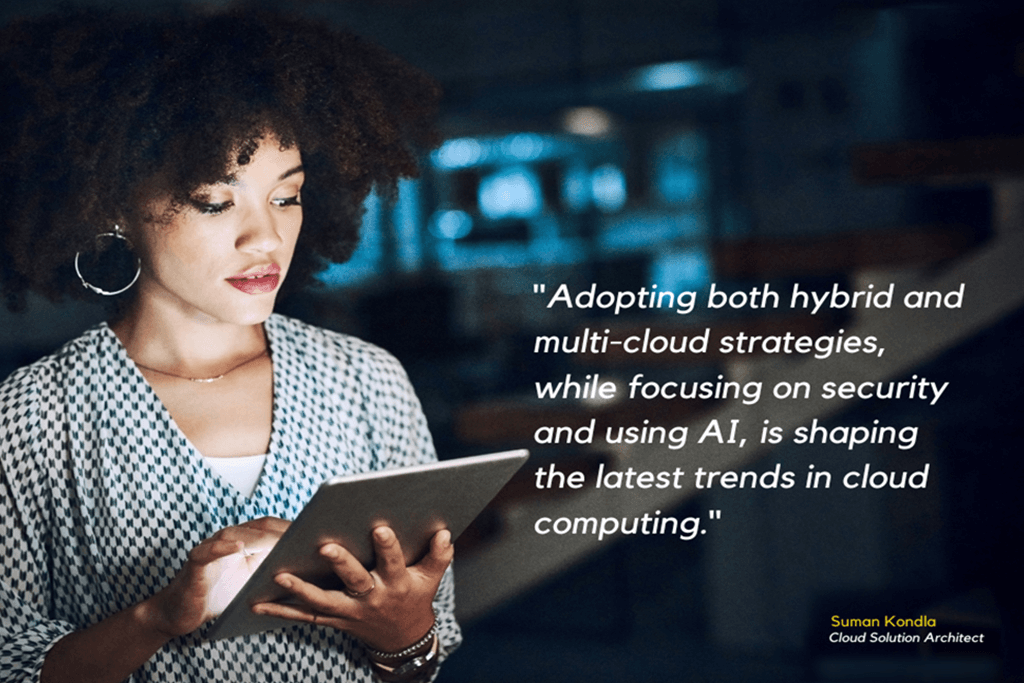
"As a cloud solution engineer, I see firsthand how these trends are transforming the industry. Embracing multi-cloud strategies, leveraging AI, and focusing on sustainability are not just technical choices but strategic moves that help businesses thrive in today's fast-paced world."
— Suman Kondla
Cloud computing is rapidly evolving, introducing new trends that empower businesses to work smarter and faster. At ePathUSA, we recognize the importance of staying ahead of these trends to provide cutting-edge cloud solutions tailored to our clients' needs. This article delves into the latest trends in cloud solutions and how they are shaping the future of business.
Businesses are increasingly adopting multi-cloud and hybrid cloud strategies, leveraging a mix of different cloud services or combining private and public clouds. This approach allows businesses to optimize performance, enhance flexibility, and mitigate the risk of dependency on a single provider (Smith, 2023).
Edge computing involves processing data closer to where it is generated—such as on a factory floor or in a smart car—rather than relying solely on centralized cloud data centers. This reduces latency and enhances performance for applications requiring real-time responses (Doe, 2023).
Serverless computing is gaining popularity for its cost-efficiency and scalability. Developers can focus on writing code without the burden of managing server infrastructure, accelerating the development process and allowing for rapid application deployment (Johnson, 2023).
Integrating artificial intelligence (AI) and machine learning (ML) with cloud solutions is revolutionizing business operations. From advanced data analysis and cybersecurity to automation, AI and ML are enabling companies to gain valuable insights and streamline processes. Leading cloud providers are expanding their AI and ML service offerings to meet this growing demand (Lee, 2023).
As cyber threats become more sophisticated, cloud security is of paramount importance. Innovations in this space include zero-trust security models, enhanced encryption techniques, and AI-driven threat detection methods. These advancements ensure robust protection for cloud-based data and applications (Brown, 2023).
Environmental sustainability is increasingly influencing cloud strategies. Cloud providers are prioritizing energy-efficient data centers and eco-friendly practices to minimize their carbon footprints, aligning with global efforts to combat climate change (Green, 2023).
At ePathUSA, we are committed to leveraging these trends to deliver superior cloud solutions that drive innovation and efficiency for our clients. By embracing multi-cloud strategies, edge computing, serverless architectures, AI and ML integrations, enhanced security measures, and sustainable practices, we help businesses transform and stay competitive in a rapidly evolving landscape.
Are you ready to transform your business with cutting-edge cloud solutions? Contact us at info@localhost or visit our website at ePathUSA.
References

In our digital world, keeping our online accounts secure is more important than ever. For a long time, we’ve used passwords to protect our information, but there’s a new method called passkeys that’s making things even safer. This article, crafted by ePathUSA's security experts, explains what passwords and passkeys are, why passkeys were developed, and why they’re important for our online safety.
Passwords are a combination of letters, numbers, and symbols that you use to log into your accounts. They’re like secret codes that only you know. The stronger and more unique your password, the harder it is for someone else to guess it.
Passkeys are a new way to log in that doesn’t rely just on something you know (like a password). Instead, passkeys use something you have (like your smartphone) and something you are (like your fingerprint or face). This makes logging in more secure and easier.
Passkeys were developed for a few important reasons:
Using passkeys is crucial for several reasons:
While passwords have been our go-to for a long time, passkeys offer a more secure and user-friendly way to protect our online accounts. By combining a device you have with your biometric data, passkeys make it much harder for hackers to access your information. As we look to the future, using passkeys will be essential for keeping our digital lives safe.
At ePathUSA, we are committed to enhancing your cybersecurity with the latest technologies and trends. For personalized support and more information on implementing passkeys, contact us at info@localhost or visit our website at ePathUSA.

In the contemporary business landscape, data is often heralded as the new oil, driving decision-making and strategic initiatives across industries. As organizations strive to become more data-driven, the implementation of analytics offers a treasure trove of opportunities. However, it also presents a series of challenges that businesses must navigate. This article explores both facets and how ePathUSA can assist companies in maximizing the benefits of analytics while mitigating the associated risks.
ePathUSA is well-positioned to assist businesses in overcoming these challenges and fully leveraging the opportunities that analytics provides. Here's how:
Implementing analytics presents a myriad of opportunities for businesses to enhance decision-making, improve efficiency, understand customers better, manage risks, and gain a competitive edge. However, challenges such as data quality, skill gaps, cost, data privacy, and change management can hinder progress. ePathUSA’s expertise in data integration, skilled professionals, cost-effective solutions, robust security measures, and change management support makes them an ideal partner for businesses looking to harness the power of analytics. By collaborating with ePathUSA, organizations can navigate the complexities of analytics implementation and unlock their full potential.

In today's fast-paced tech world, getting your product to market quickly is crucial. One effective strategy is building a Minimum Viable Product (MVP). An MVP lets you launch a product with just enough features to attract early adopters and gather valuable feedback for future development. Here’s a step-by-step guide on how to build an MVP and how ePathUSA can assist you in this journey.
An MVP is the simplest version of your product that can still deliver value to users. It includes the core features necessary to solve a specific problem for your target audience. The goal is to test the product idea with minimal resources and get feedback that will guide further development.
Building an MVP can be a complex process, but partnering with ePathUSA can streamline and enhance your efforts. Here’s how we can assist:
Building an MVP is a strategic way to bring your product to market quickly and efficiently. By focusing on core features and gathering valuable user feedback, you can develop a product that truly meets market demands. Partnering with ePathUSA ensures you have the expertise and resources needed to build a successful MVP and beyond. Contact us today to learn more about how we can help you turn your vision into reality.
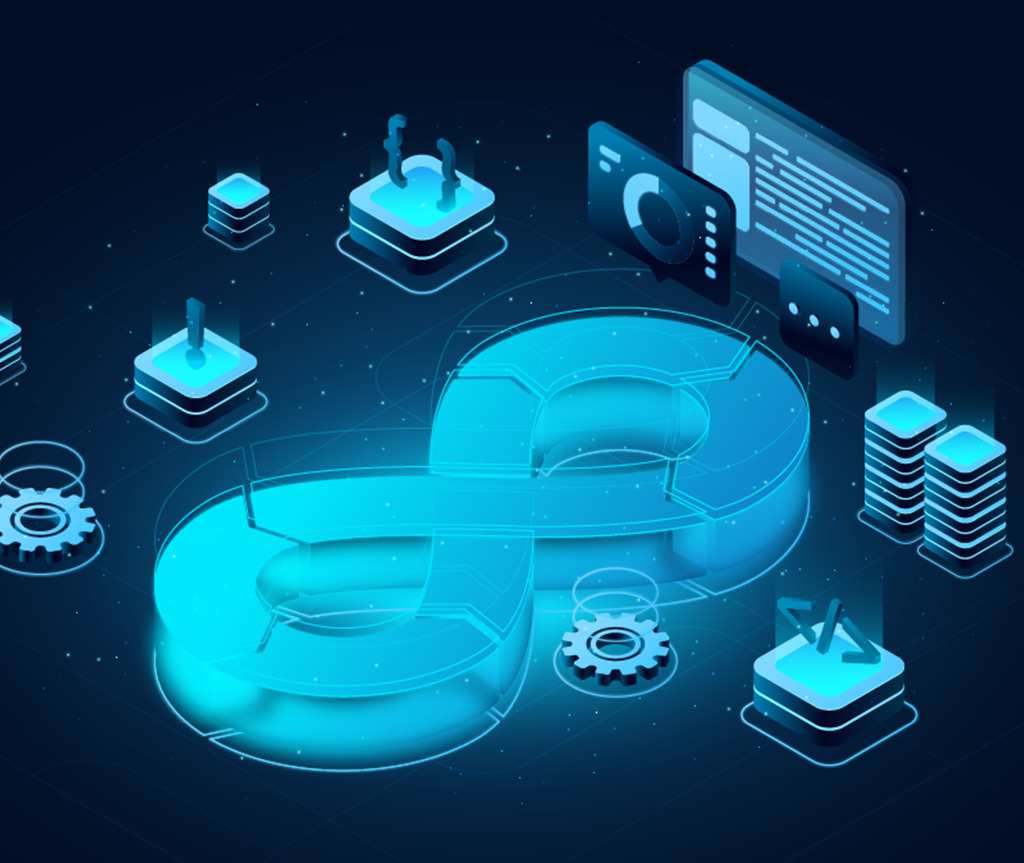
In today's fast-paced digital world, organizations are constantly seeking ways to innovate and improve their software development and operations processes. The fusion of Artificial Intelligence (AI) with DevOps practices is proving to be a game-changer, propelling efficiency, accuracy, and scalability to unprecedented levels. This blog explores how AI-driven DevOps is revolutionizing the landscape of software development and operations, and how ePathUSA can help businesses leverage these advancements for superior results.
AI-Driven DevOps integrates AI technologies with traditional DevOps practices to automate and enhance various stages of the software development lifecycle. This amalgamation aims to optimize processes such as code development, testing, deployment, and monitoring by leveraging machine learning (ML), natural language processing (NLP), and predictive analytics.
ePathUSA, with its extensive experience in IT services and solutions, is well-equipped to help organizations harness the power of AI-driven DevOps. Here’s how ePathUSA can assist:
The future of AI-driven DevOps looks promising, with continuous advancements in AI technologies paving the way for more sophisticated and intelligent DevOps solutions. As organizations increasingly adopt AI-driven DevOps, we can expect to see even greater improvements in efficiency, reliability, and innovation in software development and operations.
AI-driven DevOps is not just a trend but a transformative approach that is set to redefine how software is developed, deployed, and managed. By embracing AI, organizations can achieve faster delivery cycles, higher-quality software, and more resilient systems, ultimately driving business success in the digital age. With the expertise and support of ePathUSA, businesses can seamlessly transition to AI-driven DevOps and unlock their full potential.

In 2024, as businesses increasingly move to the cloud for its flexibility, scalability, and cost-efficiency, ensuring robust cloud security has become more critical than ever. With cyber threats evolving in sophistication, it’s crucial to stay ahead by understanding the top cloud security risks and how to mitigate them. At ePathUSA, we specialize in helping businesses navigate these challenges and secure their cloud environments effectively. Here are the top 10 cloud security risks in 2024 and how ePathUSA can help you tackle them.
Data breaches remain one of the most significant risks in the cloud. Unauthorized access to sensitive data can lead to financial loss, legal penalties, and reputational damage.
ePathUSA implements advanced encryption protocols and multi-factor authentication (MFA) to protect data both at rest and in transit. Our security experts also conduct regular vulnerability assessments and penetration testing to identify and address potential weaknesses.
Misconfiguration of cloud resources can lead to unintended exposure of sensitive information. This often occurs due to human error or lack of understanding of cloud settings.
ePathUSA offers configuration management services that ensure your cloud settings are optimized for security. We use automated tools to continuously monitor and correct misconfigurations, minimizing the risk of exposure.
Insider threats from employees or contractors can be intentional or accidental, leading to data leaks or sabotage.
ePathUSA deploys robust identity and access management (IAM) solutions to restrict access based on roles and responsibilities. We also conduct regular security training and awareness programs to educate employees about best practices and the importance of vigilance.
APIs are essential for cloud integration but can be a significant security risk if not properly secured, potentially exposing vulnerabilities to attackers.
ePathUSA ensures that all APIs are secured through rigorous testing and implementation of security best practices, such as rate limiting, authentication, and encryption. We also monitor API traffic for suspicious activities.
Cybercriminals can hijack user accounts through phishing attacks or exploiting weak passwords, gaining unauthorized access to cloud resources.
ePathUSA employs MFA, strong password policies, and regular account activity monitoring to detect and prevent account hijacking attempts. We also provide phishing simulation exercises to help employees recognize and avoid phishing scams.
Failing to comply with industry regulations and standards can lead to legal penalties and loss of trust.
ePathUSA helps businesses achieve and maintain compliance with relevant regulations such as GDPR, HIPAA, and PCI-DSS. Our compliance experts conduct regular audits and provide guidance on necessary adjustments to your cloud infrastructure.
Data loss can occur due to accidental deletion, hardware failure, or cyberattacks, resulting in significant business disruption.
ePathUSA implements robust data backup and disaster recovery solutions to ensure data is regularly backed up and can be quickly restored in case of loss. Our solutions include automated backups and geographically dispersed data storage to protect against localized failures.
Insufficient due diligence before adopting cloud services can lead to choosing providers that do not meet security requirements, putting your data at risk.
ePathUSA conducts thorough assessments of cloud service providers to ensure they meet stringent security standards. We help businesses evaluate potential providers based on their security capabilities, compliance certifications, and overall reliability.
DoS attacks can overwhelm cloud services, causing downtime and impacting business operations.
ePathUSA utilizes advanced threat detection and mitigation strategies to protect against DoS attacks. We deploy network traffic monitoring and anomaly detection tools to identify and respond to threats in real-time.
Shadow IT, where employees use unauthorized cloud services, can bypass security controls and introduce vulnerabilities.
ePathUSA implements comprehensive monitoring and control measures to detect and manage shadow IT. We also work with businesses to establish clear policies and provide approved alternatives to ensure employees have the tools they need without compromising security.
At ePathUSA, we understand that cloud security is a continuous process requiring vigilance and expertise. Our team of security professionals is dedicated to helping you secure your cloud environment through a combination of advanced technologies, best practices, and proactive monitoring.
In the ever-evolving landscape of cloud security, staying ahead of risks is essential for protecting your business. By understanding the top cloud security risks in 2024 and implementing the solutions provided by ePathUSA, you can ensure a secure and resilient cloud environment. Contact us today to learn more about how we can help you safeguard your cloud infrastructure and achieve peace of mind.

In today's fast-paced digital landscape, harnessing the power of cloud computing has become a cornerstone of success for enterprises across industries. However, navigating the complexities of cloud management requires expertise and resources that many businesses struggle to obtain. That's where ePathUSA steps in, offering a comprehensive suite of cloud-managed services designed to streamline operations, enhance security, and drive cost savings. In this blog post, we'll delve into how ePathUSA's tailored solutions can help enterprises optimize their cloud infrastructure for maximum efficiency and competitiveness.
One of the key advantages of cloud computing is its scalability, allowing businesses to adapt resources based on fluctuating demands. ePathUSA takes this flexibility to the next level by providing tailored scalability solutions that align precisely with each client's unique requirements. Whether you're experiencing rapid growth, seasonal spikes, or unexpected surges in traffic, ePathUSA ensures that your cloud infrastructure can seamlessly scale up or down to accommodate changes, without unnecessary costs or disruptions.
With ePathUSA managing your cloud infrastructure, your internal IT team can redirect their focus towards strategic initiatives that drive innovation and growth. By offloading routine tasks such as infrastructure provisioning, monitoring, and maintenance to ePathUSA's team of experts, your organization gains the agility and bandwidth to pursue transformative projects and stay ahead of the competition. ePathUSA acts as a trusted partner, providing proactive guidance and support to help you leverage the latest advancements in cloud technology effectively.
Security is a top priority in today's digital landscape, with cyber threats becoming increasingly sophisticated and pervasive. ePathUSA understands the importance of safeguarding your data and infrastructure against potential breaches and compliance violations. That's why we employ robust security protocols and best practices to protect your assets at every level. From encryption and access controls to threat detection and incident response, ePathUSA's comprehensive security measures ensure that your organization remains resilient in the face of evolving cyber threats.
Downtime can have severe consequences for businesses, leading to lost revenue, diminished customer trust, and reputational damage. ePathUSA prioritizes reliability and performance, leveraging advanced technologies and best practices to minimize downtime and maximize uptime for your critical systems and applications. By architecting resilient infrastructure with redundant components, load balancing, and auto-scaling capabilities, ePathUSA ensures that your operations remain uninterrupted, even under heavy loads or unforeseen disruptions.
Cost management is a critical aspect of cloud computing, and ePathUSA is committed to helping clients optimize their cloud spending for maximum return on investment (ROI). Our team of experts analyzes your usage patterns, identifies areas for optimization, and implements cost-saving strategies such as rightsizing, reserved instances, and usage monitoring. By aligning your cloud spending with your business objectives and eliminating wasteful expenditures, ePathUSA helps you achieve greater cost predictability and control, ultimately maximizing the ROI of your cloud investments.
ePathUSA's comprehensive cloud-managed services offer enterprises a strategic advantage in today's competitive business landscape. From tailored scalability and expertise to robust security protocols, reliability, and cost optimization, ePathUSA empowers organizations to unlock the full potential of cloud computing while driving innovation, efficiency, and growth. By partnering with ePathUSA, your enterprise gains a trusted ally committed to delivering tangible results and helping you stay ahead of the curve in the digital age.

In the dynamic realm of IT infrastructure, enterprises often face the dilemma of choosing between on-premise and cloud solutions. This decision carries significant implications for their operations, requiring a comprehensive analysis of benefits, risks, and costs. At ePathUSA, we specialize in guiding businesses through this decision-making process, offering tailored solutions to maximize efficiency and competitiveness. Let's explore how ePathUSA can help enterprises evaluate and implement on-premise and cloud services effectively:
With ePathUSA, enterprises gain access to tailored solutions designed to meet their specific requirements, whether it's deploying on-premise infrastructure for maximum control or harnessing the scalability of cloud solutions. Our team works closely with clients to assess their needs, evaluate their options, and develop customized strategies that align with their business objectives.
ePathUSA provides expert guidance and support throughout the entire deployment process, from initial assessment to implementation and ongoing management. Our team of certified professionals brings extensive experience and industry best practices to the table, ensuring that clients have the knowledge and resources they need to make informed decisions and achieve optimal outcomes.
Security is a top priority at ePathUSA, and we understand the importance of safeguarding our clients' data and infrastructure. Our comprehensive security measures, including encryption, access controls, and threat detection, help mitigate risks and ensure compliance with industry regulations. With ePathUSA managing their on-premise or cloud infrastructure, enterprises can have peace of mind knowing that their assets are protected against evolving cyber threats.
ePathUSA helps enterprises optimize their IT spending by providing cost-effective solutions that deliver maximum value. Whether it's minimizing upfront investment with cloud services or optimizing on-premise infrastructure for efficiency, our team works diligently to identify cost-saving opportunities and align expenses with business objectives. Through techniques such as rightsizing, usage monitoring, and strategic planning, ePathUSA helps clients achieve greater cost predictability and control.
At ePathUSA, we are committed to driving innovation and improvement in everything we do. Our team stays abreast of the latest trends and technologies in on-premise and cloud computing, allowing us to deliver cutting-edge solutions that position our clients for success in the digital age. Whether it's adopting emerging technologies, optimizing processes, or enhancing security measures, ePathUSA is dedicated to helping enterprises stay ahead of the curve and achieve their long-term goals.
ePathUSA serves as a trusted partner for enterprises navigating the complexities of on-premise and cloud solutions. With our tailored approach, expert guidance, enhanced security measures, cost optimization strategies, and commitment to continuous innovation, we empower clients to make informed decisions and achieve maximum efficiency and competitiveness in today's rapidly evolving IT landscape.
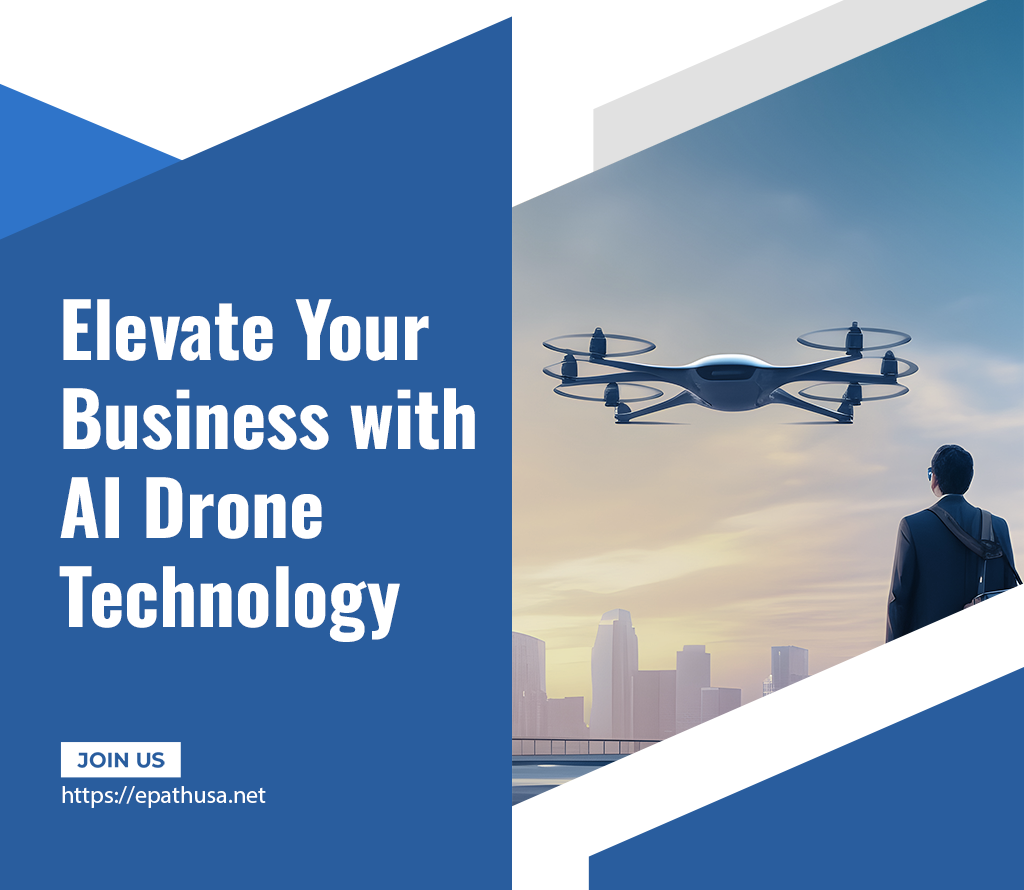
In the dynamic landscape of AI drone technology, businesses need a trusted partner to navigate the complexities and unlock its full potential. At ePathUSA, we bring unparalleled expertise and innovative solutions to help businesses harness the power of AI drones and propel their growth to new heights.
At ePathUSA, we understand the intricacies of AI drone technology like no other. With years of experience and a team of seasoned professionals, we have established ourselves as pioneers in this rapidly evolving field. Our comprehensive understanding of AI algorithms, drone capabilities, and industry-specific applications enables us to deliver tailored solutions that address the unique needs of our clients.
Whether you're in agriculture, construction, security, or any other industry, our AI drone solutions are designed to meet your specific requirements. From precision agriculture and infrastructure inspection to surveillance and beyond, we offer a range of services that leverage the latest advancements in AI and drone technology to drive efficiency and innovation.
At the heart of our AI drone solutions is the ability to collect and analyze vast amounts of data. By leveraging advanced analytics and machine learning algorithms, we transform raw data into actionable insights that empower businesses to make informed decisions and optimize their operations.
At ePathUSA, safety and compliance are our top priorities. We adhere to stringent regulatory standards and best practices to ensure that our drone operations are conducted safely and ethically. With ePathUSA, businesses can rest assured that their operations are not only efficient and effective but also compliant with relevant regulations.
By partnering with ePathUSA, businesses gain access to a trusted advisor and partner in their journey towards leveraging AI drone technology for growth and innovation. Our proven track record, industry expertise, and commitment to excellence make us the ideal partner for businesses looking to stay ahead of the curve and capitalize on the opportunities presented by AI drone technology.
ePathUSA stands out as a beacon of expertise and innovation. With our comprehensive solutions and industry-leading capabilities, we empower businesses to harness the power of AI drones and unlock new opportunities for growth and success. Partner with ePathUSA today and soar to new heights with confidence.

In the realm of data analytics, the integration of geospatial artificial intelligence (AI) is driving a paradigm shift. Geospatial AI combines the power of location data with advanced analytics, unlocking insights and opportunities that were previously inaccessible. In this blog, we'll explore the transformative potential of geospatial AI and how ePathUSA is uniquely positioned to empower businesses to thrive in this new era.
Geospatial AI enables businesses to analyze data in the context of location, providing a deeper understanding of spatial relationships and patterns. By incorporating geographic data into analytics workflows, businesses can uncover valuable insights that drive strategic decision-making.
By leveraging geospatial AI techniques such as spatial modeling and machine learning, businesses can enhance their predictive analytics capabilities. Whether it's predicting customer behavior, optimizing supply chain routes, or identifying emerging trends, geospatial AI empowers organizations to make more accurate forecasts and proactive decisions.
From urban planning and disaster response to retail optimization and precision agriculture, geospatial AI has myriad applications across industries. By optimizing resource allocation, minimizing risks, and improving asset management, businesses can enhance operational efficiency and drive cost savings.
At ePathUSA, we possess deep expertise in geospatial AI and spatial intelligence. Our team of seasoned professionals combines technical prowess with industry knowledge to deliver cutting-edge solutions that address the unique needs of our clients.
Whether you're a government agency, a commercial enterprise, or a non-profit organization, ePathUSA offers tailored geospatial AI solutions to meet your specific requirements. From geospatial data acquisition and analysis to custom application development, we provide end-to-end support to help you achieve your goals.
By partnering with ePathUSA, businesses gain access to the tools, insights, and expertise needed to thrive in the age of geospatial AI. Our solutions empower organizations to unlock new opportunities, optimize operations, and drive business growth in a rapidly evolving landscape.
Geospatial AI represents a transformative force in the world of analytics, offering unprecedented capabilities and opportunities for businesses across industries. With ePathUSA as your trusted partner, you can harness the power of spatial intelligence to unlock new insights, drive innovation, and achieve success in the digital age. Partner with ePathUSA today and embark on a journey of growth and discovery with confidence.

At ePathUSA, we're committed to empowering our clients with tools that facilitate informed decision-making, and Google Looker Studio stands out as a powerful ally in this pursuit. Here's why we believe it's a game-changer:
Whether you're a seasoned data analyst or just dipping your toes into the world of data visualization, Google Looker Studio offers a robust platform to unlock the full potential of your data. Ready to get started? Give Google Looker Studio a try today and embark on a journey of data-driven decision-making.
Got questions or need assistance getting started with Google Looker Studio?
Our team at ePathUSA is here to support you every step of the way. Contact us at 515-974-6778 or via email at Support@localhost. Together, let's harness the power of data to drive your success!
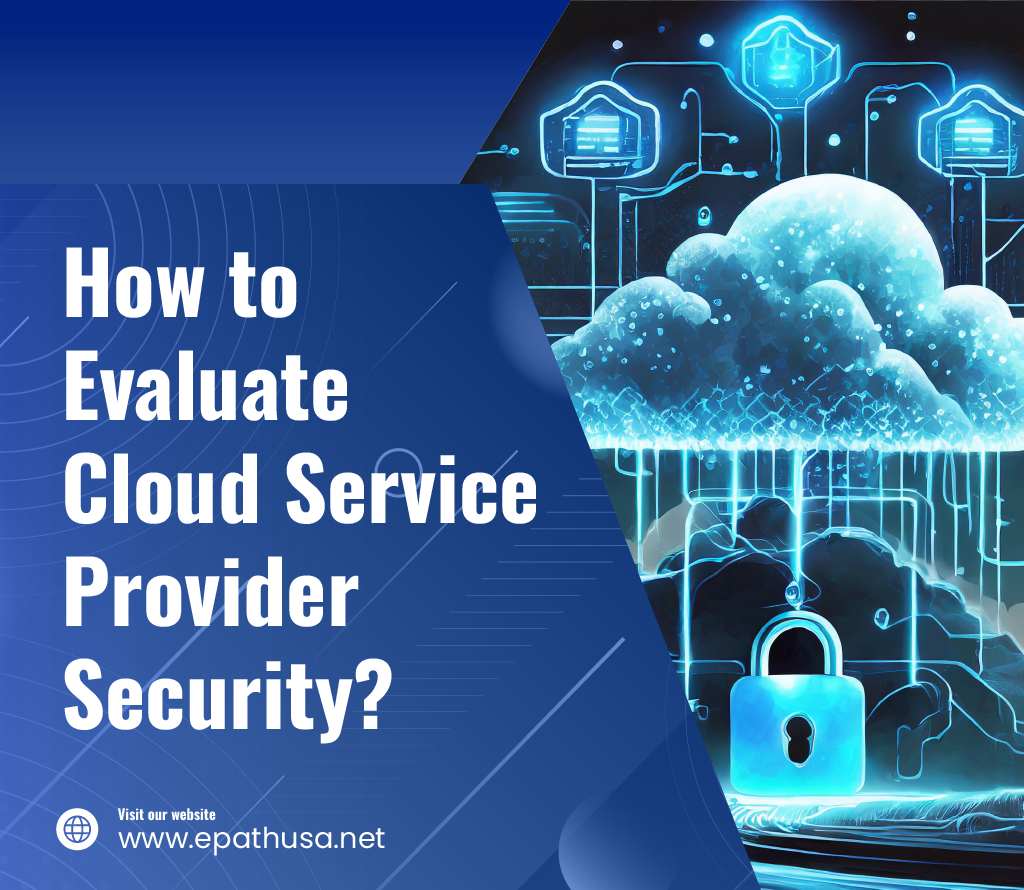
In an era where data breaches and cyber threats loom large, choosing the right cloud service provider (CSP) with robust security measures is paramount for safeguarding your business's digital assets. Evaluating the security posture of CSPs requires a thorough understanding of key factors and considerations. In this guide, we'll explore how to effectively evaluate cloud service provider security to make informed decisions that protect your organization's data and assets.
Begin by evaluating the CSP's compliance with industry standards and certifications such as ISO 27001, SOC 2, HIPAA, and GDPR. These certifications demonstrate the provider's commitment to maintaining stringent security protocols and adherence to regulatory requirements. However, it's important to note that compliance does not guarantee complete security. Look for CSPs that go above and beyond compliance requirements to implement additional security measures tailored to your business needs.
Data encryption is a cornerstone of cloud security, ensuring that sensitive information remains protected from unauthorized access. Evaluate the encryption mechanisms employed by the CSP, including encryption protocols, key management practices, and data segregation policies. Look for CSPs that offer transparent encryption practices and allow you to retain control over encryption keys, providing an added layer of security and control over your data.
Network security is essential for safeguarding data as it traverses networks between users, devices, and cloud resources. Assess the CSP's network security measures, including firewalls, intrusion detection systems (IDS), and network segmentation. Additionally, inquire about distributed denial-of-service (DDoS) mitigation strategies to protect against malicious attacks and ensure uninterrupted access to cloud services.
Effective identity and access management are critical for controlling user access to cloud resources and preventing unauthorized activities. Evaluate the CSP's IAM capabilities, including user authentication methods, multi-factor authentication (MFA), role-based access control (RBAC), and privilege escalation controls. Look for CSPs that offer granular access controls and robust auditing capabilities to monitor and track user activities in real-time.
Despite preventive measures, security incidents and data breaches may occur. Evaluate the CSP's incident response procedures, including incident detection mechanisms, response times, and communication protocols. Inquire about data breach notification procedures and the provider's transparency in disclosing security incidents to customers. Look for CSPs that prioritize transparency, communication, and collaboration during security incidents, fostering a culture of trust and accountability.
Physical security measures are often overlooked but are equally important for protecting data centers and infrastructure from physical threats and unauthorized access. Evaluate the CSP's data center security practices, including access controls, surveillance systems, environmental controls, and disaster recovery capabilities. Look for CSPs that implement robust physical security measures, adhere to industry standards for data center security, and conduct regular audits and assessments to ensure compliance and resilience.
Evaluating cloud service provider security requires a comprehensive assessment of various factors, including compliance certifications, data encryption practices, network security measures, identity and access management, incident response protocols, and physical security measures. By conducting due diligence and asking the right questions, organizations can select a CSP that prioritizes security and provides peace of mind in an increasingly complex threat landscape. Remember, securing your data is not just a matter of compliance—it's a strategic imperative for protecting your business's reputation, integrity, and future success.

Data is the lifeblood of businesses, ensuring robust security measures is paramount. With the widespread adoption of cloud computing, organizations are increasingly entrusting their data and applications to cloud service providers. However, as data breaches and cyber threats continue to escalate, understanding cloud security is essential for safeguarding sensitive information and maintaining trust with customers. In this blog, we'll explore what cloud security is, its importance, recent updates, and key considerations for implementing effective cloud security measures.
Cloud security refers to the set of policies, technologies, and controls designed to protect data, applications, and infrastructure in cloud environments. Unlike traditional on-premises IT infrastructure, where security measures are primarily controlled by the organization, cloud security operates under a shared responsibility model. In this model, the cloud service provider (CSP) is responsible for securing the underlying infrastructure, while the customer is responsible for securing their data and applications.
Cloud security is essential for several reasons:
Recent updates and news in cloud security have highlighted the following insights:
Cloud security encompasses various components, including:
Understanding cloud security is essential for organizations seeking to protect their data and applications in the cloud. By implementing robust security measures and adhering to best practices, organizations can mitigate risks, comply with regulatory requirements, and maintain trust with customers. Remember, cloud security is a shared responsibility, and collaboration between organizations and cloud service providers is crucial for ensuring a secure and resilient cloud environment. Stay informed about recent updates and news in cloud security to adapt your security strategy and stay ahead of emerging threats.
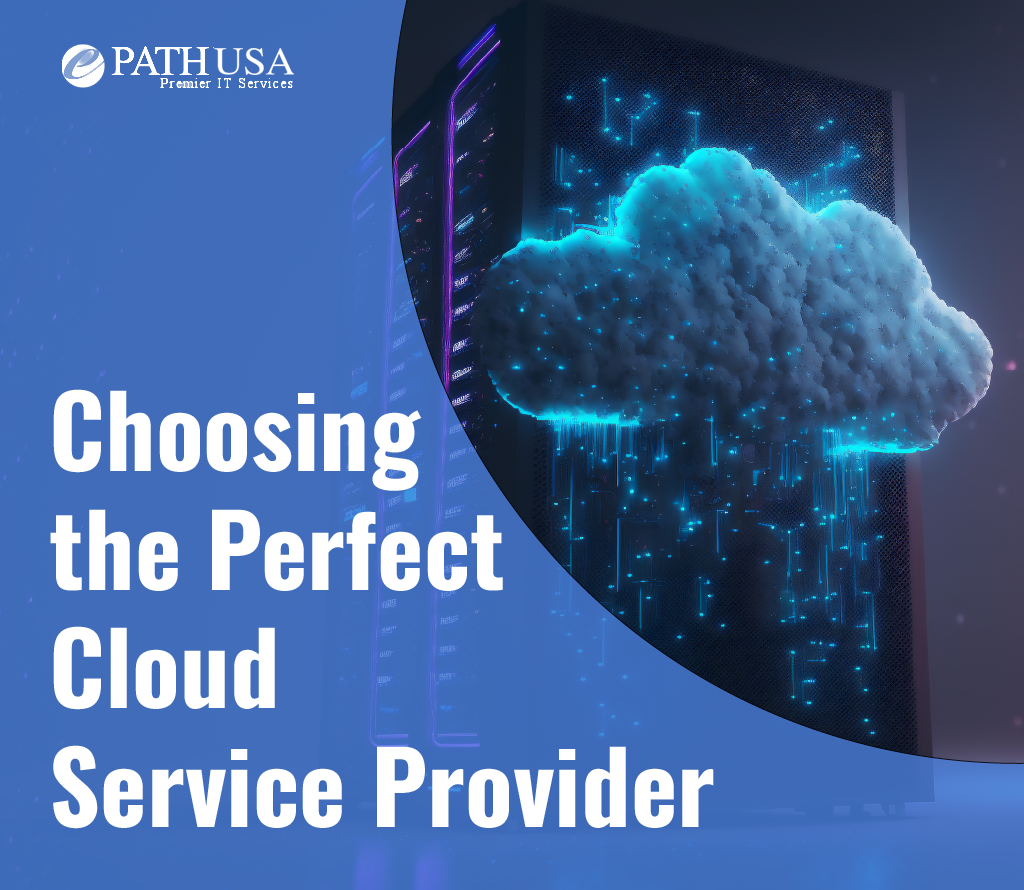
In today's rapidly evolving digital landscape, the decision to adopt cloud services is not just a matter of convenience but a strategic imperative for businesses seeking agility, scalability, and competitive edge. However, with a myriad of cloud service providers vying for attention, selecting the right one can be a daunting task. At ePathUSA, we understand the complexities involved and are committed to guiding businesses through this crucial decision-making process. In this comprehensive guide, we'll explore essential considerations and provide valuable insights to help you choose the perfect cloud service provider for your unique business needs.
Before embarking on your quest to find the ideal cloud service provider, take the time to define your business requirements thoroughly. Consider factors such as the type of applications you'll be hosting, anticipated workload, compliance needs, and budget constraints. Understanding your specific needs will serve as a guiding light in your selection journey.
Cloud service providers offer a vast array of services, ranging from basic infrastructure to advanced platform and software solutions. It's essential to assess the breadth and depth of services offered by each provider and determine how well they align with your business objectives. Look for providers that not only meet your current requirements but also have the flexibility to accommodate future growth and evolving needs.
Security is paramount in the digital age, especially when entrusting sensitive data to a third-party provider. Prioritize cloud service providers that have robust security measures in place, including data encryption, multi-factor authentication, and regular security audits. Additionally, ensure that the provider complies with industry-specific regulations and standards relevant to your business.
The performance and reliability of a cloud service provider can significantly impact your business operations. Evaluate factors such as uptime guarantees, latency, and responsiveness to ensure seamless and uninterrupted service delivery. Look for providers with a proven track record of reliability and a global network infrastructure to support your business needs.
Scalability is a fundamental feature of cloud computing that enables businesses to grow and adapt to changing demands seamlessly. Choose a cloud service provider that offers flexible scaling options, allowing you to dynamically adjust resources based on workload fluctuations. Whether you're experiencing rapid growth or seasonal spikes in demand, scalability ensures optimal resource utilization and cost-efficiency.
The pricing structure of cloud services can vary significantly among providers, making it essential to understand the cost implications of your chosen solution. Consider factors such as pricing tiers, usage-based billing, and any additional fees for data transfer or storage. Choose a pricing model that aligns with your budget constraints and usage patterns, ensuring transparency and predictability in your cloud spending.
In the event of issues or downtime, responsive and knowledgeable customer support can make all the difference in minimizing disruptions to your business operations. Prioritize cloud service providers that offer 24/7 customer support with multiple communication channels, including phone, email, and live chat. Test the provider's support responsiveness and expertise before making your final decision.
The geographic location of a cloud service provider's data centers can impact latency, data sovereignty, and compliance with regional regulations. Evaluate the provider's data center locations and ensure they align with your business's geographic footprint and regulatory requirements. Additionally, consider providers with a global presence to support your business's expansion into new markets.
Choosing the right cloud service provider is a critical decision that can significantly impact your business's success and growth trajectory. By understanding your requirements, assessing service offerings, prioritizing security, evaluating performance and reliability, embracing scalability and flexibility, understanding pricing models, evaluating customer support, and considering data center locations, you can make an informed decision that aligns with your business objectives and accelerates your journey to the cloud. At ePathUSA, we're committed to empowering businesses with the knowledge and expertise needed to navigate the complexities of the cloud and unlock the full potential of digital transformation.

In the ever-evolving tapestry of American business, the pursuit of innovation to enhance efficiency, scalability, and agility is paramount. ePathUSA, a trailblazing technology solutions provider, stands as a beacon, championing the transformative potential of cloud technology and emphasizing the strategic imperative of embracing cloud-managed services for organizations aiming to soar above the competition.
Witnessing the profound shift from traditional on-premises servers to the dynamic realm of scalable and flexible cloud solutions, ePathUSA recognizes that this evolution is more than a change—it's a revolution. Within this transformative landscape, cloud-managed services have emerged as a linchpin, addressing the complexities of maintaining and optimizing cloud infrastructure.
At ePathUSA, we understand the intricate challenges that enterprises face when navigating diverse cloud environments. The myriad of services, security concerns, and the relentless demand for updates can overwhelm internal IT teams. Our cloud-managed services act as a dedicated ally, seamlessly handling day-to-day operations, empowering organizations to zero in on their core business objectives.
Security is not just a feature but a fundamental promise in the digital era. ePathUSA takes pride in specializing in robust security measures within our cloud-managed services, ensuring data integrity, confidentiality, and availability. Moreover, our unwavering commitment to compliance ensures that organizations seamlessly align with industry regulations, mitigating risks associated with legal and regulatory non-compliance.
In the spirit of agility, ePathUSA recognizes the critical need for businesses to adapt swiftly to dynamic market conditions. Our cloud-managed services empower enterprises to dynamically scale resources, whether it's navigating increased workloads during peak times or optimizing during quieter periods. The elasticity of the cloud ensures optimal resource utilization, fostering innovation and responsiveness.
For ePathUSA, the road to financial prudence involves transforming the landscape of on-premises infrastructure costs. Our cloud-managed services operate on a subscription-based model, offering a transparent and predictable cost structure. This approach allows organizations to allocate resources efficiently, eliminating the burden of large upfront investments and fostering better financial management.
ePathUSA recognizes that true innovation blossoms when organizations can focus on their core competencies. By entrusting cloud management to us, businesses can redirect internal resources toward strategic initiatives. With routine tasks expertly handled, in-house teams are free to concentrate on driving innovation, fostering product development, and engaging in value-adding activities that propel business growth.
Acknowledging the non-stop nature of modern business, ePathUSA stands committed to uninterrupted digital operations. Our cloud-managed services provide round-the-clock monitoring and support, ensuring that any issues are swiftly identified and addressed. This proactive approach minimizes downtime, amplifies system reliability, and serves as a safety net for businesses navigating the competitive market.
ePathUSA proudly leads the charge in transforming business horizons by advocating for the adoption of cloud-managed services. As organizations navigate the complexities of the digital landscape, our expertise emerges as a strategic imperative. The ability to fortify security, achieve scalability, optimize costs, and enable a relentless focus on core competencies positions ePathUSA's cloud-managed services as a catalyst for sustained innovation and competitive advantage. Embracing the cloud, empowered by our efficient management, undeniably heralds a new era for contemporary American enterprises on their transformative journey.

Artificial Intelligence (AI) is no longer confined to the realms of science fiction; it's rapidly reshaping our world. From autonomous vehicles to personalized healthcare, AI is revolutionizing industries and driving unprecedented innovation. In this blog post, we'll explore the profound impact of AI on the future and how ePathUSA is poised to help businesses harness its transformative potential through customized AI applications.
AI is unlocking new frontiers of innovation, enabling machines to perform tasks that were once thought to be exclusively human. From natural language processing to computer vision, AI technologies are advancing at an exponential pace, fueling breakthroughs across industries.
AI-driven automation streamlines processes, increases efficiency, and frees up human resources for more strategic tasks. This improved productivity translates to cost savings, faster decision-making, and a competitive edge in the marketplace.
AI algorithms analyze vast amounts of data to deliver personalized experiences tailored to individual preferences and behaviors. From recommendation engines in e-commerce to predictive analytics in healthcare, AI enhances customer satisfaction and engagement.
Virtually every industry stands to benefit from AI's transformative capabilities. In healthcare, AI-powered diagnostics improve accuracy and speed up treatment decisions. In finance, AI-driven algorithms optimize investment strategies and detect fraud. The potential applications of AI are limitless.
ePathUSA boasts a team of AI experts with deep domain knowledge across various industries. Whether you're looking to implement machine learning, natural language processing, or computer vision, ePathUSA has the expertise to bring your AI vision to life.
Recognizing that every business has unique needs, ePathUSA specializes in crafting customized AI solutions tailored to your specific requirements and objectives. From initial ideation to deployment and beyond, they collaborate closely with clients to ensure the final product aligns seamlessly with their vision.
Staying at the forefront of AI advancements, ePathUSA leverages cutting-edge technologies and tools in their development process. Whether it's deep learning frameworks like TensorFlow or cognitive services from major cloud providers, ePathUSA ensures your AI application benefits from the latest innovations.
ePathUSA prioritizes ethical AI practices, ensuring that your AI application is developed and deployed responsibly. From data privacy to algorithmic fairness, they adhere to industry best practices and regulatory standards, mitigating potential risks and fostering trust among users.
ePathUSA doesn't consider their job done after the initial deployment of your AI application. They provide ongoing support and optimization services, monitoring performance, addressing any issues, and making enhancements based on user feedback and evolving business needs.
As we stand on the precipice of a new era defined by AI, businesses must seize the opportunity to leverage its transformative potential. With ePathUSA as your trusted partner, you can navigate the complexities of AI development with confidence. Their expertise, customized solutions, and commitment to innovation position them as a leading force in shaping the future of AI-driven innovation. Embrace the possibilities of tomorrow with ePathUSA by your side, and unlock new realms of possibility in the ever-evolving landscape of AI.

In the realm of software product development, having a reliable partner can make all the difference. ePathUSA stands out as a leading force, ready to empower businesses in their journey towards creating innovative and effective software solutions. In this blog post, we will explore how ePathUSA can play a pivotal role in enhancing the process and outcomes of your software product development endeavors.
ePathUSA fosters a collaborative approach, working closely with clients to understand their unique business needs, challenges, and goals. This strategic partnership ensures that the software developed aligns seamlessly with the client's vision.
With a wealth of experience spanning various industries, ePathUSA brings valuable insights and best practices to the table. Whether you're in healthcare, finance, e-commerce, or any other sector, their diverse expertise ensures tailored solutions that meet industry-specific standards and regulations.
ePathUSA adopts agile development methodologies, promoting flexibility and adaptability throughout the software development lifecycle. This iterative approach allows for continuous feedback, ensuring that the final product meets evolving requirements and exceeds expectations.
Innovation is at the core of ePathUSA's ethos. They strive to create software solutions that not only address current challenges but also position clients for future success. This forward-thinking mindset enables businesses to stay ahead in the ever-changing technological landscape.
ePathUSA understands that one size doesn't fit all. They specialize in crafting customized solutions, ensuring that the software developed caters specifically to your business requirements and objectives.
From ideation and planning to deployment and maintenance, ePathUSA offers comprehensive end-to-end services. This streamlined approach simplifies the development process, allowing clients to focus on their core business activities.
Staying at the forefront of technological advancements, ePathUSA employs cutting-edge tools and frameworks in their development process. This commitment to staying current ensures that your software product leverages the latest innovations.
Recognizing the critical importance of security, ePathUSA integrates robust measures into the software development process. This is particularly vital for industries with strict regulatory compliance standards, ensuring that your software meets all necessary requirements.
ePathUSA doesn't consider the job done after deployment. They provide ongoing support and maintenance, addressing any issues promptly and proactively making improvements based on user feedback and emerging needs.
In the dynamic landscape of software development, partnering with a trusted ally like ePathUSA can significantly elevate your journey. Their strategic collaboration, industry experience, and commitment to innovation position them as a valuable partner in bringing your software vision to life. With ePathUSA by your side, you not only gain a development team but a strategic partner invested in your success.
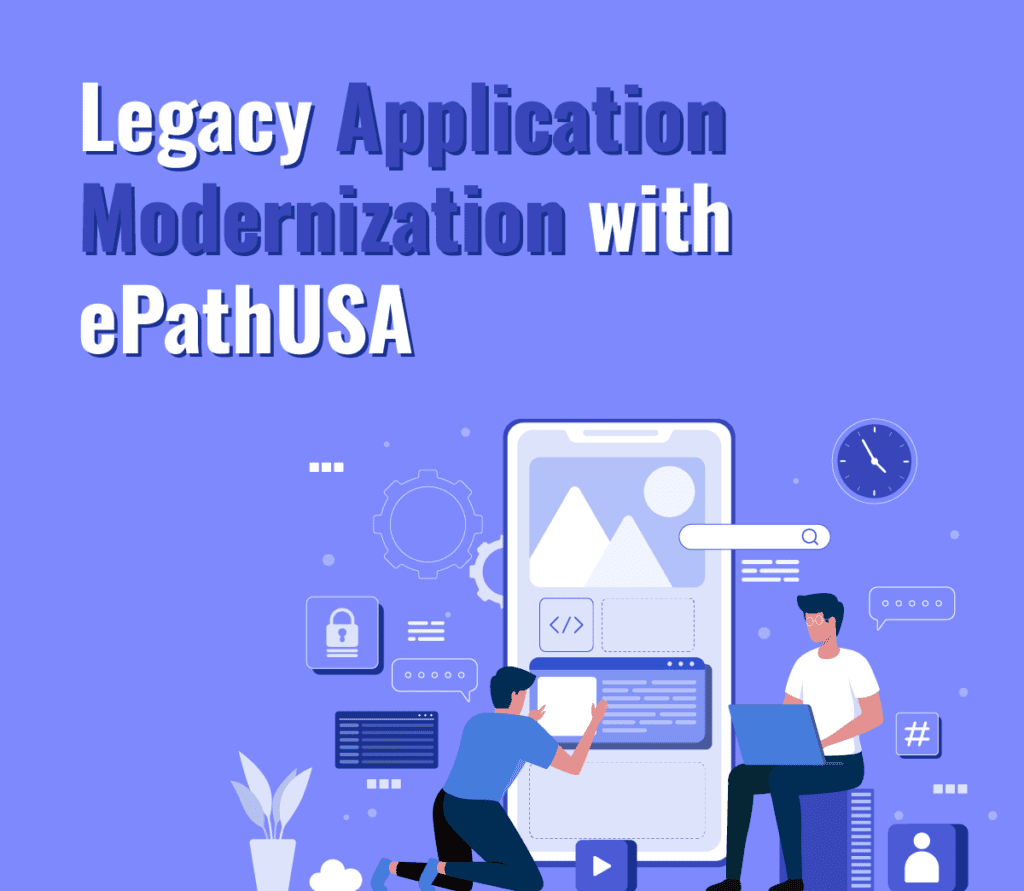
In the fast-evolving landscape of technology, businesses are constantly faced with the challenge of keeping their software systems up-to-date. Legacy applications, though once the bedrock of operational efficiency, can become a bottleneck as technology advances. Recognizing the need for modernization is the first step towards unleashing your business's full potential. In this blog post, we will explore the various types of legacy application modernization needs and how ePathUSA stands out as the ideal partner for these services.
Legacy applications, while robust in their time, can hinder progress due to outdated technologies, security vulnerabilities, and lack of scalability. Recognizing the signs that your business needs a modernization overhaul is crucial for staying competitive in today's dynamic market.
Legacy systems often rely on outdated programming languages and frameworks. Modernization involves upgrading these technologies to ensure compatibility with contemporary solutions.
Legacy applications may struggle to handle the growing demands of a business. Modernization focuses on optimizing scalability to accommodate increasing workloads.
Older applications may lack the robust security features required to protect against modern cyber threats. ePathUSA emphasizes security enhancements during the modernization process.
Legacy applications may have a clunky user interface that hampers user experience. Modernization aims to create an intuitive and user-friendly interface.
As businesses adopt new technologies, integration becomes crucial. ePathUSA specializes in seamlessly integrating modern solutions with existing systems.
ePathUSA emerges as a beacon in the realm of legacy application modernization, offering tailored solutions to meet diverse business needs.
Our seasoned experts conduct thorough assessments to understand your unique business requirements, ensuring a customized modernization strategy.
Utilizing agile methodologies, ePathUSA ensures that the modernization process is efficient, transparent, and minimally disruptive to your ongoing operations.
Security is at the forefront of our modernization efforts. ePathUSA employs cutting-edge security measures to safeguard your applications and data.
We optimize applications for scalability, ensuring they can handle current and future demands, resulting in improved performance.
ePathUSA places a strong emphasis on user experience, revamping interfaces to be intuitive and responsive.
Legacy application modernization is not just a necessity; it is an opportunity to revitalize your business. By choosing ePathUSA as your partner in this journey, you are not just upgrading your software – you are future-proofing your business. Embrace innovation, enhance security, and boost scalability with ePathUSA's tailored modernization services. Contact us today to unlock the full potential of your applications and stay ahead in the ever-evolving tech landscape.

Overcoming challenges in mobile app design requires a combination of strategic planning, user-centric approaches, and continuous improvement. Here are some strategies to address common challenges:
By incorporating these strategies, you can navigate the challenges associated with mobile app design and create a user-friendly, visually appealing, and successful mobile application.
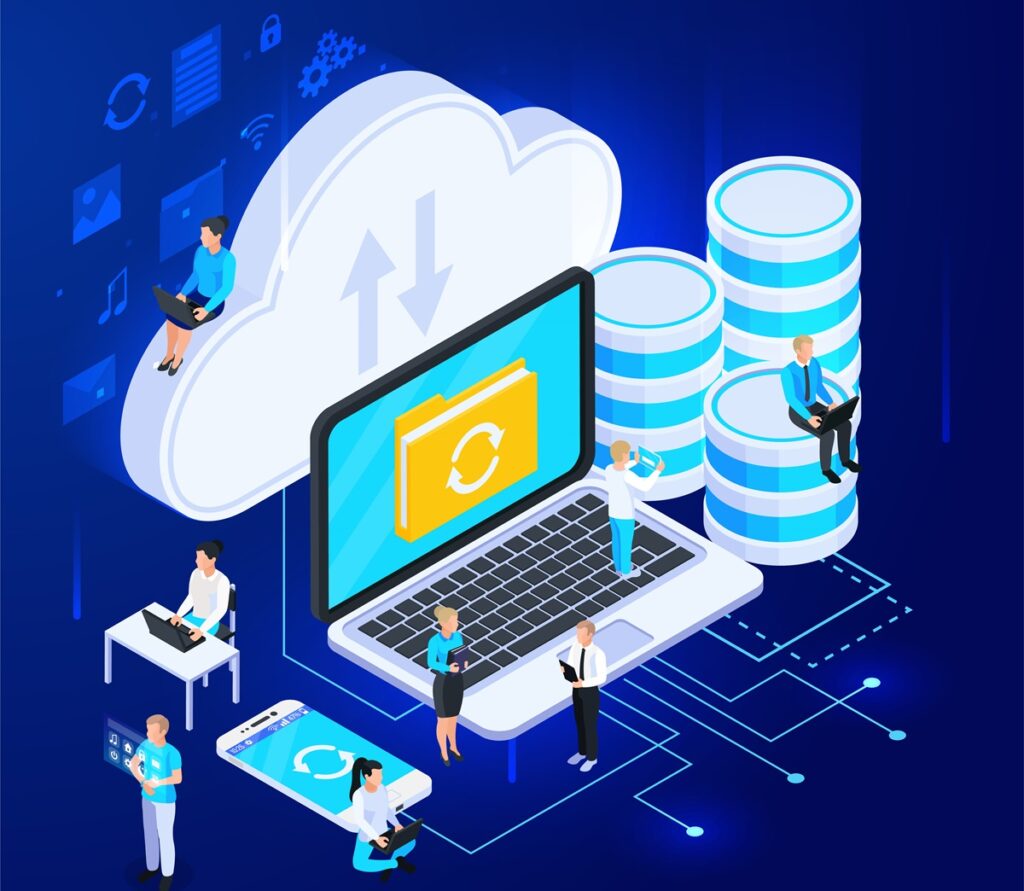
As businesses increasingly adopt hybrid-cloud solutions for their IT infrastructure, it's crucial for business owners to grasp the technical nuances that come with it. In this blog post, we'll break down the cloud challenges and complexities of hybrid-cloud deployment in simpler terms and provide practical insights for business leaders.
Embracing hybrid-cloud solutions doesn't have to be overwhelming. By breaking down technical complexities into simpler terms, business owners can make informed decisions, ensuring that their IT infrastructure is not only efficient but also future-ready. The key is to understand the basics, adopt practical strategies, and stay proactive in adapting to evolving technology.

In the digital age, businesses are increasingly reliant on cloud solutions to manage their data. However, navigating the complexities of data management in the cloud requires not just technological prowess but also strategic guidance. ePATHUSA, a leading innovator in cloud services, offers comprehensive solutions to empower businesses in effectively managing their data in the cloud.
ePATHUSA prioritizes robust security protocols, employing cutting-edge encryption methods and conducting regular security audits to ensure data integrity. With a meticulous focus on compliance standards, they assist businesses in meeting regulatory requirements like GDPR or HIPAA.
Through our unified data platforms and expertise in seamless integration, We breaks down data silos. Our solutions facilitate the smooth flow of data across various cloud systems, ensuring interoperability and coherence within the organization.
ePATHUSA's scalable infrastructure solutions enable businesses to adapt to evolving data needs. By employing auto-scaling and performance optimization techniques, they ensure consistent performance even during peak demands.
The comprehensive data governance strategies implemented by ePATHUSA empower businesses with granular control over data access and usage. Our robust access control mechanisms and data governance policies ensure transparency and accountability.
ePATHUSA crafts customized security measures, aligning with the unique needs of each business. Our proactive approach to security mitigates risks and safeguards sensitive data throughout its lifecycle.
By offering unified data platforms and robust integration services, ePATHUSA facilitates a harmonious data ecosystem. Our expertise ensures that disparate systems work cohesively, enhancing operational efficiency.
ePATHUSA's scalable infrastructure provisions allow businesses to effortlessly scale their resources as data demands grow. This agility ensures optimal performance without compromising on efficiency.
Employing advanced data governance tools and practices, ePATHUSA empowers businesses to enforce strict governance policies. Our solutions enable businesses to maintain data integrity and regulatory compliance.
ePATHUSA goes beyond offering mere technological solutions. Our commitment to fostering a data-centric culture within organizations, providing ongoing support, and offering comprehensive training elevates businesses to leverage data as a strategic asset.
ePATHUSA stands as a formidable partner for businesses seeking to conquer the challenges of data management in the cloud. Our holistic approach, fortified by technological prowess and strategic guidance, ensures that businesses not only overcome challenges but also thrive in the realm of cloud-based data management.
By embracing ePATHUSA's tailored solutions and expertise, businesses can confidently navigate the complexities of data management in the cloud, unlocking unparalleled opportunities for growth and innovation.

Azure Cost Management is a suite of tools and services that helps you monitor, analyze, and optimize your Azure spending. It is a critical tool for any organization that uses Azure, as it can help you save money and get the most out of your investment.
This guide will provide you with a comprehensive overview of Cost Management in Azure. We will cover the following topics:
Cost Management in Azure provides you with a comprehensive view of your Azure spending. It includes data on all of your Azure resources, including VMs, storage, databases, and networking. You can view your costs by subscription, resource group, resource type, or tag.
Cost Management also offers a number of features to help you optimize your spending. For example, you can create budgets, set alerts, and forecast your future costs. You can also use Cost Management to identify underutilized resources and right-size your deployments.
There are many benefits to using Cost Management in Azure. Here are a few of the most important:
To use Cost Management in Azure, you can access it through the Azure portal, the Azure CLI, or the Azure PowerShell SDK.
Once you have logged in to Cost Management, you will see a dashboard that provides an overview of your Azure spending. You can drill down into this data to view costs by subscription, resource group, resource type, or tag.
You can also use Cost Management to create budgets, set alerts, and forecast your future costs.
Here are some specific examples of how to use Cost Management in Azure:
Here are some best practices for cost management in Azure:
Cost Management in Azure also offers a number of advanced features, such as:
Cost Management in Azure is a powerful tool that can help you optimize your Azure spending and get the most out of your investment. By following the best practices outlined in this guide and using the advanced features available in Cost Management, you can save money and improve your bottom line.

If your email has been compromised, here are some steps you can take to address the situation of a Compromised Email Account:

In the world of cloud computing, our top priority is protecting our data and personal information. One powerful tool we use for this is called Multi-Factor Authentication (MFA). In this article, we'll explain MFA in simple terms, talk about how it helps in Microsoft 365 and Azure, and introduce a trusted partner called ePATHUSA who can guide you through the process.
Multi-Factor Authentication, or MFA, is like having multiple locks on the door to your online accounts. Instead of just using a single password, MFA asks for more than one type of proof before letting you in. It's like needing a key, a fingerprint, and a special code to access your account.
Microsoft knows how important MFA is for keeping our cloud services secure. By using MFA in Microsoft 365 and Azure, we add an extra layer of protection to our infrastructure and user accounts. This means that even if someone guesses our password, they can't get in without the additional proof, like a code from our phone.
Setting up an MFA can be a bit complicated. That's where ePATHUSA, a certified Microsoft partner, comes in. They have the knowledge and experience to help businesses of all sizes customize MFA to fit their specific security needs.
While MFA is excellent for security, there are some things to watch out for:
Here's how you can set up MFA in Microsoft 365 and Azure:
In the ever-changing world of online security, Multi-Factor Authentication is like a strong fortress protecting us from unauthorized access and data breaches. Microsoft 365 and Azure, with the help of experts like ePATHUSA, provide a robust system for MFA, ensuring our digital world stays safe.
By implementing MFA, avoiding common pitfalls, and making sure it's user-friendly, we can safeguard our digital assets. Embrace Multi-Factor Authentication, strengthen your cloud security, and defend against the threats of the digital age.

Welcome to another informative blog where we'll be diving deep into Azure's top security best practices. In the world of cloud computing, security is paramount, and Azure offers a range of powerful tools and features to help you safeguard your data and applications. In this article, we'll explore seven essential azure security practices that you should implement for a robust Azure environment. Let's get started!
First on our list is the fundamental practice of encrypting data both at rest and in-flight. Even if an attacker gains access to your database, your data remains protected. Azure provides the Transparent Data Encryption (TDE) feature, which encrypts data at rest by default. Azure manages the encryption keys, and you can also bring your own for added security. Additionally, make sure to secure data in transit with Transport Layer Security (TLS) to ensure secure communication.
Protecting your database from unauthorized access is a cornerstone of Azure security. Azure allows you to configure firewalls for your databases, enabling you to control which IP addresses are allowed to connect. This is a powerful mechanism for blocking unwanted traffic during development and testing phases. For production environments, consider using Azure Private Link to connect to databases securely, shielding them from external threats.
If you're using virtual machines in Azure, it's crucial to control access effectively. Rather than leaving RDP or SSH ports open, deploy your VMs within a virtual network. Azure Bastion is a fantastic tool that allows you to securely connect to your VMs without exposing them to the public internet. By eliminating the need for public IP addresses on your VMs, Azure Bastion enhances security.
Safeguarding application secrets, such as API keys and connection strings, is a critical step in Azure security. Avoid storing these sensitive credentials in your codebase. Instead, utilize Azure Key Vault, a centralized repository for secrets, keys, and certificates. Azure Managed Service Identity allows your services to securely connect to Key Vault without exposing sensitive information, improving overall security posture.
Isolating your production environment from development and testing is a smart practice. By creating a dedicated Azure subscription for production, you reduce the risk of accidentally mixing environments and ensure the integrity of your data. Leveraging Role-Based Access Control (RBAC) within separate subscriptions allows you to finely control access and maintain a robust security framework.
Web applications are frequent targets for cyberattacks. Protecting them is essential. Implementing a gateway service like Azure Front Door or Application Gateway combined with a web application firewall provides advanced security capabilities. These tools can detect and block threats such as SQL injection and cross-site scripting attacks, enhancing your web application's resilience.
Last but not least, we arrive at a game-changer: Azure Security Center. This powerful service offers insights into your security status, actionable recommendations, and the means to implement these recommendations directly. Azure Security Center allows you to periodically assess the security of your resources, receive alerts, and swiftly address any vulnerabilities. It's your trusted partner in keeping your Azure environment secure.
As you embark on your journey to implement these Azure security best practices, consider partnering with ePATHUSA. With a decade of experience in cloud solutions, ePATHUSA stands ready to assist you in your quest for a secure Azure environment. Whether it's encrypting data, securing virtual machines, or implementing Azure Security Center, ePATHUSA's expertise ensures a seamless and effective security strategy.
From configuring firewalls to setting up Azure Private Link, ePATHUSA understands the intricate details of Azure's security offerings. As you endeavor to safeguard your data, applications, and users, ePATHUSA's guidance will prove invaluable. With our support, you can confidently adopt these security best practices and leverage Azure's full potential while keeping cyber threats at bay.
In the ever-evolving landscape of cloud security, implementing these best practices in your Azure environment is crucial. From encrypting data to utilizing Azure Security Center, each step plays a pivotal role in fortifying your defenses. By partnering with ePATHUSA, you can rest assured that your Azure security strategy is in capable hands. So, embrace these practices, enhance your security posture, and chart a course toward a more secure cloud journey. Stay secure, stay empowered!
Security is not a product; it's a process. It's not about being perfect, it's about reducing risk.
- Robert E. Davis
When it comes to Azure security best practices, this quote encapsulates the essence of the approach you should adopt. Azure provides a robust platform for building and deploying applications, but ensuring the security of your resources requires continuous effort and adherence to well-established security practices.
– Suman Kondla ( Azure Solution Architect)

Want to ace your job interview and land that open job you have been seeking? Here are tips to help you prepare, stand out from other candidates, and land the job of your dreams.
If you follow the above strategies, you will be as prepared as any candidate an interviewer has ever seen. Good luck!

For many job seekers, a great resume is the differentiator between getting your dream job and just getting a job. It does take time to write a good resume and is not easy when you are trying a find a job. Use the following tips to get your resume to stand out. You will start getting interviews in no time! Let's get started.
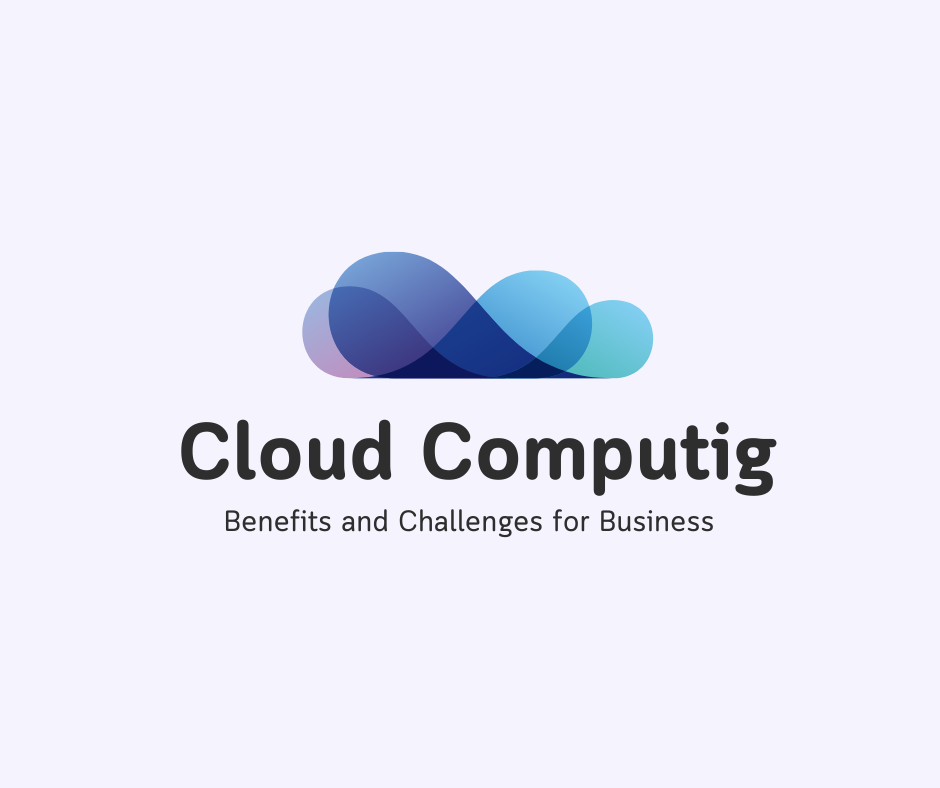
Cloud computing is the delivery of computing services over the internet. These services can include servers, storage, databases, software, and more, and are offered on a pay-as-you-go basis. Cloud computing is becoming increasingly popular among businesses of all sizes due to its many benefits. In this blog, we will explore the cloud computing benefits and challenges for your business.
n conclusion, cloud computing has become a crucial element in modern business operations, and the benefits it provides are too significant to ignore. However, businesses must overcome the challenges associated with cloud computing to take advantage of these benefits fully.
At ePATHUSA, we offer cloud computing services that can help your business overcome these challenges and ensure a successful transition to the cloud. Our team of experts can guide you through the migration process, implement the necessary security measures, and ensure seamless integration with your existing systems. With our cloud computing services, your business can take advantage of the scalability, cost savings, and increased collaboration that the cloud offers. Contact ePATHUSA today to learn more about how we can help your business with cloud computing services.

Human trafficking is a global problem that affects millions of people every year. It is a form of modern-day slavery in which individuals are bought, sold, and exploited for labor or sex. Trafficking victims can be found in every country and in every sector of the economy, from agriculture to construction to the sex industry.
Trafficking victims can be men, women, and children of all ages and backgrounds. They may be lured by false promises of a better life or jobs, or they may be forced into trafficking through violence and intimidation. Once in the grip of traffickers, victims are often stripped of their identity and freedom and are subject to physical and psychological abuse.
Combating human trafficking requires a multi-faceted approach. It is important to increase awareness about trafficking and to provide support to victims. Try to be aware of your surrounding and watch for indicators. There are plenty of resources online and Department of Homeland Security about the indicators. Remember, if you suspect someone is a victim of human trafficking, you can contact the National Human Trafficking Hotline at 1-888-373-7888 for help. ePATHUSA works to raise awareness about human trafficking and advocates for stronger laws and policies to combat it. We will support the fight and help raise awareness to bring an end to this devastating human rights violation.

In today's digital age, cybersecurity is more important than ever before. With the increasing use of technology in our daily lives, the risk of cyber attacks and data breaches has also risen. It's crucial for both individuals and businesses to understand the importance of cybersecurity and take the necessary steps to protect themselves.
Cyber attacks come in many forms, from phishing scams and malware to ransomware and data breaches. Phishing scams involve hackers posing as a reputable source, such as a bank or a government agency, to trick individuals into giving away sensitive information. Malware is a type of software that is designed to damage or disrupt computer systems. Ransomware is a type of malware that encrypts a victim's files and demands payment in exchange for the decryption key. Data breaches occur when hackers gain unauthorized access to sensitive information, such as personal data or financial information.
The consequences of a cyber attack can be severe. Individuals can suffer financial loss, identity theft, and damage to their reputation. Businesses can suffer loss of revenue, damage to their reputation, and even the loss of intellectual property.
In order to protect yourself and your business from cyber attacks, it is essential to implement cybersecurity measures. This includes implementing strong passwords and regularly updating them, using anti-virus software and firewalls, and being vigilant against phishing scams.
In addition to these basic measures, businesses should also conduct regular security audits and risk assessments, and have a comprehensive incident response plan in place. It's also critical to provide regular cybersecurity training to employees and make sure that they understand the importance of being vigilant against cyber threats.
The threat landscape is constantly changing, and it's important to stay up to date on the latest cybersecurity trends and threats. This includes keeping an eye out for new types of malware and phishing scams, and staying informed about the latest vulnerabilities and patches for the software and systems you use.
One way to stay informed is to subscribe to cybersecurity news and alerts, and to follow reputable cybersecurity experts on social media. Additionally, attending cybersecurity conferences and events can be a great way to learn about the latest trends and threats, as well as to network with other professionals in the field.
Cybersecurity is a critical issue that affects both individuals and businesses. In today's digital age, it's essential to understand the importance of cybersecurity and take the necessary steps to protect yourself and your business from cyber attacks. From implementing basic security measures to staying informed about the latest threats, there are many steps that can be taken to protect yourself and your business in the digital age.
Epathusa is a leading provider of top-tier security services, dedicated to protecting your business from online threats and ensuring the safety of your data. Trust us to secure your digital assets and give you peace of mind.

Instead of buying and installing software or hardware, you rent Infrastructure to run on in a virtual environment. This type of cloud computing is one of three main categories, along with software as a service (SaaS) and platform as a service (PaaS.).
IaaS can be a cost-efficient option for any organization where the cloud provider manages resources such as storage, servers, and networks and delivers them to subscribers. IaaS benefits enterprises by potentially making workloads faster, easier to manage, more flexible, and cheaper.
In the Infrastructure as a service model, a cloud provides the on-premises elements to deliver a data center experience. This includes server hardware, the virtualization element, and storage and networking equipment.
Companies that provide Infrastructure as a service, such as Amazon Web Services, offer many additional features with it, including:
Cloud computing enables users to use automation and orchestration to implement policies that make details of their Infrastructure smaller and more efficient. For example, a user can set load balancing policies to ensure that their application remains available and performant.
With this technology, users have access to all the resources they need to install their software and use the services of the platform provider. In addition, these providers can offer customers monitoring tools and information on when and how much resource use has occurred so that they may participate in the control and management of their own computing needs, as well as provide disaster recovery equalization options or opportunities.
Cloud computing models require a service provider. This provider is usually a third-party organization that provides IaaS, meaning the cloud computing company already has a presence in its Infrastructure. A business might also deploy its private cloud, becoming the provider of services for that Infrastructure.
Businesses are choosing to switch over to IaaS because it is more convenient, faster, and cost-efficient. In addition, with IaaS, you can rent or lease your Infrastructure from another business.
If you need to run a temporary workload on the cloud, like one that changes often or is experimental with unpredictable demands, then IaaS providers are your answer. Cloud computing services like IaaS provide the resources needed for a faster project than traditional Infrastructure can offer.
Once the new software is thoroughly tested and refined, it could be deployed in a more traditional, on-premises environment. Conversely, if the cost of committing to a long-term deployment is less than a traditional one, the organization can save on that type of deployment.
Businesses can use IaaS providers to save significant capital on hardware and software by paying only for the resources they use.
Private cloud offerings with extreme control and scalability still exist, even when using a public cloud provider. However, ownership costs of the hardware are at hand.
Cloud billing is a convoluted process that can confuse large businesses and cause problems where large service fees are incurred. Oversee your IaaS usage and bills, so you don't find yourself with excessive bills for services not used.
Insight is common when using IaaS, making it difficult to manage or monitor your system. However, the lack of detail from the infrastructure provider, systems management, and monitoring problems are associated with this.
IaaS users are concerned about the reliability of IaaS providers in the event of internal misfunction or external downtime. In addition, the multi-tenant architecture makes it difficult to pinpoint noise from noisy neighbors.
Different cloud computing models can be integrated into a multi-tiered model. For example, one characteristic of PaaS and SaaS is that they offer services related to the computations of IaaS, as well as services for data storage and access.
A PaaS offering provides a simplified way for businesses to move into cloud computing with servers, networks, and operating systems provided by the infrastructure provider. However, compared to IaaS models, the cost of using this model is often higher because overall business control is more restricted.
SaaS provides all the infrastructure and applications for users to use in exchange for a price. Users can have some say in how they use the application and who can use it, but SaaS manages everything else.
IaaS can be used for a large variety of purposes. Computer resources generated by cloud computing can be used to fit a variety of use cases. The quite common use cases for IaaS deployments include the following:
IaaS allows organizations to have the main Infrastructure, which can be leveraged for different environments. It is easy for them to scale up and down by adding and removing resources when needed.
Additionally, hosting a website through hosting companies makes it more affordable than traditional methods.
Managing data storage has been simplified by IaaS cloud management. Now businesses have the flexibility to scale up and down their data storage needs. This is helpful by setting aside time and resources to manage legal and compliance requirements of data storage when demand increases or decreases.
Web applications are hosted in the cloud with IaaS. An IaaS-based template provides the necessary servers, storage, and networking resources for web apps. As a result, deployments to the infrastructure are rapid, which allows for easier scaling up or down according to demand. Specific tasks created by machine learning instead of the core functions expected from a computer, like analytics, finance, and product design, may demand high-performance computing.
Data warehousing and big data analytics. IaaS can provide the necessary compute, storage, and processing power to comb through big data sets.
In a few examples, IaaS products offered by three of the leading public cloud service providers-- Amazon Web Services (AWS), Google, and Microsoft-- include:
AWS offers storage services such as Simple Storage Service (S3) and Glacier, as well as compute services such as Elastic Compute Cloud (EC2).
Google Cloud Platform offers storage and computing services for you.
Azure virtual machines offer a wide range of services for workloads in the cloud.
IaaS providers offer a wide range of services, including serverless functions, such as AWS Lambda, Azure Functions, or Google Cloud Functions; database access; big data computer environments; monitoring; logging; and more.
There are many other smaller or more niche players in the cloud computing marketplace. These include these products:
Be careful before choosing a provider and be ready to select an alternate provider if the service has a reliability issue or needs to be moved. Be prepared as well to redeploy onto another infrastructure.
Before setting up a monolithic system of cloud servers, devices, and applications to run on that Infrastructure, it's essential to consider the unique needs of that Infrastructure. A well-defined IaaS use case will enable the right decisions at each model level - from technology suppliers to software setup. The technical requirements of an IaaS model should define everything ranging from how many servers are needed to how much storage capacity is required.
On an inaccessible cloud deployment, organizations must ask themselves how they will access the infrastructure quickly and efficiently. They should ask questions like, "How do I gain access to resources on demand?" and "What security mechanisms are in place to protect my data?"
Storage options are vast and need to be carefully examined. Organizations will want to consider the required performance, types of space needed, and how much can be spared for provisioning.
If your company relies heavily on the cloud, you should consider which server, VM, or CPU options your provider can offer. With the range of options available and significant technological advances, a high new cost must be considered when cloud computing is utilized.
With the essential questions on data security addressed, you are now ready to approach finding a cloud service that best fits your needs. Data encryption, certifications, compliance, and regulation are just some things to consider.
Disaster recovery is a crucial area for organizations in the event of failover on VM, server, or site levels.
With server sizing, users can choose from many sizes and allocate how many CPUs to include on the server. In addition, a few other CPU details are available.
Manageability. With so many features in the IaaS, which ones are user-controlled? How easy is it to change and manage them?
During the implementation process, organizations should do their due diligence to determine which product or services of different companies meet their needs.
Regarding vendors and products, hedge your bets by thoroughly negotiating all service-level agreements. Dealing entirely will make it less likely for your organization to be negatively affected by small details that are not directly known.
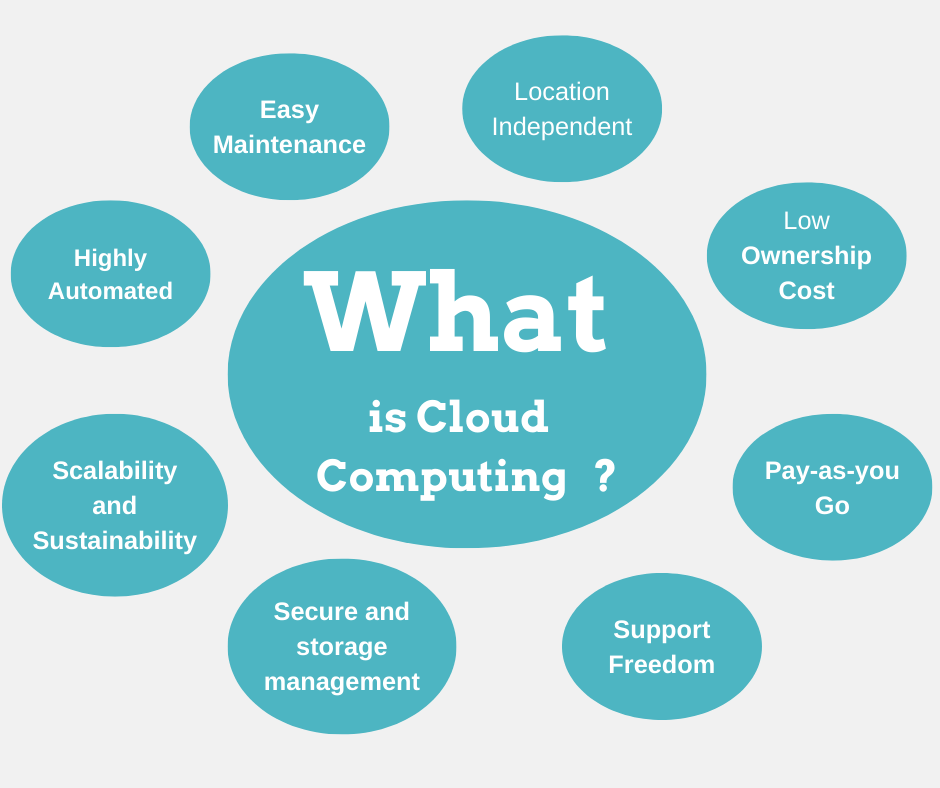
Cloud computing is a term that describes the delivery of computing services and data over the internet. It is a model in which software applications and data are delivered through remote servers rather than individual workstations. The benefits of cloud computing include improved efficiency, lower costs, and better security.
As businesses increasingly rely on cloud-based applications and services, they need to understand the basics of cloud computing to make informed decisions about how to use it. In this article, we will provide an overview of cloud computing, discuss the different types of clouds, and explain the benefits and drawbacks of each. We hope this guide will help you better understand how cloud computing is changing the world and how you can take advantage of its advantages for your business.
Cloud computing is one of the most recent and powerful technology forms that has revolutionized how companies do business. Cloud computing allows users to access their data and applications anytime. You no longer need to install software on your computer to work on your projects or access your data. Many people use cloud computing to store large files like music or photos. Cloud computing is also used for online banking, email, and scheduling tasks like cleaning or fixing a room.
The benefits of cloud computing are many. First, it is extremely cost-effective. You can access your data and applications from anywhere without having to install software on your computer. This saves you time and money. Second, cloud computing is always available. You never have to worry about your data becoming unavailable due to a power or internet outage. Third, cloud computing provides users with instant access to their data. You don't have to wait for your computer to start up before you can work on your project or access your data. Fourth, cloud computing eliminates the need for backups. With cloud computing, all your data is stored in one location, so you.
Cloud computing is a way to use the internet to save money and time. You can use it to store your files, get online access, and work on them from any computer. You do not have to worry about buying or setting up new hardware or software. You can also use cloud computing to share information with other people.
Cloud computing has been around for over a decade, but its impact on business is only now being realized. Here are the top five benefits of cloud computing for businesses:
Cloud computing is a rapidly growing technology that allows users to access files, applications, and services over the internet. However, cloud computing presents several security concerns that businesses must address. This article will discuss some of the most common security concerns with cloud computing and provide solutions.
Cloud computing is quickly becoming the norm for businesses of all sizes. The benefits of cloud computing are clear: flexibility, cost savings, and rapid deployment. But what is cloud computing, and how does it work? In this complete guide to cloud computing, we will explain everything you need to know about this growing trend in business.
First, let us define what cloud computing is. Cloud computing is a model for delivering services over the internet. Companies can run their operations without investing in or managing their hardware or software. Rather than having a company own and manage the hardware and software needed to run its operations, companies rent access to these resources from a third-party provider (known as a cloud provider).
The benefits of using a cloud provider are clear: flexibility, cost savings, and rapid deployment. With a cloud provider, companies no longer need to worry about investing in expensive hardware or software infrastructure. Instead, they can rent space on the provider's servers. This means that companies can quickly deploy new applications or services without having to spend valuable resources upfront.
In addition to being flexible and cost-effective, cloud computing also has one.
Cloud computing is quickly becoming one of the most important technologies. Businesses of all sizes are starting to realize the benefits that cloud computing can provide, and they are rapidly adopting it to improve their efficiency and agility. This article will look at cloud computing, why businesses should adopt it, and some of its key benefits. I hope you have found this guide helpful, and if not, be sure to check back soon, as we will update it regularly with new information and tips on how to best use cloud computing in your business.

The business world is changing, and in order to stay relevant, you need to keep pace. Nowadays, there are two simple ways to grow a business: 1) Grow new customers at a faster rate than you lose them, or 2) Increase the average worth of each customer by decreasing costs and increasing revenues. Process Automation can help you accomplish both of these goals.
Process automation is an efficient and effective way for companies to work smarter, not harder. It allows employees to focus on more strategic tasks instead of menial ones. And when combined with good project management, it can create a highly efficient team that thrives under pressure as well as chaos. In short: process automation is the future of business productivity, and it's one that we need to embrace once and for all.
A business process management system (BPMS) enables you to automate business processes. It incorporates software tools, people, and processes to create an automated workflow for the complete fulfillment of a defined business process. The key benefit to business process management is streamlining your system by removing human inputs and increasing speed of delivery, and quality, and reducing costs.
Hopefully, you have a better understanding of what process automation is, as well as its many benefits. It's clear that process automation streamlines processes and cuts costs, but that doesn't mean it's easy or cheap to implement. You will have to invest in both software and hardware, along with training for the people who will be using it. There are also all kinds of obstacles to making your business process automated—you may need working hours that extend into the evening or weekend, you may need more space for equipment, and you may need lots of energy to power your various machines.
In today's digital age, there is no doubt that process automation has become a popular concept in many aspects of business and software development. In the future, it's likely that we will see more of it in many different sectors, ranging from government and education to healthcare and more. And with more innovation in this area to build upon, we can expect ever-more impressive results. If you need more information about BPA, please reach out to us at info@localhost.
Sources

Blockchain: What IS it and how can YOU use it? Blockchain is simply a digital ledger of transactions, duplicated and distributed across the entire network of computer systems on the blockchain.
Blockchain is a system of recording information in a way that makes it difficult or impossible to change, hack, or cheat the system. Blockchain is most commonly associated with Bitcoin, the oldest and most popular cryptocurrency, but it also has many other potentials uses besides financial transactions.
For example, blocks store information about transactions like the date, time, and dollar amount of your most recent purchase from Amazon. (NOTE: This Amazon example is for illustrative purchases; Amazon sales are not recorded on a blockchain.)
Each block stores a unique code called a “hash” that allows us to tell it apart from every other block. Let’s say you made your splurge purchase on Amazon, but while it’s in transit, you decide you just can’t resist and need a second one. Even though the details of your new transaction would look nearly identical to your earlier purchase, we can still tell the blocks are apart because of their unique codes.
When your computer finishes processing the block, you move on to the next one. A blockchain is like a chain of blocks that contain information. The “chain” part comes from each block being connected to the block before and after it — so as more blocks are added to the chain, it becomes longer and more difficult to tamper with. In fact, tampering with any individual block would.
Blockchain is still a new and emerging technology, but what it has the potential to do—and possibly disrupt in numerous industries—is worth keeping an eye on. Whether you're running a business or thinking of getting into the world of online advertising, blockchain could be something that you want to familiarize yourself with.
ePathUSA is investing to create a capability in blockchain through their network of partners who are pioneered in it.

Data mining has a long history. Originally known as knowledge discovery in databases, the term “data mining was coined until the 1990s. Data mining is the process of digging through large sets of data to identify patterns to predict future trends. Data mining is used at the intersection of machine learning, statistics, and database systems.
Database information is doubling every two years developing chaotic and repetitive noise in data. More information does not necessarily mean more knowledge. Unstructured data makes up 90 percent of the digital universe. This is why data mining is important, it allows you to understand what is relevant and how you can use that information to assess likely outcomes.
Data mining consists of four main steps. These steps include setting objectives, collecting and analyzing data, applying data mining algorithms, and evaluating results.
Data is stored in data warehouses, either in-house servers or the cloud. Information technology professionals, business analysts, and management teams then access the data and decide how they want to organize it using application software. The data is then presented in easy-to-understand and share formats, such as a graph or table.
The most common algorithms and techniques used to turn data into useful information include association rules, neural networks, decision trees, and K-nearest neighbor
In sales and marketing companies collect large amounts of data about their customers and prospects. Companies can optimize their marketing efforts by observing their consumer demographics and online user behaviors to increase profits. In educational institutions, data is collected to understand student population and environmental performance for optimal success.
Lately, data mining has gone under criticism due to users being unaware of data mining happening with their personal information. This data is being collected to influence consumer behavior and change their preferences. One way to protect yourself from data mining is to use a secure VPN, remove personal information from social networking sites, and always look at the privacy policy for any website and social media platform.

The Metropolitan Atlanta Rapid Transit Authority (MARTA) is the principal public transport operator in the Atlanta metropolitan area. MARTA is a multi-county authority that is governed by a board of directors, consisting of representatives appointed from the city of Atlanta (3 members), and the remainder of the counties of Fulton, Clayton and DeKalb.
MARTA needed to provide an amazing collaborative platform that is highly configurable and provide a more coordinated environment to track and manage project between team members. ePATHUSA designed and deployed SharePoint modules for various workflows within the MARTA with futuristic approach. It is also ensured that all the existing users were smoothly transitioned from legacy systems to current systems with excellent training workshop and documentations.
Several functional modules aligned to processes were designed and implemented as per the business needs. To ease the user’s work an option to load the necessary data into the system was implemented. Several workflows for specific business processes were designed in SharePoint which improved the organizational efficiency and productivity by automating the tasks and steps involved in the process. This also enabled the team members to concentrate on performing the actual work. Workflows, when applied correctly, can also help team members to adhere to consistent business processes. The relevant metrics that were collected in various business workflows empowered the business to take data driven decisions which helped in tremendous ways. These metrics were built as reports which can be accessed by users as assigned by the SharePoint administrator.
| Project Type | Industry | Location |
|---|---|---|
| SharePoint/ Project Management/ Infrastructure Services. | Government - Transit | Atlanta, GA |

The Internet of Things (IoT) refers to the transformation of physical objects around the world that are now connected to the internet. These devices are all collecting and sharing data that help businesses make business decisions as well as automate human lives.
The idea first stemmed throughout the 1980s and 1990s when technologists thought of the idea to add sensors and intelligence to basic objects. They started investing in devices like televisions, cars, and smartphones. Now, these devices have matured to the point where an internet connection is part of the base offering.
Businesses use the Internet of Things to learn more about their customers so they can react faster and serve them in advanced ways that add new value and increase revenue.
For example, manufacturers are adding sensors to parts of their products to record data and track how they are doing. This can help companies see when a certain part is likely to fail and switch it out before it causes any damage. This helps make their supply chain more efficient because they have data that keeps them one step ahead.
The Internet of Things makes our homes, offices, and vehicles smarter and measurable. Smart speakers allow users to play music, set timers, or get on-demand information just by speaking to it. Home security systems allow users to monitor their homes inside and out with little effort and smart thermostats help people heat or cool their homes before they arrive.
However, these connected devices can raise concerns about personal privacy since they contain sensitive data and can be open to hackers.
Tech analyst company IDC predicts that in total there will be 41.6 billion connected IoT devices by 2025. Consumer IoT spending was predicted to hit $108 billion, making it the second-largest industry segment: smart home, personal wellness, and connected vehicle infotainment will see much of the spending. Within the integration of artificial intelligence, the future of IoT is limitless.

The field of data science struggles with the presence and successes of women and people of color. According to Ms. Magazine, research suggests that only 15 percent of data scientists are women and fewer than 3 percent are women of color. Due to the education system failing to attract young girls and women to computer science, math, and other related fields, the number of girls and women leaning toward careers in data science is disproportionate. The leaky pipeline metaphor describes the gender gap in STEM-related careers.
A few solutions to this faulty pipeline include STEM education for women and people of color early in life, providing mentorship programs for women in data science, and developing gender-balanced policies.
One of the issues the lack of diversity in data science brings is racial and gender bias in algorithms. Women and people of color become overlooked depending on who is developing these algorithms. Machine learning is the act of training the computer to make judgments or predictions about the information it processes based on patterns it sees. In an article written by Rebecca Heilweil for Vox Recode, Amazon tried to use artificial intelligence to develop a resume screening tool. Its objective was to make screening resumes easier. The issue with that was that the data collected mainly came from men. In the end, this taught the computer to discriminate against women. Amazon decided not to use this tool for several reasons.
We can start accounting for everyone by hiring people of color and women to take on leadership roles. In addition, companies can start using rich and diverse data when training computers to process data.
https://msmagazine.com/2021/07/26/data-science-diversity-gender-women-stem/
https://generalassemb.ly/blog/data-science-gender-race-disparity/

We've all heard of the "cloud". What exactly is cloud computing and security? The cloud is an alternative to storing data on computer hard drives. It allows many users to store and access data over the internet, without direct management by the user. There are three types of cloud environments and cloud service models. This blog post will go over the different types and what you can do to protect your servers from future threats.
Source: BeyondTrust.com
Source: ePATHUSA.net

Financial technology, usually shortened to FinTech, is one of the oldest pairings of domain specific knowledge and computing. It's origins can technically be traced back to 1918 when the US Federal Reserve Bank first developed Fedwire Funds Service. The service made it possible for the transfer of funds between the 12 Reserve Banks, the Federal Reserve Board, and the U.S. Treasury by telegraph using Morse code. Needless to say, technology has developed quite a bit since then.
Computing in the mid-20th century brought huge changes to banking. In 1950, Diner's Club introduced the first credit card , and in 1967, Barclays Bank installed the first ATM machines. The two inventions were huge. The combination of easy-to-carry cards and widely available ATMs allowed for the quick, mobile transferring of funds. But things weren't just changing for consumers.
While credit cards were catching on, the stock market was beginning to undergo a digital transformation of its own. Quotron, the first dedicated financial technology company, began selling terminals that displayed stock quotes on electronic screens instead of printed ticker tape. Gaining traction in the early 1970s, the Quotron terminals greatly impacted the speed of which brokers could obtain a quote. Instead of waiting throughout a lengthy printing and manual communications process, brokers could receive a by-the-minute update right in front of their eyes.
The 1980s brought several major changes to fintech, revolutionizing the industry and forming the bases for the ways in which the modern financial sector operates. The first was instantiated by the company TradePlus, now known as E-Trade, in 1982. The company became the first online stock brokerage firm. It still serves customers to this day.
The second innovation was the introduction of online banking a year later in 1983. Although online banking is the norm today, at the time, there was limited access. Several companies tried their hand at online banking, they mostly scrapped the idea throughout the next decade. A bit ahead of its time, online banking is now the preferred method of transferring funds.
Modern trends in fintech revolve around modern technologies. The most prominent and impactful of these are the use of data science and artificial intelligence technologies. AI forecasting methods provide to-the-second forecasts to help traders maximize gains. Additionally, predictive analytics give insights and judge risk of potential borrowers. These techniques are so valuable that in 2018, organizations invested $59.5 million globally into new technologies. The huge demand points to an increase in financial automation in the years to come. Whatever innovations come next, it's certain that they will be cutting edge and likely immensely profitable.
For more articles and updates, please visit our blog here.
To learn how our data science services can support your financial enterprise, please follow the link here.
| Project Type | Industry | Location |
|---|---|---|
| CISDM Support/Business Requirement Service/Quality Assurance | Small Business | Baltimore, MD |

After several perceived mishaps in polls' ability to accurately predict the outcome or the scale of victories in recent elections, notably the US general elections in 2016 and 2020, the public has grown weary of polling accuracy. this sentiment is reflected in the media as well. Headlines such as '"WRONG. WRONG. WRONG' and '"Polling Blows It Again' don't inspire much confidence in readers. The industry is estimated to be worth over $20 billion annually, so it is safe to say polling isn't dead. Maybe, pollsters just need a little extra help?
Much of what we call artificial intelligence (AI) is really machine learning algorithms and predictive analytics. These are computational statistical methods used to predict the likelihood of particular event occurrences, quantities, and outcomes. Many researchers exploring these techniques are arguing that they may boost the accuracy of polls. And it isn't just theory: early methods of implementing AI polling have already seen some success.
Take for instance Italian company expert.ai's system predicted that Democratic candidate Joe Biden would win by a 50.2% margin of the popular vote to Republican candidate Donald Trump's 47.3%. That's a narrow 2.9%. When the dust had settled, Joe Biden won with 51.31% or a 4.45% margin of victory. While the AI system underestimated Biden, in predicting state victories, it performed better. Traditional pollsters had expected Biden to carry states like Florida by a 2 to 3-point lead; Trump carried the state by just shy of 3.5%.
How is AI getting a more precise feel of voters before election? Partly by analyzing voter's social media and other online activity data. The advantage to looking at digital conversations over in person questioning is partly due to the social desirability bias (SDB). SDB explains the phenomena that humans, when responding in person, are more likely to give a response they deem to be more socially or situationally desirable. The internet largely negates this effect. Online, there is a sense of anonymity, even if there isn't. What people share, comment on, like, and follow are more indicative of their actual viewpoints and preferences. By utilizing aggregated data retrieved from online activity, AI researchers argue that voter sentiment can more accurately be obtained.
Utilizing AI prediction methods does carry some ethical issues and raises questions regarding the future state of democracy. If people obtain perceived evidence of the outcome of an election, will this influence their turnout or vote? Given what we know about how humans react to traditional polling information, it's very possible. As AI becomes further integrated into our social fabric, these issues will soon get a chance to be answered as we move into the era of AI polling.

It's the de-facto feature of the 21 century. It's driving innovation from business to healthcare. Some may even be so bold as to argue it's driving the fourth industrial revolution and the current worldwide political and social strife. Yes, we're talking about artificial intelligence, usually referred to as A.I. But what do we mean when we say '"artificial intelligence,' and what makes it uniquely special? You'll likely get different definitions depending who you ask and what field you are discussing. In this week's blog post, we're going to do our best to give you a clean, clear explanation to the concept of A.I.
The term artificial intelligence might immediately bring to mind a robotic exoskeleton chasing after humans. In fact, Hollywood has done an excellent job of this. Fortunately - or unfortunately depending on your disposition - this is not what artificial intelligence typically refers to in IT or business. You see, there are two types of artificial intelligence: general and narrow.
The idea of fully autonomous programs or robots that can think, make, learn, and create across a wide variety of fields and subjects like a human is referred to as general A.I. While there are researchers working on general A.I., creating an autonomous homo sapien-esque program appears to be far away. Instead, software focuses on utilizing narrow A.I., which encompasses any computer-automated process designed to handle specific tasks. Google translate is one such example most of us are familiar with. In the case of the US' most popular translation device, the automated task is to process text from one language to another. Not so scary, right?
A.I. isn't just for scientists hanging out in university departments. The push for data scientists, predictive analytics, and general automation in industry is helping to drive the recent surge in A.I. research and development. Let's take a look at some of the ways that A.I. is transforming business.
The likelihood that anyone reading this blog hasn't interacted with an automated voice message system in the year 2021 are slim. Although not terribly enjoyable, you are having an encounter with a form of A.I. - speech recognition whenever you interact with one of these digital secretaries. Similarly, if you have ever had a conversation with an automated chat bot when visiting a website, you are interacting with a text-to-text A.I. application.
We've previously mentioned the limited nature of narrow A.I., but don't doubt the usefulness of such constricted programs. In accounting, thousands of hours are saved each year of repetitive and menial tasks, increasing the productivity of bookkeepers everywhere. Algorithms can now automatically calculate, store, and visualize entered data and records. This opens time for opportunities that require the human-mind of an expert accountant.
One of the hottest growing fields around the world, A.I. is present in virtually every aspect of the medical sector, both inside and outside of the waiting room. Common tasks include aiding in diagnosis and treatment suggestions, even aiding in surgery. Most impressive of all, computers are now able to aid in medical research and discoveries that would otherwise be out of reach for contemporary science.
Being one of the earlier adopters of A.I., the financial sector is no stranger to the benefits of automated assistance. Almost 35 years ago, banks started using neural networks to help prevent and detect fraud. Now, artificial intelligence systems can maintain business operations overnight, forecast future growth and decay, and even make investments!

2020 was quite the year. No matter your job or your location, you undoubtedly had to deviate from your expected schedule or plans in some manner. Many of us worked from home, most of us had to re-evaluate our forecasts, and some of us pivoted business priorities entirely. Such great and widespread change will have lasting impacts well beyond the first and second quarter of next year. In this week's blog post, we'll be looking at both new and continuing IT trends as the IT industry makes its way into the new year.
We'll start off with the elephant in the room: cybersecurity. 2020 exposed various holes and weaknesses in institutions and structures the world over, and only a few were exposed more than various cybersecurity implementations. From one of the largest software vendors in Europe to one of Japan's oldest and most beloved video game developers and publishers, ransomware attacks stuck fast and often. Phishing scams were up 667% from the outset of the COVID-19 outbreak. And one only has to look at the ongoing United States federal government data breach and the digital attack on Universal Health Services to see that even major world powers are not immune.
On the other hand, we all seem to be aware of our weaknesses. The market for cybersecurity-related services is expected to reach $230 billion next year, a $50 billion annual increase. This massive uptick in spending suggests that industry is responding to the feedback of recent events.
Healthcare is THE topic right now. It's a force so strong that it is driving science, computing, culture, politics, economies, and elections. The IT industry is no exception. A quick look at the US government's proposed spending for FY 2021 contracts is a telling sign. The Department of Health and Human Services is proposing $94.5 billion towards healthcare-related services, with much of the spending being on hospital IT and medical manufacturing. Clearly, both the need and the opportunity are there.
Next year, the cloud, as it did this year and the year before it, will continue its inevitable march through the tech industry. Market research center Gartner predicts that the cloud computing market will grow an additional $45 Billion next year. The market, they say, has been validated by the pandemic. Industries will continue to move a greater share of their product delivery to the cloud as workstations (and general work itself) become more collaborative, in no small part thanks to the expedited move to remote working. Look forward to a much more cloud-integrated year.
Another topic that likely made many end-of-the-year lists over the past decade is data science and AI. If you read any IT or tech news sources, you have likely noticed that not a day goes by without a new data science or AI advancement being announced. Simply look at the labor shortage. In 2020, there was an estimated shortage of 110,000 data or business analysts. This number will only increase next year. If you are an employer, you will likely need at least one data specialist, and If you're looking to get into the hottest field of the 21st century, you can't go wrong by studying statistics or data science!
The final growing trend on our list is educational technology. Heated debates over whether online learning produces equivalent results to in-person learning will likely never end. However, there is no use in denying that distance education will continue to grow. Knowledge Sourcing Intelligence LLP has estimated that the online learning market will grow to nearly $320 billion. Keep in mind the forecast was made before the pandemic hit.
Online education has been highlighted by telecommunications apps like Zoom, but there's much more to the future of digital learning. Cloud computing will better enable and inevitably drive massive open online courses (AKA MOOCs). The increased adoption of augmented reality is improving hands-on STEM education. And, most importantly, there will be a continued focus on personalized learning. 2021 will likely be a big year in education's transformation by the fourth technological revolution.
| Project Type | Industry | Location |
|---|---|---|
| CISDM Support/Business Requirement Service/Quality Assurance | Small Business | Baltimore, MD |
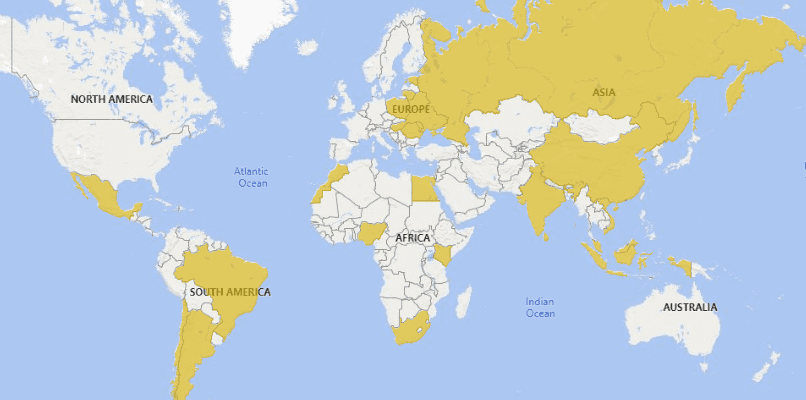
Initially developed and associated with manufacturing firms, business process outsourcing (BPO) is defined as a specific subset of outsourcing. An economical, financial, social, and political hot topic, BPO is more common than ever. Traditionally associated with Asia, companies are contracting in a much wider geographic landscape as we head into the new decade. Let's take a closer look at some of the top countries for outsourcing business processes.
When firms decide to outsource, the first region that comes to mind is likely Asia. Countries such as Japan and China originally got their economic jumpstart via manufacturing contracts with developed, western countries. Although Japan is less likely to be associated with outsourcing these days, countries such as India, China, Vietnam, Malaysia, and Indonesia are still among the top countries to go, or in the case of India, THE top spot.
With around 2.6 million STEM graduates produced each year, India has an army of skilled tech workers ready for modern company needs. Their technical abilities are not the only aspect that makes them the go-to outsourcing destination, they are also the country with the second largest number of English speakers. This has made India a popular BPO choice for firms in need of large call centers.
Next we head west to Eastern Europe. Unlike India or China, Eastern Europe doesn't usually pop into one's mind when the term '"outsourcing' is thrown around. However, large (and not so large) Eastern European countries such Ukraine, Poland, Belarus, and Romania are making their way to outsourcing top 10 lists. What's making these former Eastern Bloc countries so popular?
Traditionally, laws that are either too ambiguous or too restrictive have been a concern for companies looking to outsource their business processes west of Germany, but cultural similarities, rapidly growing technical expertise, and advantageous cost-to-quality ratios are driving BPO growth in the ECE countries. The convenient time zones - especially if you're in Western Europe - also add to the region's appeal.
Going further west, we land on the continent of Africa. Several countries situated along the coast are up-and-coming locations for BPO operations. Currently, business and economic analysts are looking at five in particular: Kenya, Morocco, South Africa, Egypt, and Nigeria.
Tending to specialize in software development and financial and human resource management services, the continent provides a wealth of skilled labor. According to Empower Africa, the median age across the continent is 18. Compare that to the US or Europe where the median ages are much lower. These five rapidly developing tech centers are producing a huge, technically-skilled workforce that can maybe be able to reduce the STEM shortage in other countries. When done legally and ethically, this helps local economies too because many African countries do not always have the economic infrastructure to provide meaningful employment to their educated populace.
Finally, we arrive back in the Americas. Central and South America, typically known for the outsourcing of manufacturing, are now entering the tech industry.
For English-speaking countries, Argentina is a prime pick for managed services. The country consistently ranks high on English (according to this Spanish-language report), the highest in both Central and South America. Other countries, such as Chile, Belize, and Columbia are popular destinations as well for their low-turnover rate and relatively cheap costs. Mexico is no stranger to outsourcing. Known for outsourcing manufacturing and food science operations, the country is also getting into the IT sector. However, this very possibly could change heading into the future.
The BPO industry was worth $221.5 billion at the end of 2019. Analysts expect the market to grow at a compounded growth rate of 8%. So it's safe to say that BPO is not going away. If you are looking to subcontract our outsource your IT business process, but aren't sure if you want to head overseas, contact us to discuss how we can help you augment your staff and find the right people for the job.
| Project Type | Industry | Location |
|---|---|---|
| CISDM Support/Business Requirement Service/Quality Assurance | Small Business | Baltimore, MD |

Apps. From websites to tablets, they're everywhere. In fact, there were 2.9 million apps in the google play store as of July 2020 (Statista) and a whopping 4.4. Million apps in the Apple App Store. With so many apps available, their functions vary widely. From practical applications that help track calories for weight loss to less practical niche topics, such as this app that literally does nothing. But not all apps are designed with personal use in mind. In fact, the biggest impacts apps are having on the world may just be in the world of small and local businesses in the form of local apps.
Over the past decade, we have all become accustomed to web applications and customer portals from large businesses. But what we have been seeing over the past couple of years is that local businesses have started to adopt them as well. These smaller entities are utilizing applications to improve all areas of their operations, including scheduling, payroll, and customer experience. Let's take a look at some of the more practical and effective ways these businesses are employing apps to save time and money.
If you own a business, accounting is almost assuredly involved. The process of financial recording was one of the first applications of computerization in the workplace, and it has remained one of the most common computer-assisted tasks to date - it may actually be increasing. A Sage survey found that 90% of respondents felt there is a cultural shift towards technological adaptation. These sentiments weren't only from ust large businesses. Statista found that nearly 2 out 3 small and mid-sized businesses are incorporating accounting software to streamline their accounting processes.
The most glaring advantage is efficiency. Applications are able to quickly calculate and complete tasks. These completed tasks also minimize simple errors in accounting procedures that humans are prone to make. Finally, apps enable accounting on the go. Apps release clear, transparent accounting information via reporting features that are accessible anywhere and at any time. Perfect for owners that may not always be in one place at any given time.
One of the greatest constraints facing businesses is - wait for it - time. When you work as many hours in a day as many local business owners do (read: all of them), finding ways to manage your workload is imperative to keeping operations running smoothly. Luckily, there's an app for that!
For many service-based businesses, such as dental or repair services, the correct scheduling of client appointments is a critical aspect of keeping the business healthy. Custom, local apps can track and schedule appointments, but they often act as so much more than a mobile calendar. These applications allow for the tagging of tasks, which allow for filtering and prioritization. Additionally, contact information, notifications, and other valuable notes can be easily accessed on the fly.
As any successful business owner can tell you, customer experience is vital to long-term success. From providing accurate information quickly to decreasing service time, the customer experience often determines the average customer lifespan. Small business owners have taken to a variety of commercial and custom applications to increase their customer lifespan and thus increase their average customer value. To be more specific, The Chamber of Commerce reports that 42% of all small businesses use mobile apps with the percentage increasing to 55% when looking at small businesses owned by millennials.
Of particular note, small businesses are making use of customer relationship management (CRM) applications to enhance customer support. With the help of these database-like applications, customer information, including order and payment history, can be brought up instantly. CRM has proven to be so convenient that 91% of all businesses with over 11 employees are using them. That time saved ends up transferring to money saved, with a Nucleus Research study finding that sales teams that utilized CRMs made back $8.71 for every $1 spent their CRM services.
Let's not forget about the employee! While smaller businesses may not have legions of employees to manage, for small employers, managing payroll, hours, and benefits can prove to be a time consuming endeavor. And even before that, finding and then maintaining candidates that are a good match for a company is a challenge all in itself.
Employee self-service portals (ESS) are the most common local HR apps in the workplace today. ESS are web portals that can be either built into a website or accessed via mobile devices. At their core, ESS portals allow for a greater level of autonomy on the part of the employee. This helps simplify employee data management and retrieval for everyone involved. ESS portals accomplish this feat by allowing employees to request time off, elect benefits, check their work stats, and log their own hours and work progress. You may also be wondering if employees will be resistant to adapt. But research shows that employees tend to want ESS implementation in their place of work. This Paychex survey concluded that the majority of respondents wanted ESS apps in their workplace by nearly a 2 to 1 margin.
Does your local business needs its own local app? Perhaps an employee self-service app? Or are you looking to minimize payroll or accounting errors? Our web and app developers know that not all businesses are the same. Our team works with you to understand your business and its needs to provide easy to use and implement applications.

Community Transit, Snohomish County's (WA) public transportation provider, has awarded ePATHUSA the On-Call IT Consulting Services Roster contract. The aim of the contract was to find IT-service providers who could provide a wide range of IT services. The contract will allow ePATHUSA to submit proposals for software and app design and implementation, business intelligence and analytics, staff augmentation, and technical writing and documentation among other IT-related services. We are proud to help Community Transit assist residents and travelers of Snohomish County '"get from where they are to where they want to be!'
For more information on Community Transit, follow the link here.
To contact ePATHUSA about our services, please follow the link here.

ePATHUSA is happy to announce that we have been awarded the Self-Exclusion Database Hosting and Maintenance contract with the Iowa Racing and Gaming Commission (IRGC). The contract is for the hosting and maintenance of the IRGC's Self-Exclusion Database, which is used to record the status of individuals participating in the Iowa Voluntary Self-Exclusion Program. ePATHUSA will be responsible for the hosting, maintenance, and future enhancements of the Self-Exclusion Database. This will be accomplished through the management of the database, maintenance of cross-browser support, and the implementation of up-to-date web security. We're excited for the opportunity to work with the IRGC and look forward to providing our premiere IT services to our home state.

Wildfires, hurricanes, pandemics, flooding, drought...the world literally appears to be falling apart at the seams. Fortunately, it's not all doom and gloom. Distinguishing ourselves as toolmakers, humans have historically managed to find a way to innovate and invent their way out of a bad situation. Clothing was devised as a way to protect us from inhospitable environments. Various agricultural revolutions have saved unquantifiable amounts of people from starvation. Penicillin and vaccines were discovered and developed in order to help fight off infectious disease. The future looks to be no different. We'll be taking a look at several ideas, inventions, and trends that demonstrate how we are saving the world through tech.
Perhaps no form of pollution comes to mind quicker than air pollution. The thought of thick layers of smog rolling from industrial towers into the sky unabated is the classic image of environmental damage. But it isn't just in our heads. The combustion of fossil fuels releases large quantities of carbon dioxide into the atmosphere. And we mean large. A 2014 EPA study found that 92% of all greenhouse gas emissions came from carbon dioxide (81%) and methane (11%). This makes carbon dioxide the primary driver of climate change. Methods of cutting down our '"carbon footprint' (i.e. our greenhouse gas emissions) are being invested in now more than ever, and they are producing creative results.
One way to go about reducing air pollutants is to eat them. No, we aren't suggesting breathing in unfiltered smog, but engineers have been working on devices that can. Known as direct air capture devices, these machines work to capture excess carbon once it has been produced. Among such inventions are smog-eating towers and trees. While these inventions have yet to be released at scale, there are some that are. In Switzerland, a plant that sucks down CO2 directly from the air, a world first, was released in 2017. Interestingly, carbon capture devices can also capture carbon from the air and pump it deep underground for storage. The concept of these carbon capture and storage (CCS) devices is effectively the reverse of extracting petroleum.
The second - and more immediately useful - method is to prevent such high levels of CO2 emissions in the first place. While policies such as carbon capping and rewarding sustainable minded commuters can be helpful, it's our continued dependence on fossil fuels that is driving our carbon footprint. Fortunately for the planet, and us, we have more than a couple sustainable alternatives.
One of the greatest threats to the environment, not to mention humans, is our reliance on unsustainable sources of energy. Outside of causing air, water, and land pollution, reliance on unsustainable resources is an issue because, as the name implies, they can be exhausted. The majority of these non-renewable energy sources come from fossil fuels, which include petroleum and coal. In fact, they make up about 84% of the world's energy consumption. Researchers are hoping that advanced technologies can help us switch over to more green (i.e. sustainable) resources.
The chief alternative power sources being investigated are solar, wind, hydro, and geothermal energy. While technologies such as solar panels, wind turbines, and hydro and geothermal plants aren't new, the last decade has seen advancements and increased interest in harnessing and utilizing these technologies. According to the American Wind Energy Association, U.S. wind energy has more than tripled over the last decade, and it now ranks as the largest source of renewable energy in the country. The association also reports that just last year, 9,132 wind turbines were installed, making it the third highest year for turbine installations in the states. Why is this investment important? In 2019, the US generated enough electricity from wind to power 27.5 million households. That's significant.
Emerging technologies are also making it more efficient to harness clean energy. Take geothermal energy for example. Derived from the Earth's natural energy, geothermal plants are now able to operate in areas and off of resources they were previously unable to generate power from. Likewise, solar panels are now able to be custom built almost anywhere, and large floating solar farms are being developed to generate huge amounts of electricity.
Predictive AI is being used to forecast changes in ecosystems, climate, and even the Earth itself. Analysts are using computer modeling and statistics to better respond to and understand changes to our planet. Take deforestation for example. An estimated 18 million acres of forest have been lost every year as calculated by the United Nations' Food and Agriculture Organization. To put that in perspective, since 2001, an area over twice the size of South Korea has been lost due to deforestation. What can be done to reverse this destructive trend? Satellite imagery is being used to identify areas and causes of destruction to better inform decision makers on environmental policies. But computer and software engineering is doing more than just simple monitoring and data analysis work.
AI software is already being developed to help provide firefighters with real-time information on likely flow paths and flashovers during wildfires. This software will prevent the spread of fires and keep firefighters safe by altering them to likely danger areas. AI and data science aren't just restricted to natural disasters either. Combined with robotics and other automated tools, data science is being used to optimize livestock nutrition and farming methodologies in order to decrease waste and increase yield. Who knew AI and livestock management would be such a great match?
We've all been told since we can remember to recycle, and for good reason. Solid wastes, officially tracked as solid municipal waste (SMW), include plastics, discarded food, paper, metals, glass, and other discarded solids, and can cause a great deal of harm to humans, land and aquatic ecosystems, and global environmental health. Currently, humans produce about 2.01 billion metric tons of waste annually. Unfortunately, our SMW production is forecasted to increase faster than the human population up to 2050. So what is being done to prevent a literal pollutant landslide?
Just as software is used in business to streamline operations, so is it being used in waste management. According to EPA estimates, about 75% of all waste is recyclable, but only about 30% of that waste actually makes it to the recycling process. This is where waste management software, now being distributed as a service via cloud computing, comes into play. Plants are using software services to identify disposal errors and manage and sort materials. These software services don't just help during the processing phase, they also provide detailed analytics on disposal and recycling rates by households that provide insights on areas for improvements.
Of course, the most impressive waste management tech doesn't see waste mitigated, it sees the waste converted into power. Appropriately dubbed '"biogas,' facilities are converting biological waste into gas. Similarly, heat is being used in a process called thermal conversion to otherwise useless solid waste into usable energy, and in some cases, materials. If that isn't intense enough, plasma arc recycling uses non-combustible sources of heat to melt and vaporize waste into usable gas. Hot!
It's not only the stuff we make, but the material we make our stuff with. Material scientists are hard at work helping material science and industry go green. One up and coming material is graphene. Although more research is needed to fully understand its effect on human health, the single atom-thick material is the thinnest material known to man yet among the strongest in existence. It is currently being used and studied for increasing the longevity of electronics, batteries, solar panels, paint, and more. If goods last longer, less waste will be generated.
Although it's true that data centers leave a large carbon footprint due to the large amount of electricity needed to keep them running, the switch to cloud computing is helping to cut down on physical waste. Without the need for in-house IT infrastructure and equipment, less waste is being used and discarded. And as for all that extra power being generated? A large percentage of power generated by data centers is caused by the need to cool infrastructure. New, more effective and efficient data center coolers are being used to reduce heat. In fact, one device might reduce heat by up to 90%! Now that's...wait for it...cool!

ePATHUSA is pleased to announce that we have been awarded the MNSITE (Minnesota Seeking IT Expertise) Program master contract. The state of Minnesota designed the MNSITE program as a means to procure IT-related services by way of a fast and intuitive process. The entity awarded the master contract is able to provide all requested IT services to the state of Minnesota. Under this agreement, ePATHUSA will provide our premier IT services to the state of Minnesota. We are tremendously honored to be working with the state of Minnesota and proud to be providing our expert IT solutions to our neighboring state.

ePATHUSA is excited to announce our newest SaaS product, the ePATH eLS (electronic licensing system). The fully featured licensing and management system is an innovative yet intuitive platform for gaming and racing licensure for state governments. From entities to individuals, the ePATH eLS will be able to streamline and improve the licensing and license managing process. Features include an easy-to-navigate and update user interface, detailed search, and robust reporting. Additionally, the licensing system will be nonintrusive and easy to implement. The service will be available via cloud computing with a launch announcement coming at a later date. Until then, the ePATHUSA team can't wait to share more details as the project nears completion!
For the latest news and updates from ePATHUSA, head over to the blog or follow us on social media:
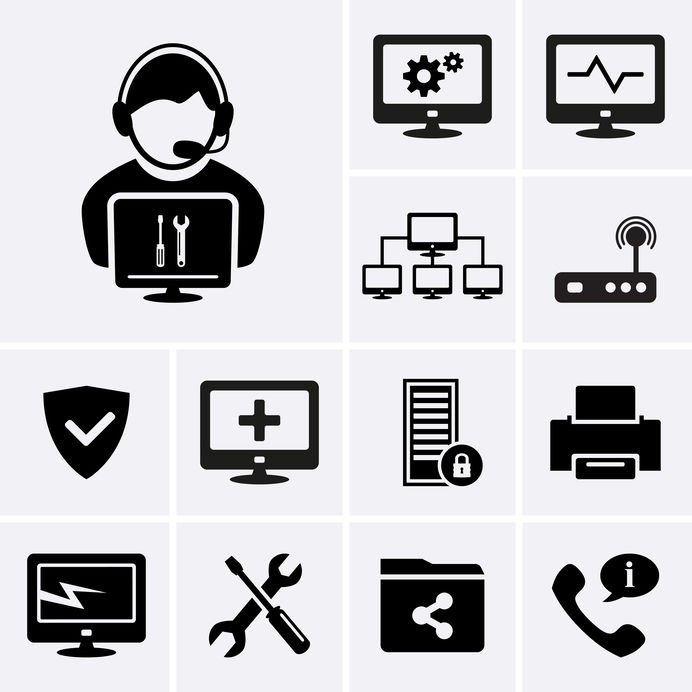
There's no way around it: IT support, also known as technical or tech support, is a necessary service for virtually every organization and department in the modern world. When the time comes, there are endless ways that organizations go about handling their IT support services. Luckily for business owners, all processes can usually be categorized as being part of either reactive or proactive models. We'll be taking a look at what makes these approaches to IT support different and the pros and cons of each.
As the name implies, reactive IT support is reactionary. When something breaks or otherwise goes wrong, the IT professionals are called, which is why the approach is sometimes referred to as the break-fix model. Unfortunately, there tends to be more weaknesses than strengths with this model, but that isn't to say that there isn't any reason to take this approach.
The advantage of utilizing a reactive support strategy is that you only pay for IT support when you know you absolutely need them. Is it broken? Yes? Fix it! No. Don't fix it! This can often end up saving companies money in the short term.
The list of downsides when utilizing a reactive support approach are lengthy. Although you may only pay for service when you absolutely need it, if you end up needing more assistance than you initially thought, this can result in quite a bit of downtime and service charges. Calling for support in a reactionary manner also results in technicians with limited availability or lacking familiarity with an organization. The resulting wait time often can lead to expensive downtime. Not good. In short, utilizing a reactive IT support model often winds up being costly in regards to both service and downtime over the long haul.
Proactive IT support, also known as the managed services model, is the opposite of the reactive model. With a proactive IT support strategy, an organization takes steps ahead of time in anticipation of issues. This mostly sees IT teams constantly monitoring system health to catch issues before they seriously disrupt or damage operations. This model isn't unlike exercising to ward off disease and illness or help us recover faster when we do get sick.
With so many strengths, there is a reason why businesses today favor a more proactive approach. Managed services providers are constantly monitoring client's system health; it's their job. When an issue presents itself, they can immediately start working to resolve the issue. This responsiveness reduces downtime and prevents larger, more costly issues down the line. These same managed service providers also provide fixed or flat-rate services, so costs are predictable throughout the year. Annually, the International Data Corporation (IDC) found that for every 100 users, $400,000 could be saved by using managed services!
A proactive IT support model doesn't have nearly as many downsides as its reactive counterpart. However, some periods may be more costly if service isn't required in the short term. This is a result of managed service providers tendency to favor fixed-rate pricing options. Added uncertainty can be added when an organization may not want to commit to a long-term contract with an IT support provider they are not familiar with.
Given that IT issues are bound to pop up, we recommend a proactive IT support model. Being prepared simply saves time and money. In fact, according to B2B service provider Clutch, 59% of IT services have now transitioned to the newer managed services model.
If you or your business have yet to implement an IT support plan or are planning to move to a more proactive plan, we can help! After 15 years of providing proactive IT managed services, we know more than a thing or two about proactive solutions. We understand that every business has different needs, and we would love to learn more about your IT support needs! Get in touch with us

In the realm of business and IT, we hear more and more about managed services, but what are they exactly? How do they help business? And perhaps more importantly, why should you care? We've got the answers to these questions and more below!
Managed services are described as the practice of outsourcing the responsibility for maintaining, and anticipating need for, a range of processes and functions in order to improve operations and cut expenses. In short, managed services involve hiring a company or organization to manage a particular aspect of your business. Typically, this involves IT or technical support and web and database hosting. We'll be taking a better look into some of the most common managed IT services to better illustrate their importance.
Various types of technical and IT support are available as managed services. From workstation and desktop installation and updates to cyber security and user management, managed service providers (MSPs) can cover IT infrastructure needs.
Many MSPs specialize in developing websites and mobile applications for clients who do not have software expertise themselves. MSPs can also enhance or update existing applications when the need arises.
Businesses often don't have the expertise or funds to implement and manage their own web, data, or cloud hosting operations. MSPs can host websites as well as cloud and traditional databases which allows clients to focus on what they do best.
Everyone is marketing in the digital space, but that doesn't mean everyone is an expert at marketing in the digital space. Marketing specialists are typically hired to manage social media pages, ensure site SEO is up to date, and create search advertisements to generate leads and improve ROI.
One of the more obvious benefits of managed services is quick access to support. As a client, a qualified and quality IT service provider will be able to start troubleshooting issues or begin new projects almost immediately. From workstation support to hosting, not having to wait for much-needed maintenance or upgrades can prove to be cost-effective down the line. Which brings us to our next point...
Here's something all business owners want to hear: implementing managed services lowers the cost of operation. Without having to purchase hosting hardware and recruit and hire additional IT professionals, managed IT services tend to save companies quickly. According to a poll conducted by Computing Technology Industry Association (CTIA), 96% of respondents said that switching to managed services has saved them between 1-50% of their previous IT costs. With that statistic in mind, outsourcing your IT services may be worth it on savings alone.
In the 21st century, digital security has risen to become one of the greatest threats to organizations and individuals. Insurance carrier Hiscox reports that as of the end of 2019, cyberattacks now cost companies of all sizes an average of $200,000. Yikes! Equipped with up-to-date training and certifications, quality MSPs can help prevent cyberattacks and other security breaches through the use of antivirus and intrusion detection software, the constant monitoring of IT infrastructure, and data recovery and backup systems.
With managed services, pricing options tend to be more flexible, often being customized or tailored for the individual client. Some of the most common payment methods include flat-rate, per-user, or per-month packages. These fixed, stable packages enable you to better forecast expenses and develop a budget for your business.
Downtime costs money - a lot of money. A study by Gartner found that the average cost of downtime was $5,600 per minute. While smaller businesses may not lose as much money per minute, downtime can detract from other initiatives and lower customer or client experiences. With services being managed around the clock by professionals, the likelihood of downtown is diminished. Additionally, IT service providers can ensure when downtime does occur, it won't last long.
Are you looking for someone to assist your company or organization with tech support, digital marketing, or data or web hosting? At ePATHUSA, our IT experts have been helping manage IT services for 15 years, and they can help you too! Contact us today!

On August 10, Iowa and other parts of the Midwest were hit by a derecho (from Spanish: '"straight'), a short-lived but potentially devastating series of thunderstorms, earning its name from its straight-line movement pattern. Unofficially referred to as inland hurricanes due to their ability to cause or exceed hurricane-force winds, the storm system has also been known to cause tornados, heavy rains, and flash floods. Last week's derecho brought winds of up to 140 mph, a state record, which flattened crops, destroyed or partially collapsed buildings and other structures, and left many without food, shelter, or power. Even a week and a half later, thousands of residents are still left without basic necessities.
In order to help assist with the Iowa disaster relief and raise awareness of the damage that the storm has caused, ePATHUSA will be donating to the emergency disaster services (EDS) of the Heartland Division of The Salvation Army. You can find the donation link here.
Additionally, ePATHUSA has put together a list of organizations currently accepting donations or assisting in Iowa disaster relief efforts. We always advise researching the mission and details of an organization before making a decision to donate. Note that these links will take you away from the ePATHUSA website.

Are you looking to find out why cloud-based IT services are right for your small business? You've come to the right place! Read on to discover why you and your small business need the cloud.
The cloud stands for cloud computing - the practice of using a network of remote servers hosted on the internet to store, manage, and process data. This is typically contrasted to traditional computing which stores data on local servers or personal computers. This may not seem like a huge deal, but failing to make the switch from traditional computing to cloud computing can be a costly and time-consuming mistake. To save you from losing valuable resources, we've compiled a list of the top 6 reasons cloud hosting and migration can benefit your small business.
Who doesn't like to save money?
Because cloud storage uses remote servers hosted online to store, manage, and process data, you save on the time and expenses of having to buy, install, and maintain traditional on-site hardware and infrastructure. Migrating to the cloud can also prove to be far more cost-effective over time. With traditional data storage methods, you pay for server space up front. This means the cost remains the same no matter how much space you end up using. Cloud computing payment options are much more flexible, allowing you to only pay for what you use.
When you store your business' data remotely, you can access it remotely. This means that even if you or your employees are out of the office you can still use your much-needed data. Whether it's a weekend hustle, an out-of-town (or out-of-country) trip, or a work-from-home situation, information is readily available. On top of that, your employees won't need special administrative privileges to access all of that data, unless you want them to!
It's no secret that things go wrong. Sometimes, they go very wrong.
Cloud storage can help safeguard your data when things don't go your way. As cloud storage is not dependent on a single piece of hardware, a single point of failure does not spell doom for your most important information after a loss event. This means frequent backups utilizing disks, flash drives, or other storage devices are no longer necessary. Additionally, data can be stored and retrieved across multiple locations within minutes. This results decreased downtime, allowing your business to resume operations.
We all want our business to grow, so it's important to have IT infrastructure that is scalable. On the flip side, you may sometimes find that you want to scale back. These are both very costly tasks when using on-site data centers. Due to adaptable payment models and off-site hosting, this is no challenge at all for the cloud. When it comes to scalability, cloud hosting is vital for all entrepreneurially minded small business owners.
Cloud computing is far less wasteful than traditional business and IT infrastructure. Traditional IT equipment creates a large amount of non-biodegradable waste at the end of the equipment's life cycle while at the same time inefficiently using power that may never be used by an organization. Cloud computing avoids both of these issues. And while providers certainly require a large quantity of electricity to maintain server operation, the quantity used is still far less than what traditional IT infrastructure would utilize to perform the same big data tasks.
According to Forbes, around two-thirds of all business infrastructure could be cloud-based by the end of 2020, and IBM found that 85% of businesses polled stated they were already using multiple cloud computing services. With worldwide spending on cloud computing reaching 107 Billion US dollars at the end of last year (Canalys), if you aren't utilizing the cloud, you are already at risk of falling behind the technological curve.
Need help migrating to the cloud? ePathUSA's cloud migration and hosting experts can help you get started. Contact us here to learn more about how we can help you and your business leverage the benefits of the cloud!

As COVID-19 continues to affect our personal and professional lives, we are continuing to prioritize the health and well-being of our employees and clients. We are currently taking necessary safety precautions and following CDC guidelines. However, we are still committed to providing the full range of quality services you expect from ePATHUSA and maintaining all essential business operations. We're here to help you.
Although the way companies are conducting business is changing, we have always believed that working relationships should be based on trust and understanding. That has not changed. We emphasize collaboration and ingenuity when working together with you in order to optimize your processes, elevate your technology, and help you navigate and compete in a newly changed world.
We are inviting you to connect with us so that we can help you adapt to a "new normal."
ePATHUSA can assist your business by implementing effective and efficient remote working solutions. Our developers can also design or update your website to better help your clients and customer's current needs. With many industries increasingly turning towards digital marketing, we can assist with digital marketing efforts as well. Drive traffic, generate leads, and manage customer relationships with email and search engine marketing and campaigns. Do you need to transform your data into actionable insights? We can help with that as well by incorporating our proven data science and AI expertise. In whichever way we can provide support during such uncertain and challenging times, ePATHUSA is here for you.
Phone: (515) 974-6778
Email: info@localhost

To our Employees, Clients, and Partners,
COVID-19 is redefining professional and personal life, and we believe it is perfectly fine to adopt ingenious ways to adjust with the changing times. Our thoughts are with all of those affected by Corona virus and we want to reassure you that we are fully equipped to help and maintain projects. In this time of crisis, we took timely action to ensure safety of our teams besides maintaining business continuity. For our valued customers, we are leveraging leading-edge technology and remote solutions to help and maintain essential operations and offering super speedy response to customer queries, and even changed our business model to address emerging customer needs, supported by our committed and professional staff members to provide services.
As we prepare for what appears to be our '"new normal' for the likely future, I want to take a moment to share these perspectives with you. We'll continue to assess our plans based on guidance from Local & National governments and health authorities. I would like to lay out how the decisions we are making in response to COVID-19 align with the Company's mission and the values all ePATHUSA team members share.
If you have questions or need assistance, please do not hesitate to reach out to your ePATH POC or email me directly at [email protected].
Please Stay safe & healthy and let us know how we can help.
Best regards,
Timiri G Anitha, CEO

VOX Network Solutions is a telecommunications company that offers converged voice and data services . It provides consulting, contact center, collaboration, network, security, managed services and a prescriptive process methodology to businesses.
To provide Avaya IVR system and its infrastructure support to Vox Network Solutions on an ongoing basis as per the business needs.
The provided Avaya IR system is an interactive voice response system (IVR) that allows for either full or partial automation of telephone transactions that would otherwise be performed by an operator or attendant. ePATHUSA works with system engineers to maintain performance levels of Cisco Voice and Avaya (Nortel) systems and monitor PBX, Voice Mail and ACD systems. We collaborate with associates and Information Technology staff to improve phone features and telecommunications reports, as well as troubleshoot and consult with vendors and service carriers. We coordinate with Vox’s data center staff to implement, design, and support all voice applications and systems.
| Project Type | Industry | Location |
|---|---|---|
| Infrastructure Services | Telecommunications | Nationwide |
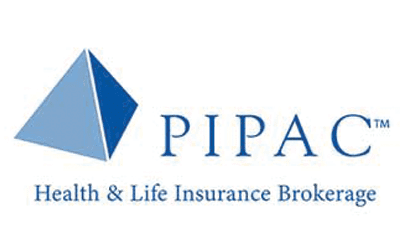
PIPAC is an established and experienced nationwide Health and Life insurance brokerage company founded by an agent for agents. PIPAC has 40 plus years of industry experience, carrier and agent relationships with a strong belief in doing the right thing. Agents describe the PIPAC team as friendly, responsive, detailed and totally service oriented.
Given their business is delivering insurance packages that are custom made for the agents, we knew a stunning website with rich information was a must. ePATHUSA’s primary objectives were to guide users through the available insurance plans from a wide array of providers and categories, fabricating as per the needs, application process, highlight the company's history and penchant for game-changing work, and encourage the agents to reach out to the company for their needs. The website should highlight the complex packages that are available in the most simple and elegant way.
To emphasize just how the work is done in PIPAC, we open our homepage design with a welcoming graphic image of handshake. Keeping user experience in mind, we designed the portfolio area—one of the site's primary selling points—to feature a simple grid layout with a fun twist: the title text "jumps" up on hover, guiding users into the portfolio detail pages. Being developed in CMS, the website can be updated with little manual intervention to keep updated with the latest information. It also makes easier to optimize your search engine results. That means your site is more likely to land on the first page of Google results, which is very essential for any business to rise and sustain in the competitive world. It also reduces the website maintenance costs, which will result in savings of the operational costs.
| Project Type | Industry | Location |
|---|---|---|
| Web and Application Development | Insurance | Cedar Falls, IA |

Calpine Corporation is the largest generator of electricity from natural gas and geothermal resources in the United States, with operations in competitive power markets. A Fortune 500 company based in Houston, Texas, the company is owned by an affiliate of Energy Capital Partners and a consortium of other investors.
The business was looking for cloud architecture and integration for their existing applications. The cloud integration was to be created to improve connectivity and visibility, and ultimately optimize business processes. It is a response to the need to share data among cloud-based applications and to unify information components.
A study of the existing applications was done to identify the best practices to implement DevOps. A detailed roadmap of the cloud implementation process was drafted by working with the business by thoroughly understanding the needs and existing processes. Azure cloud-based system was deployed and automated to ensure the availability, performance, scalability and security of production systems. CI/CD pipelines were implemented to optimize application development and delivery. The configuration management was automated to reduce the need for on-going support for such activities. Critical system security in ensured in every step of development and delivery of cloud and on-premise platform solutions.
| Project Type | Industry | Location |
|---|---|---|
| Business Intelligence/ Power BI / Data Warehouse / DevOps | Power Energy | Houston, TX |
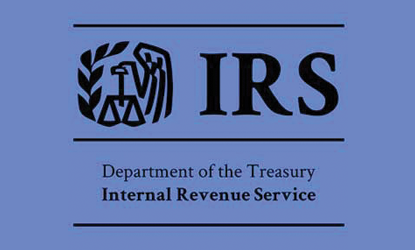
The Iowa department of Revenue (Legacy Systems) to support IRIS and its surrounding mainframe applications.
The main goal was to conduct a Mainframe Legacy Health Check which will identify costs, risks, opportunities, and assess the ability and longevity of the workforce to support IRIS.
Work relating to analyzing the legacy systems is the acquisition of “Operational Knowledge” of the production systems which entails analyzing all objects (jobs) and sub-objects (programs) in the current mainframe application inventory. Our work actions are the collection of all relevant system data and the access to system experts for system resources, impacts, and business requirements.
Managing the software portfolio to contain costs via metrics management of systems resources using collection phase, initial analysis phase, detailed analysis phase and preliminary solution design phase. The health check identified potential critical risk factors and opportunities that had not yet been identified, and if gone unnoticed, will impact the department’s ability to fulfill its primary mission of collecting taxes, depositing the revenue into the general fund, and providing tax refunds to our constituents.
| Project Type | Industry | Location |
|---|---|---|
| IDMS Legacy Assessment | State Government | Des Moines, IA |

The University of Iowa is the oldest institution of higher education in the state of Iowa, widely recognized for its public research activities, health care programs, law and fine arts. The University operates through its 11 colleges and spread over 1800 acres of campus space.
ePATHUSA worked with the University to assist the campus space planning process by designing and developing a Space modeling system. The University of Iowa’s Facilities Management Department, together with the Space Planning committee sought to create a process that allows all Organizational Units and the underlying Departments, to be proactively involved in the Campus Space planning process to address and to plan for the Campus Space needs as one entity. The Organizational Units have numerous short-term and long-term space needs to accommodate various aspects of their daily operations such as the need for more classrooms, service rooms, space for special events etc.
The Space Modeling System provided ability for responsible personnel from all of the Departments in the University to enter their current (or future) day-to-day operating variables into the modeling tool, such as student counts, course hours and times, housing needs etc. The modeling tool then uses complex formulae to determine the overall campus space needed for the specific Department in terms of classrooms, service spaces, dining spaces etc., as well as to the University such as parking, walking space etc.
The tool helps highlight dependencies of Campus Space needs across different Departments based on variables entered by a specific Department. The tool also highlights any shortcomings of the space currently allocated to the Department or help plan for space for the upcoming years. The modeling tool also integrated with several data sources and help provide insightful interactive reports using PowerBI.
| Project Type | Industry | Location |
|---|---|---|
| Data Science/Data Analytics | Education | Iowa City, IA |

The Department of Employment, Training & Rehabilitation (DETR) is the state of Nevada’s workforce development agency. Offering workforce related services, job placement and training, services for people with disabilities, investigation of claims of discrimination, unemployment insurance benefits, labor market data and more. Many of these services are provided through Nevada JobConnect career centers.
DETR wanted to redesign the legacy website to deliver a more adaptive and scalable site. Delivering a richer and more interactive web design as per the business’s request was one of the top priorities along with the security requirements of the website as per federal policies and regulations. Also, reorganized the forms from DETR site to Jobconnect site and vice versa resulting in website that encourages more users to interact.
ePATHUSA integrated content management system to edit and manage the website going forward. Content was developed by determining and understanding the current and future needs of the business. The website was designed keeping in mind about the ease to navigate to content areas. Adding high resolution images and custom graphics based on intended audience to make the website more appealing to users. Top news and hot resources links are provided on the main page Bulletin Board, which anybody can access. The whole website was provided with the capability to auto translate to Spanish if selected. Mobile responsive website was also delivered. The services provided were regrouped and redesigned in the Jobconnect website.
The final website delivered increased the internet traffic by double. In addition, provides a significant savings on the ongoing maintenance costs of the website.
| Project Type | Industry | Location |
|---|---|---|
| Web and Application Development | Government | Carson City, NV |

ePATHUSA is pleased to announce that we have been awarded the Colorado Department of Labor and Employment’s Empowerment Score Web Development contract. Under this contract, ePATHUSA will provide our premier web development services to the state of Colorado. We are immensely honored to be working with the state of Colorado, supporting the mission of the Department of Labor and excited for the opportunity to demonstrate our expertise in web solutions.

ePATHUSA has been awarded the MNIT/MDA AgBMP Automation Project. Part of this, ePATH will offer the requirements and solution design for the Loan Application. We look forward to working with the State of Minnesota and adding a new State into our portfolio.

The Centers for Medicare & Medicaid Services (CMS), is a federal agency within the United States Department of Health and Human Services (HHS) that administers the Medicare program and works in partnership with state governments to administer Medicaid, the Children's Health Insurance Program (CHIP), and health insurance portability standards.
The premium aggregation service is a financial and administrative system to allow qualified employers to receive a single monthly bill for all Qualified Health Plan (QHP) Issuers in which their employees are enrolled and to remit a single monthly amount to the FF-SHOP and then aggregate premium payments from qualified employers and distribute the payments to the appropriate QHP issuers.
Being one of the quality control partners for the project, ePATHUSA carried out various activities to ensure the same such as:
| Project Type | Industry | Location |
|---|---|---|
| CISDM Support/Business Requirement Service/Quality Assurance | Small Business | Baltimore, MD |

The Metropolitan Atlanta Rapid Transit Authority (MARTA) is the principal public transport operator in the Atlanta metropolitan area. MARTA is a multi-county authority that is governed by a board of directors, consisting of representatives appointed from the city of Atlanta (3 members), and the remainder of the counties of Fulton, Clayton and DeKalb.
MARTA needed to provide an amazing collaborative platform that is highly configurable and provide a more coordinated environment to track and manage project between team members. ePATHUSA designed and deployed SharePoint modules for various workflows within the MARTA with futuristic approach. It is also ensured that all the existing users were smoothly transitioned from legacy systems to current systems with excellent training workshop and documentations.
Several functional modules aligned to processes were designed and implemented as per the business needs. To ease the user’s work an option to load the necessary data into the system was implemented. Several workflows for specific business processes were designed in SharePoint which improved the organizational efficiency and productivity by automating the tasks and steps involved in the process. This also enabled the team members to concentrate on performing the actual work. Workflows, when applied correctly, can also help team members to adhere to consistent business processes. The relevant metrics that were collected in various business workflows empowered the business to take data driven decisions which helped in tremendous ways. These metrics were built as reports which can be accessed by users as assigned by the SharePoint administrator.
Several functional modules aligned to processes were designed and implemented as per the business needs. To ease the user’s work an option to load the necessary data into the system was implemented. Several workflows for specific business processes were designed in SharePoint which improved the organizational efficiency and productivity by automating the tasks and steps involved in the process. This also enabled the team members to concentrate on performing the actual work. Workflows, when applied correctly, can also help team members to adhere to consistent business processes. The relevant metrics that were collected in various business workflows empowered the business to take data driven decisions which helped in tremendous ways. These metrics were built as reports which can be accessed by users as assigned by the SharePoint administrator.
| Project Type | Industry | Location |
|---|---|---|
| Sharepoint/ Project Management/ Infrastructure services | Government - Transit | Atlanta, GA |

We were honored to host Team Innobots, a talented group of middle school girls competing in the FIRST® LEGO® League Submerged Season 2024-25. With multiple awards at regional and state levels, they are preparing to compete internationally this June. We proudly support their passion and innovation in STEM.

Our team recently volunteered at Meals from the Heartland in Iowa, helping pack nutritious meals for children and families in need. This experience reinforced our commitment to teamwork and community impact, reflecting the core values of ePathUSA.



We proudly celebrate The Aztechs, FTC Robotics Team #18397, for their outstanding performance at the FTC Iowa State Championship. As Winning Alliance Members and recipients of the 2nd Place Inspire Award, they’ve earned a double qualification for the FTC World Championship in Houston. Congratulations to this inspiring team of young innovators!



We were proud to host The Aztechs, FTC Robotics Team #18397, at ePathUSA and witness their passion for STEM and robotics. These talented students from central Iowa demonstrated their technical skills and teamwork during their visit. We’re excited to share that they have advanced to the FTC Iowa Championship. Best wishes to The Aztechs as they continue their inspiring journey!




In response to the devastating wildfires in Los Angeles, ePathUSA launched a community fundraising initiative in partnership with Direct Relief. This effort aims to provide critical medical supplies and emergency support to displaced families. We are proud to support recovery efforts and stand with those affected.

It is an honor to support and attend the Empower4Life event, aligning with our mission and vision to create lasting impact and inspire meaningful change. At #ePathUSA, leadership in action drives our commitment to building stronger communities and brighter futures.
#ePathUSA #Empower4Life #LeadershipInAction #CommunityImpact #InspiringChange



ePATHUSA strongly believes in supporting local communities, which is why this year we are helping to give back to the community that has given us so much. This holiday season, almost 200,000 Iowans will experience food scarcity this season. To combat this, we are helping to raise donations for the Food Bank of Iowa. The non-profit group in their mission to combat hunger in the area.
No amount is too little. For each dollar donated, the Food Bank of Iowa can provide up to four meals. We hope to reach $500 by the first of the new year. To donate to The Food Bank of Iowa, please follow the link to donate here.
Founded in 1982, The Food Bank of Iowa provides food to Iowans in need. Food is also provided to organizations like food pantries, soup kitchens, and shelters with the goal of ending hunger. The non-profit services an area that includes 55 central and southeastern Iowa counties, spanning a distance connecting the Iowa-Missouri and Iowa-Minnesota borders. For more information.
A small, diverse team of IT professionals, ePATHUSA is a software and cloud-computing service provider based out of West Des Moines. We believe in not only supporting our employees and clients but our communities as well. For more information on ePATHUSA.
| Project Type | Industry | Location |
|---|---|---|
| Data Science/Data Analytics | Education | Iowa City, IA |

VOX Network Solutions is a telecommunications company that offers converged voice and data services . It provides consulting, contact center, collaboration, network, security, managed services and a prescriptive process methodology to businesses.
To provide Avaya IVR system and its infrastructure support to Vox Network Solutions on an ongoing basis as per the business needs.
The provided Avaya IR system is an interactive voice response system (IVR) that allows for either full or partial automation of telephone transactions that would otherwise be performed by an operator or attendant. ePATHUSA works with system engineers to maintain performance levels of Cisco Voice and Avaya (Nortel) systems and monitor PBX, Voice Mail and ACD systems. We collaborate with associates and Information Technology staff to improve phone features and telecommunications reports, as well as troubleshoot and consult with vendors and service carriers. We coordinate with Vox’s data center staff to implement, design, and support all voice applications and systems.
| Project Type | Industry | Location |
|---|---|---|
| Infrastructure Services | Telecommunications | Nationwide |

PIPAC is an established and experienced nationwide Health and Life insurance brokerage company founded by an agent for agents. PIPAC has 40 plus years of industry experience, carrier and agent relationships with a strong belief in doing the right thing. Agents describe the PIPAC team as friendly, responsive, detailed and totally service oriented.
Given their business is delivering insurance packages that are custom made for the agents, we knew a stunning website with rich information was a must. ePATHUSA’s primary objectives were to guide users through the available insurance plans from a wide array of providers and categories, fabricating as per the needs, application process, highlight the company's history and penchant for game-changing work, and encourage the agents to reach out to the company for their needs. The website should highlight the complex packages that are available in the most simple and elegant way.
To emphasize just how the work is done in PIPAC, we open our homepage design with a welcoming graphic image of handshake. Keeping user experience in mind, we designed the portfolio area—one of the site's primary selling points—to feature a simple grid layout with a fun twist: the title text "jumps" up on hover, guiding users into the portfolio detail pages. Being developed in CMS, the website can be updated with little manual intervention to keep updated with the latest information. It also makes easier to optimize your search engine results. That means your site is more likely to land on the first page of Google results, which is very essential for any business to rise and sustain in the competitive world. It also reduces the website maintenance costs, which will result in savings of the operational costs.
| Project Type | Industry | Location |
|---|---|---|
| Web and Application Development | Insurance | Cedar Falls, IA |

Calpine Corporation is the largest generator of electricity from natural gas and geothermal resources in the United States, with operations in competitive power markets. A Fortune 500 company based in Houston, Texas, the company is owned by an affiliate of Energy Capital Partners and a consortium of other investors.
The business was looking for cloud architecture and integration for their existing applications. The cloud integration was to be created to improve connectivity and visibility, and ultimately optimize business processes. It is a response to the need to share data among cloud-based applications and to unify information components.
A study of the existing applications was done to identify the best practices to implement DevOps. A detailed roadmap of the cloud implementation process was drafted by working with the business by thoroughly understanding the needs and existing processes. Azure cloud-based system was deployed and automated to ensure the availability, performance, scalability and security of production systems. CI/CD pipelines were implemented to optimize application development and delivery. The configuration management was automated to reduce the need for on-going support for such activities. Critical system security in ensured in every step of development and delivery of cloud and on-premise platform solutions.
| Project Type | Industry | Location |
|---|---|---|
| Business Intelligence/ Power BI / Data Warehouse / DevOps | Power Energy | Houston, TX |

In today's busy business world, companies face the challenge of being more efficient, cutting costs, and improving customer service. Process automation is key to achieving these goals. Automation tools can help with simple tasks like data entry as well as more complex workflows. These tools are essential for making operations smoother across all industries. However, with so many options available, choosing the right tool for your business can be tricky.
This is where ePathUSA can assist. With years of experience guiding enterprises through the process automation journey, ePathUSA helps businesses identify, implement, and optimize the most suitable tools. Our service-oriented approach ensures that every automation solution is tailored to your specific needs.
In this blog, we will explore the top five process automation tools for enterprises, their key features, benefits, and how ePathUSA's expertise can make the implementation process seamless and effective.
Explore ePath’s Process Automation Services
Process automation involves using technology to perform tasks that would otherwise require human intervention. These tasks include data entry, approval workflows, email responses, document processing, and more. By automating repetitive processes, enterprises can improve speed, reduce errors, and enable their workforce to focus on higher-value activities.
Over the years, process automation has evolved from simple task automation to sophisticated tools that integrate AI, machine learning, and cloud technology. The advent of Robotic Process Automation (RPA) and AI-powered solutions has transformed automation from a niche practice to a mainstream necessity for businesses striving to remain competitive.
In fact, a study by McKinsey & Company found that over 60% of occupations could see at least 30% of their tasks automated by adopting existing technologies. Without automation, enterprises face several challenges, such as operational inefficiencies, human errors, compliance risks, and escalating labor costs.
For a more in-depth understanding of the evolution of process automation, explore this Gartner report on automation trends.
There are numerous process automation tools available, each suited to different types of businesses and needs. Below, we explore the top five tools that can transform your enterprise’s operations.
UiPath is a leading robotic process automation (RPA) tool that automates repetitive tasks with minimal human intervention. It uses artificial intelligence to perform complex, rule-based tasks and integrates seamlessly with enterprise applications.
Key Features:
Benefits:
Automation Anywhere is a cloud-based RPA tool known for its enterprise-level capabilities. It is designed to automate end-to-end business processes, from customer support and data entry to document management.
Key Features:
Benefits:
Blue Prism is an RPA platform that focuses on enterprise-grade automation. It is particularly suited for highly regulated industries, such as banking and healthcare, where security and compliance are top priorities.
Key Features:
Benefits:
For smaller enterprises or those looking to automate tasks between various web applications, Zapier is an excellent choice. This tool offers easy-to-use workflows that link thousands of apps, from Gmail to Salesforce, and can automate data transfer and notifications.
Key Features:
Benefits:
Kofax is a process automation tool that specializes in document management, robotic process automation, and artificial intelligence-driven automation. It excels in automating document-heavy processes, making it particularly valuable for industries like finance, healthcare, and government.
Key Features:
Benefits:
At ePathUSA, we understand that process automation is not one-size-fits-all. That’s why we take a service-oriented approach to help enterprises implement the right automation tools based on their unique needs.
Our process begins with a thorough needs analysis, identifying key workflows and areas where automation can have the greatest impact. From there, we assist with tool selection and ensure that the chosen solution integrates seamlessly into your existing systems.
Once the automation tool is in place, ePathUSA offers ongoing support, ensuring that your system continues to deliver optimal performance and ROI. We are committed to helping businesses leverage automation for long-term success.
Explore ePath’s Process Automation Solutions
The benefits of implementing process automation in enterprises are far-reaching. Here are some of the most notable advantages:
Process automation eliminates bottlenecks and speeds up business workflows. By automating routine tasks, employees are freed up to focus on more complex and valuable work.
Automation reduces the need for manual labor, which leads to cost savings. Businesses also save on training and error correction costs, as automation tools minimize human error.
By automating processes, businesses significantly reduce the chances of errors that can occur due to manual intervention. This leads to higher-quality work and greater customer satisfaction.
Automated processes can scale quickly to meet the demands of a growing business. Whether you're expanding operations or launching new services, automation ensures that your workflows remain efficient as you grow.
Nedbank, one of South Africa’s largest banks, offers a range of financial services, including retail and corporate banking. The bank faced operational challenges with manual, error-prone processes in data entry, reporting, and transaction handling, which were time-consuming and costly.
Nedbank struggled with:
To address these challenges, Nedbank implemented UiPath RPA to automate key processes such as:
The RPA implementation resulted in:
Nedbank’s adoption of UiPath RPA significantly improved operational efficiency, reduced costs, and ensured compliance with regulatory standards, demonstrating the potential of RPA in transforming large-scale banking operations.
As process automation continues to evolve, several emerging trends are shaping the future of enterprise operations. These include:
Stay Updated on Automation Trends
Choosing the right process automation tool is crucial for enterprises looking to improve efficiency, reduce costs, and enhance overall performance. With tools like UiPath, Automation Anywhere, Blue Prism, Zapier, and Kofax, businesses can automate key processes and drive growth.
At ePathUSA, we provide personalized guidance and implementation support, ensuring that your chosen tool aligns perfectly with your business needs. Ready to embark on your process automation journey?
Contact ePathUSA Today for a consultation.
Process automation involves using technology to handle repetitive tasks without human involvement. It can include tasks like data entry, report generation, and workflow approvals, helping businesses improve efficiency and reduce human errors.
Automation tools improve efficiency by handling repetitive tasks, reduce costs by minimizing manual labor, enhance accuracy by reducing human error, and allow businesses to scale without increasing headcount.
ePathUSA helps businesses choose the right automation tools, integrate them with existing systems, and provide ongoing support to optimize performance and ROI.
Industries such as banking, healthcare, manufacturing, and retail benefit significantly from process automation due to the high volume of repetitive tasks, data processing, and regulatory requirements.
The timeline depends on the scope of automation but typically ranges from 6 to 12 weeks, from needs assessment and tool selection to full deployment and testing.

In today’s competitive business landscape, data analytics has become a cornerstone for organizations striving to make informed decisions that drive growth. The ever-expanding amount of data generated daily offers significant potential, but only if businesses know how to analyze and leverage it effectively. By utilizing data-driven decision-making, companies can identify new opportunities, streamline operations, and gain a competitive edge.
At ePathUSA, we empower enterprises with actionable insights through expert data analytics solutions that enable them to harness data’s full potential and accelerate business success.
Learn More About ePath’s Data Analytics Services
Data analytics involves examining raw data to draw conclusions about that information, often using tools and algorithms to extract patterns, correlations, and insights. Over time, analytics has evolved from basic reporting to sophisticated predictive and prescriptive models that can forecast trends and suggest actionable steps.
According to Gartner, the global market for data and analytics is projected to grow from $215.7 billion in 2022 to $274.3 billion by 2025, driven by an increasing reliance on data for decision-making.
Data analytics has gone from a niche function to a vital asset across all sectors. ePathUSA leverages the latest tools and techniques to help businesses understand and utilize their data effectively.
Explore the Basics of Data Analytics
For a deeper dive into industry data trends, refer to Gartner’s 2020 Market Guide for Data Analytics.
Data analytics plays a crucial role in accelerating business growth by providing insights that improve decision-making, optimize processes, and enhance customer experience. Here's how leveraging data analytics translates to business growth:
Data-driven decision-making allows businesses to move away from gut feelings or assumptions and instead make choices grounded in facts and real-time insights. According to McKinsey, companies that adopt data-driven decision-making are 23 times more likely to acquire customers, 6 times more likely to retain customers, and 19 times more likely to be profitable.
For example, Uber uses real-time data to dynamically set prices based on factors like demand and traffic conditions, optimizing profitability and enhancing customer experience.
By analyzing customer behavior and preferences, businesses can tailor their marketing and product offerings to meet the needs of specific customer segments. Coca-Cola uses data analytics to segment customers by region, behavior, and preference to optimize their marketing campaigns, increasing the effectiveness of their outreach and sales.
Additionally, segmentation allows for more personalized interactions, improving customer loyalty and lifetime value.
Data analytics also helps businesses optimize internal processes and resources. For instance, General Electric uses predictive analytics to monitor equipment and predict maintenance needs, resulting in $200 million in cost savings. By identifying inefficiencies and bottlenecks, companies can streamline operations, reduce costs, and increase overall productivity.
For more details on data-driven decision-making, check Deloitte's Analytics ROI Report.
Data analytics is powered by various techniques and tools, each with its unique benefits for businesses seeking to unlock actionable insights.
Data mining involves analyzing large datasets to identify hidden patterns. It’s often used to explore customer behavior and market trends. Retailers like Target use data mining to predict purchasing patterns and personalize their promotions, increasing sales significantly.
Benefits:
Tools like Tableau and Power BI allow businesses to visualize complex data through interactive dashboards, making it easier for decision-makers to interpret results. Uber’s business intelligence team uses visualization tools to track trip patterns and manage driver performance, improving operational efficiency.
Benefits:
Machine learning (ML) algorithms analyze historical data to predict future trends. For example, Netflix uses ML models to recommend content based on user preferences, increasing customer engagement and retention.
Benefits:
Big data platforms like Hadoop and Apache Spark are crucial for processing large datasets. Companies like Walmart use these platforms to analyze transaction data in real time, optimizing inventory and sales operations.
Benefits:
Explore Tools and Techniques for Business Analytics
For external reviews on data analytics tools, visit Gartner’s Review on Analytics Tools.
At ePathUSA, we provide end-to-end data analytics solutions tailored to help businesses harness their data to drive growth. Our services include:
With a service-oriented approach, ePathUSA ensures that businesses can implement data analytics solutions that align with their objectives.
Request a Consultation with ePathUSA
Adopting data analytics offers a variety of benefits that can lead to measurable business growth. Here are the most significant advantages:
Businesses with access to data analytics can make faster, more informed decisions. This helps improve strategies across marketing, sales, customer service, and product development.
By identifying inefficiencies, businesses can cut unnecessary costs. For instance, UPS uses data analytics to optimize delivery routes, saving millions of dollars on fuel and labor costs annually.
Analytics tools provide deep insights into customer behavior, allowing businesses to personalize their offerings. For instance, Spotify uses listening habits data to create personalized playlists, improving user satisfaction and retention.
Data analytics optimizes business processes, leading to better resource allocation and enhanced productivity. Caterpillar, for instance, uses analytics to monitor machinery performance, reducing downtime and maintenance costs.
Walmart, the world’s largest retailer, serves millions of customers globally, operating more than 10,000 stores in over 20 countries. With such a massive retail footprint, Walmart faces significant challenges in inventory management, supply chain logistics, pricing strategies, and customer experience optimization. The company recognized that harnessing the power of data could help it achieve its growth goals while maintaining operational efficiency.
Walmart’s business model relies heavily on its ability to manage a vast supply chain and stock inventory efficiently. Historically, Walmart’s logistics system had challenges with inventory accuracy, stockouts, and overstocking, which led to customer dissatisfaction and excess operational costs.
To remain competitive and grow, Walmart needed to leverage data analytics to optimize inventory, improve customer experience, and enhance operational efficiency.
Walmart has long been a leader in using data to drive business decisions. By implementing a big data and analytics strategy, Walmart was able to tackle its supply chain challenges and create a more seamless shopping experience for its customers. Some of the key data analytics approaches Walmart adopted included:
Walmart uses data analytics to track inventory in real-time. By integrating data from RFID tags and sensors in stores and warehouses, Walmart can now monitor product movement throughout its supply chain. This real-time data feeds into an advanced inventory management system that helps ensure products are available when customers need them, reducing stockouts and minimizing excess inventory.
Walmart uses predictive analytics to forecast consumer demand at a granular level. By analyzing historical sales data, customer purchasing behaviors, weather patterns, and even social media trends, Walmart can predict what products will be in demand in specific regions and during particular times of the year.
Walmart uses machine learning models to dynamically adjust prices based on several factors, including competitor pricing, market demand, and inventory levels. This pricing strategy allows Walmart to stay competitive and maximize profitability, while ensuring products are always competitively priced.
Walmart collects data from various customer touchpoints, including loyalty programs, mobile apps, web browsing, and in-store purchases, to gain insights into customer preferences. This allows Walmart to offer personalized promotions, product recommendations, and in-store experiences.
The data-driven initiatives Walmart implemented provided substantial results, making a significant impact on its bottom line and operational efficiency:
Walmart’s use of data analytics has had a transformative effect on its operations, inventory management, pricing strategies, and customer experience. By leveraging predictive analytics, machine learning, and real-time data insights, Walmart has been able to stay competitive in an increasingly data-driven retail environment.
As data continues to grow in complexity, new trends are emerging that will further revolutionize how businesses use data to drive growth. These trends include:
AI-powered analytics tools will become more capable of interpreting complex data and making decisions autonomously, reducing the need for human intervention.
The ability to process and analyze data in real-time will become increasingly important, especially for industries like retail and healthcare, where quick decision-making is essential.
Machine learning and deep learning algorithms will improve the accuracy of predictive models, enabling businesses to make more accurate forecasts and optimize their strategies.
Stay Updated on Data Analytics Trends
Data analytics has become indispensable for businesses aiming to stay competitive in a fast-paced market. From improving decision-making to enhancing customer insights, data analytics plays a pivotal role in driving growth. ePathUSA offers the tools and expertise to help your business harness the power of data and turn it into actionable insights.
Get Started with ePath’s Data Analytics Solutions
Data analytics is the process of collecting, processing, and analyzing data to extract meaningful insights. It involves various techniques, including statistical analysis, machine learning, and predictive modeling, to turn raw data into actionable information. Data analytics can be applied to a wide range of areas, including improving customer experience, optimizing operations, and identifying business opportunities. By making data-driven decisions, companies can better understand their markets and improve performance.
Data analytics offers multiple benefits, such as improved decision-making, cost optimization, and enhanced customer insights. By leveraging data, businesses can gain a deeper understanding of consumer behavior, market trends, and operational inefficiencies. This allows them to make data-driven decisions that improve outcomes.
Various tools are used in data analytics, depending on the complexity of the data and the specific goals of the business. Commonly used tools include:
At ePathUSA, we specialize in helping businesses harness the power of data through tailored analytics solutions. Our services cover the entire analytics lifecycle, including data collection, processing, analysis, and visualization.
We assist businesses by:
While data analytics can benefit any industry, certain sectors gain significant advantages from data-driven strategies. These industries include:
Manufacturing: Analytics helps optimize supply chains, reduce waste, and predict equipment failures.

Today, small and medium businesses (SMBs) face a fast-changing digital world. To stay competitive, they need flexible, scalable, and affordable solutions. Traditional IT systems often have high maintenance costs, limited growth potential, and security issues. Cloud computing offers a better option by providing flexibility, efficiency, and security that can help businesses grow.
The global cloud computing market is expected to reach $947.3 billion by 2026. Businesses are rapidly shifting to cloud-based solutions due to their cost efficiency, improved collaboration, and enhanced security. Here’s why cloud computing is transforming SMBs:
Unlike traditional IT setups that require significant upfront investments in hardware and infrastructure, cloud computing follows a pay-as-you-go model. This eliminates large capital expenditures while enabling SMBs to scale costs based on usage.
Fact: Businesses that shift to the cloud save an average of 20% on infrastructure costs annually.
SMBs often experience fluctuating workloads, and cloud solutions enable seamless scalability without the need for expensive hardware upgrades. Whether expanding operations or downsizing temporarily, businesses can adjust resources in real-time.
Example:-ePATHUSA’s cloud solutions help businesses scale applications dynamically, ensuring uninterrupted performance as demand grows.
Cloud providers invest heavily in advanced cybersecurity measures, including encryption, multi-factor authentication, and AI-powered threat detection. This ensures SMBs remain compliant with industry regulations such as GDPR, HIPAA, and SOC 2.
With remote and hybrid work models becoming the norm, cloud computing enables seamless collaboration across teams. Employees can access files, applications, and tools from anywhere, increasing productivity and reducing communication barriers.
Fact: Companies using cloud collaboration tools experience a 25% increase in workforce efficiency.
Traditional on-premise systems are vulnerable to data loss due to hardware failures, cyberattacks, or natural disasters. Cloud-based backup and disaster recovery solutions ensure businesses can restore data quickly and minimize downtime.
Example: ePATHUSA’s cloud security solutions provide automated backup and disaster recovery, ensuring uninterrupted business operations.
To maximize the benefits of cloud computing, SMBs should follow these best practices:
As a trusted technology partner, ePATHUSA provides tailored cloud solutions that enhance efficiency, security, and scalability for SMBs. Our offerings include:
We help businesses migrate seamlessly to cloud platforms like AWS, Microsoft Azure, and Google Cloud, ensuring minimal disruption and optimized performance.
Our cloud security frameworks protect businesses from cyber threats while ensuring compliance with regulatory standards.
From CRM systems to collaboration tools, we develop cloud applications that streamline business operations and improve customer engagement.
We leverage AI-driven cloud solutions to enhance operational efficiency and provide actionable insights for business growth.
As cloud adoption continues to accelerate, several key trends are shaping its future:
For SMBs, cloud computing is no longer optional, it’s essential. From cost savings and scalability to security and seamless collaboration, the cloud provides a powerful foundation for business growth. By leveraging ePATHUSA’s cloud solutions, SMBs can enhance efficiency, protect sensitive data, and scale operations without limitations.
Ready to take your business to the next level with cloud computing? Explore ePATHUSA’s Cloud Services here to learn how our cloud solutions can drive innovation and success for your business.
1. How does cloud computing reduce IT costs? Cloud computing eliminates the need for on-premise hardware, reducing upfront costs and ongoing maintenance expenses.
2. Is cloud computing secure for SMBs? Yes, cloud providers offer advanced security measures like encryption, firewalls, and compliance frameworks to safeguard business data.
3. How quickly can a business transition to the cloud? The transition time depends on business needs and complexity. With the right strategy, SMBs can migrate in a few weeks to a few months.
4. What is the difference between public, private, and hybrid clouds?
5. Can cloud computing support remote work? Absolutely! Cloud-based solutions enable remote teams to collaborate efficiently, access data securely, and maintain productivity from anywhere.
6. What are the main challenges of cloud adoption for SMBs?
Some challenges include data security concerns, integration with existing systems, and managing cloud costs effectively. However, with proper planning and expert guidance, these challenges can be mitigated.
How does cloud computing improve customer experience?
Cloud-based solutions enable faster service delivery, real-time data access, and AI-driven insights, helping businesses personalize customer interactions and improve satisfaction.
7. Is cloud computing environmentally friendly?
Yes, cloud computing reduces the need for physical hardware, lowers energy consumption, and promotes resource sharing, making it a more sustainable option than traditional IT infrastructures.
8. How can SMBs ensure data privacy in the cloud?
By choosing reputable cloud providers that offer encryption, compliance certifications, and multi-factor authentication, businesses can ensure high levels of data privacy.
9. What industries benefit the most from cloud computing?
Cloud computing is highly beneficial for industries like healthcare, finance, e-commerce, education, and logistics, where scalability, security, and remote access are crucial.

ePathUSA proudly participated in the 2025 GEOINT Symposium, with our President engaging industry leaders to discuss the future of geospatial intelligence. As an 8(a) and women-owned small business, we continue to advance mission-critical solutions supporting national security through innovative technology and strategic partnerships.



ePathUSA was honored to attend the Black and Brown Business Summit in West Des Moines—an inspiring event filled with meaningful connections and fresh perspectives. Christine’s powerful keynote left a lasting impact, reinforcing the importance of diversity, collaboration, and innovation in business.

The leadership team at ePathUSA proudly participated in Google Cloud Next 2025 in Las Vegas, immersing themselves in the latest breakthroughs in AI and cloud technology. The event delivered invaluable insights into transformative innovations, reinforcing our commitment to delivering forward-thinking, high-impact solutions for our clients. As digital transformation accelerates, we’re excited to integrate these advancements to help our clients thrive in a constantly evolving tech landscape.